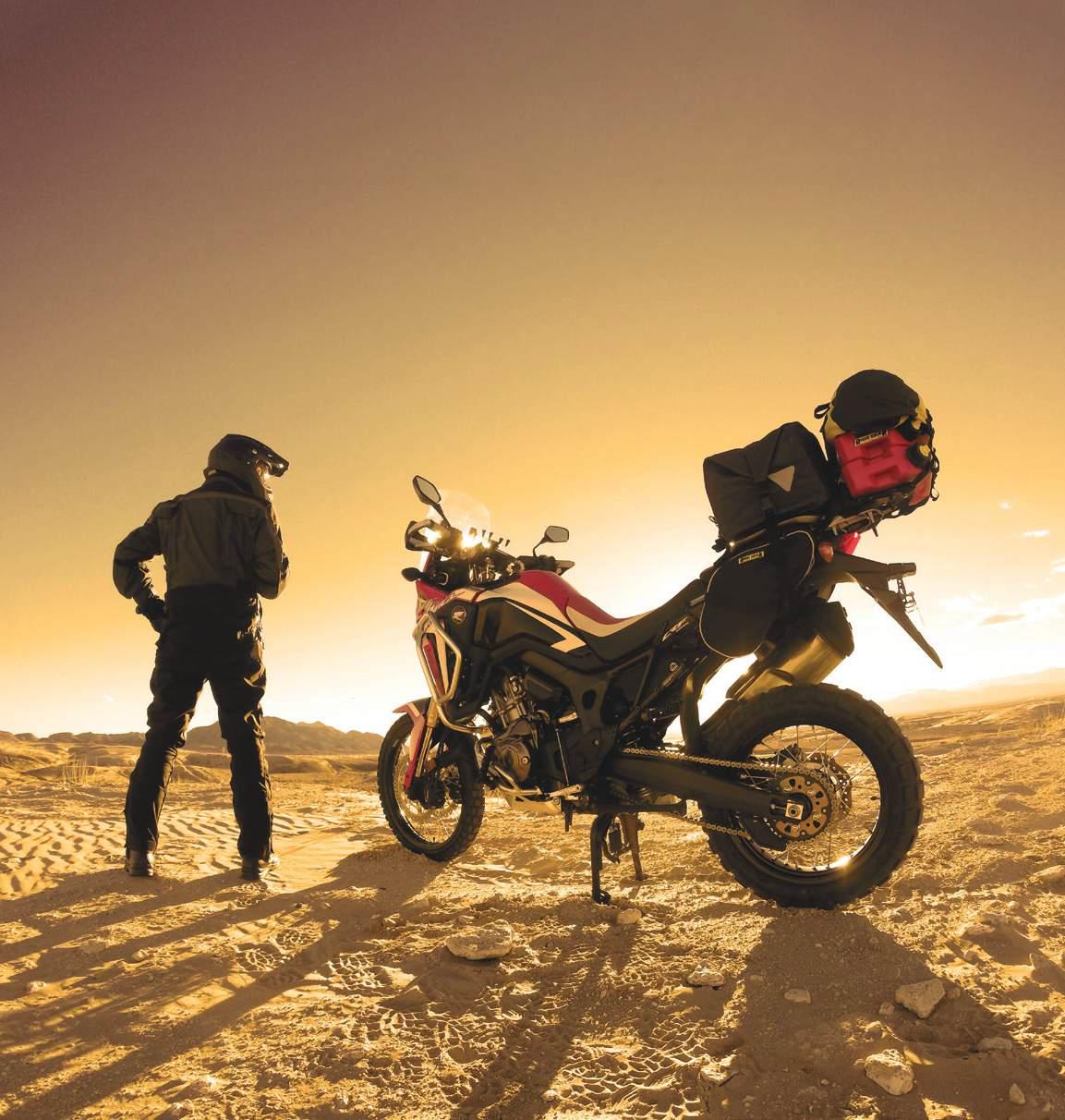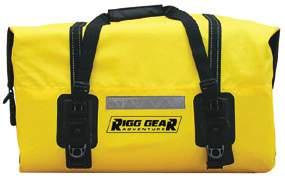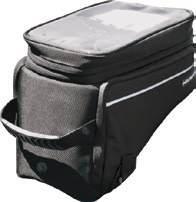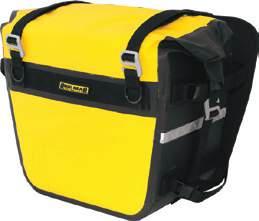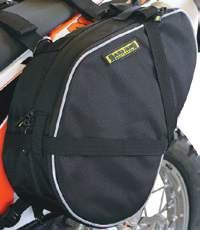




When the road comes to an end, knock it down a gear and attack the terrain. From sweeping roads, to knee deep beach sand or rutted out mountain ranges the new KTM 1090 Adventure R is the ultimate adventure partner. The powerful twin cylinder engine outperforms the toughest rivals. The new KTM 1090 Adventure R incorporates the innovation and technology we have developed from our experience and victories on the world’s toughest terrain. Meet the new definition of adventure. Meet the new class leader. Don’t believe us try it for yourself.


Tom Foster - Editor
like mechanical systems. I like understanding when I wind open the throttle a cable connected to that twist-grip lifts a slide in a metal tube, allowing more air to rush through a chute across a pool of flammable liquid, and the velocity of that air draws vapour from the top of the combustible liquid and the resulting mixture of gasses flows into a sealed chamber where it’s compressed and ignited. The ignition and resultant explosion is confined in such a way that the only possible direction for it to expand is downward, pushing a plug of metal which is connected to an eccentric shaft so that the motion of the descending disc of metal is converted into rotational movement.
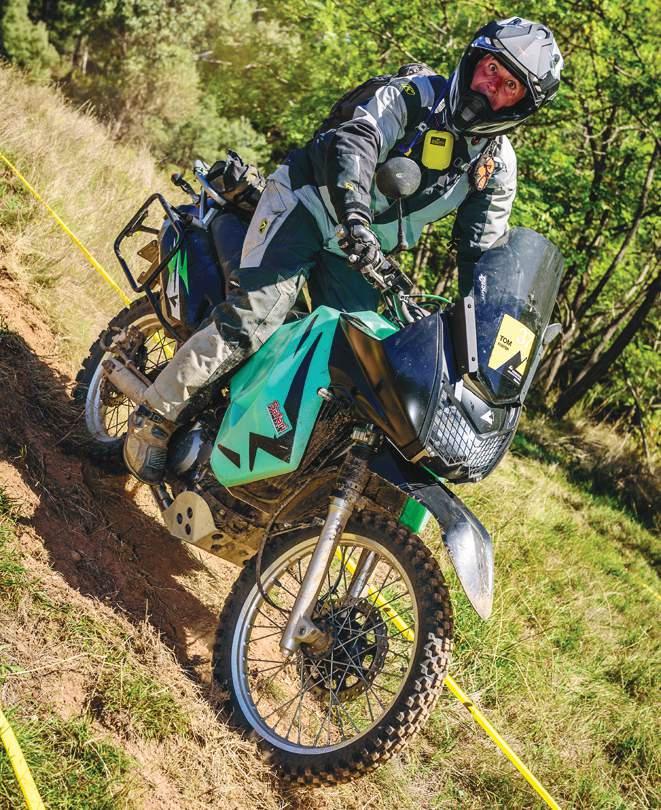
“It’s all a bit spooky, I think, and I don’t know if I can trust something I can’t see moving to do its work. ”
I understand that, and knowing that, being able to see that in my mind’s eye, helps me to get that system to perform well. I know I can adjust the velocity of the air through the chute, the ratio of explosive vapour and air in the mix of gasses and when the mixture is ignited. If for some reason things aren’t happening that way, I can reason why not, and have a fair stab at changing whatever needs to be changed. Electronics, on the other hand, are
a mystery to me. What the hell’s a transponder? Isn’t it something I strap to my bike to get lap times when I’m racing? How does a transponder take the action of my wrist and turn it into a measured amount of fuel mixture fired into the combustion chamber on my bike? And why does the fuel line need to be pressurised? It never used to.
It’s all a bit spooky, I think, and I don’t know if I can trust something I can’t see moving to do its work.
Another thing I love is the performance of modern motors.
Compared to the bikes of my youth, fuel-injected, electronically controlled engines and rider-aid systems mean I can now ride at speeds I never dared dream of while enjoying fuel economy I’d never have believed possible. And if I, as usual, make a cock of things while I’m trying to ride fast and hard, the electronic ‘brain’
of the bike will make allowances for me and, to use the vernacular, save my arse from annihilation.
Aren’t those two emotions opposites? How can I reconcile my enjoyment in both situations?
I just love motorcycles. I don’t care how old, new, fast, slow, technical or simple they are. If I’m carving through this amazing world of ours on a bike, I’m a happy bloke. About the only thing that makes me happier is seeing other riders who love bikes just as much. I see them on everything from clapped-out Posties to sparkling new, $30,000 dream exotica and they’re all grinning, just like me.
Life is good on a bike, and in Australia the riding – especially adventure riding – is about as good as it gets, no matter what type of bike you’re riding. Old or new, it’s all good.
Now I’m grinning again.

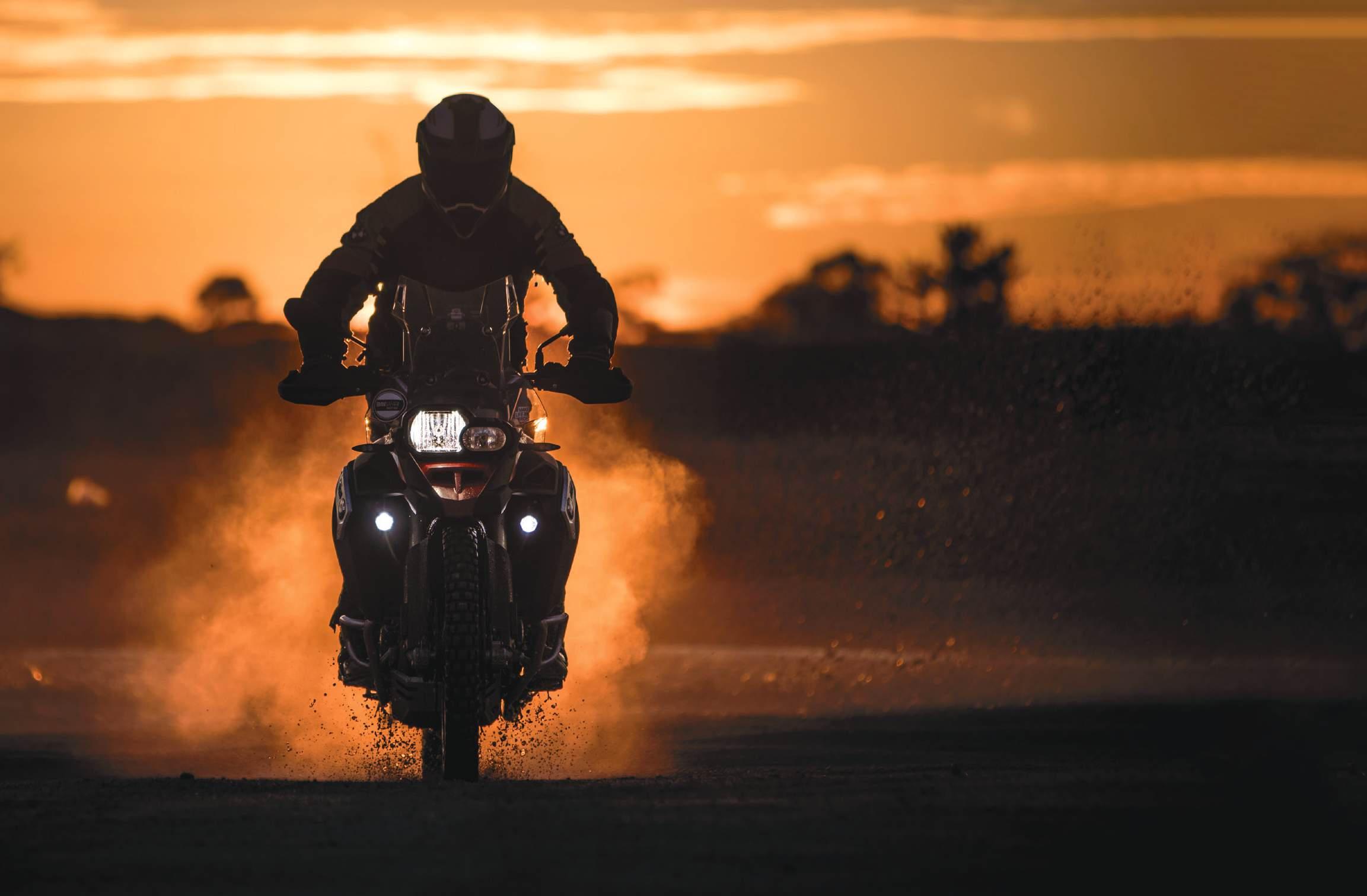



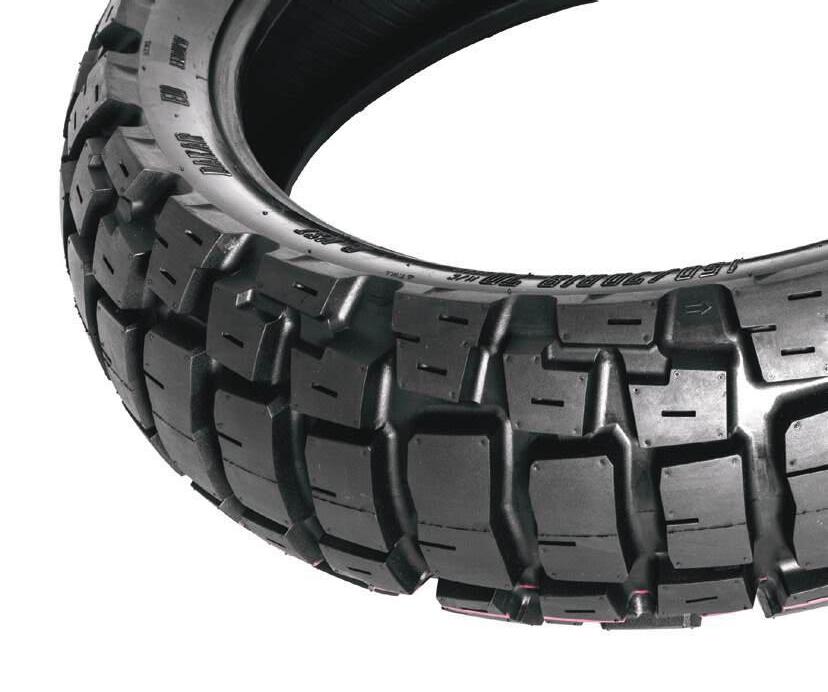

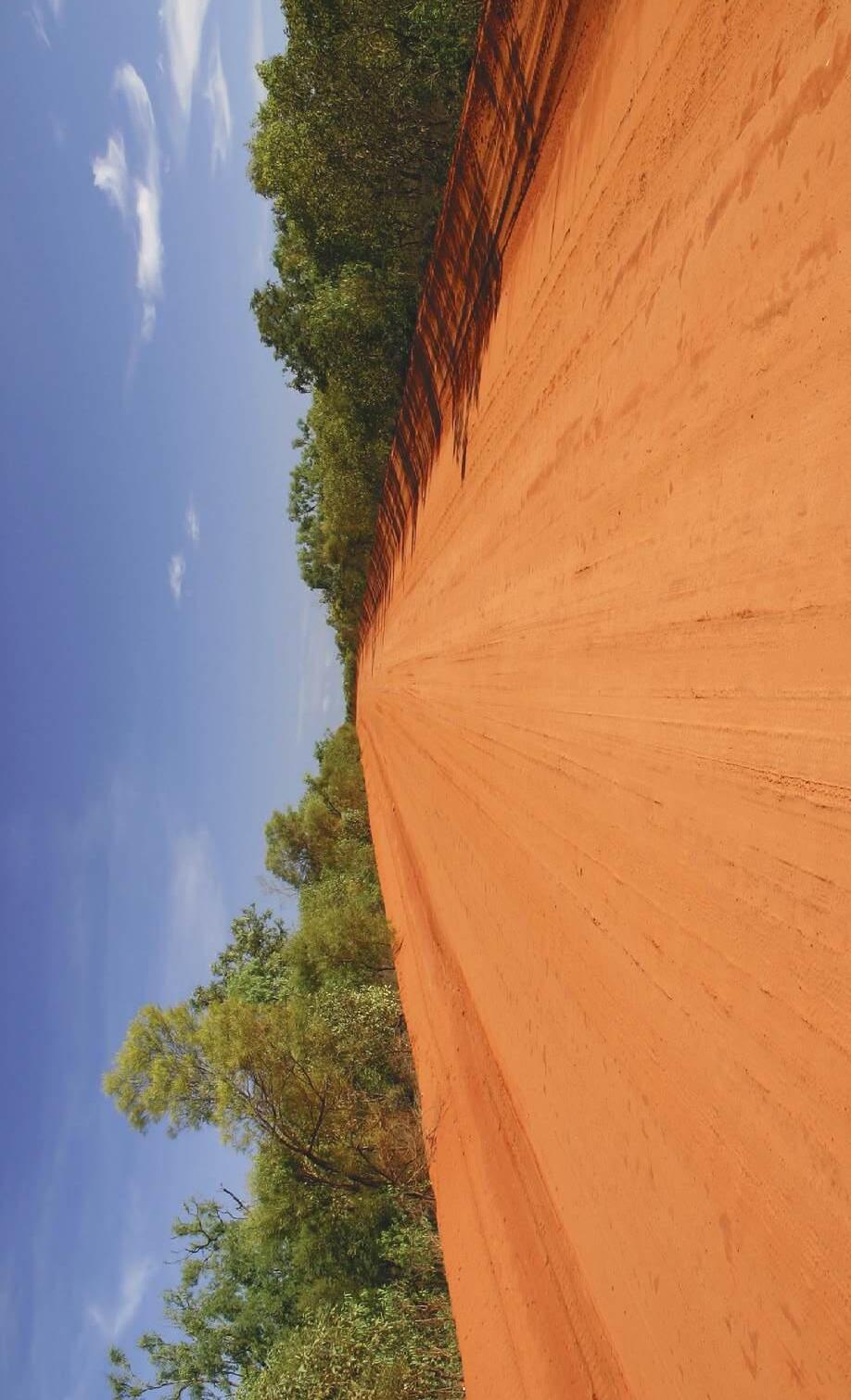



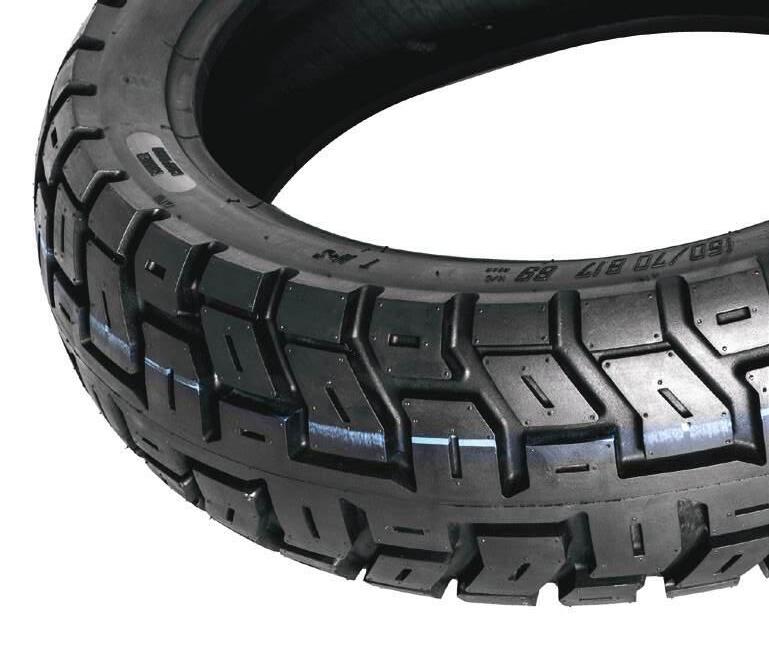
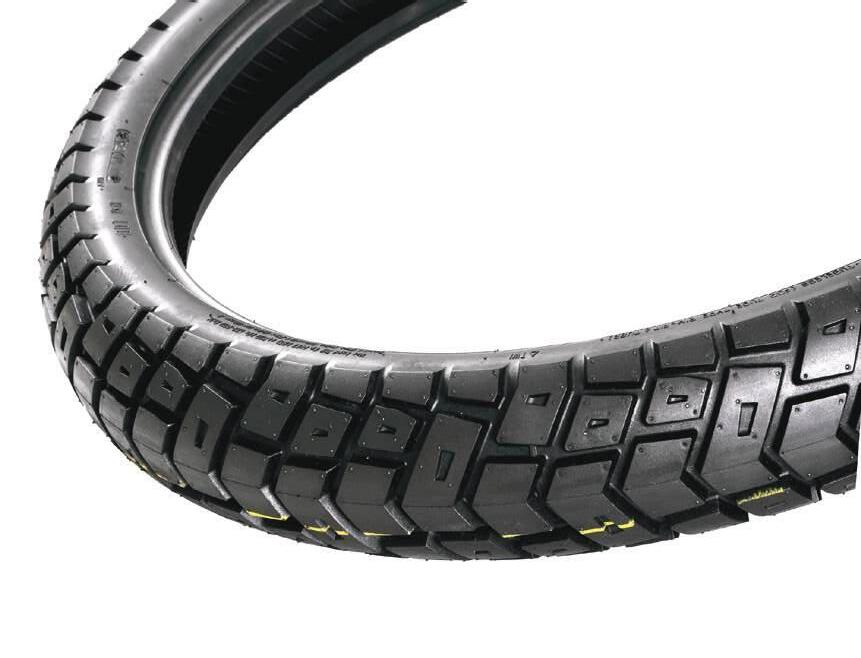
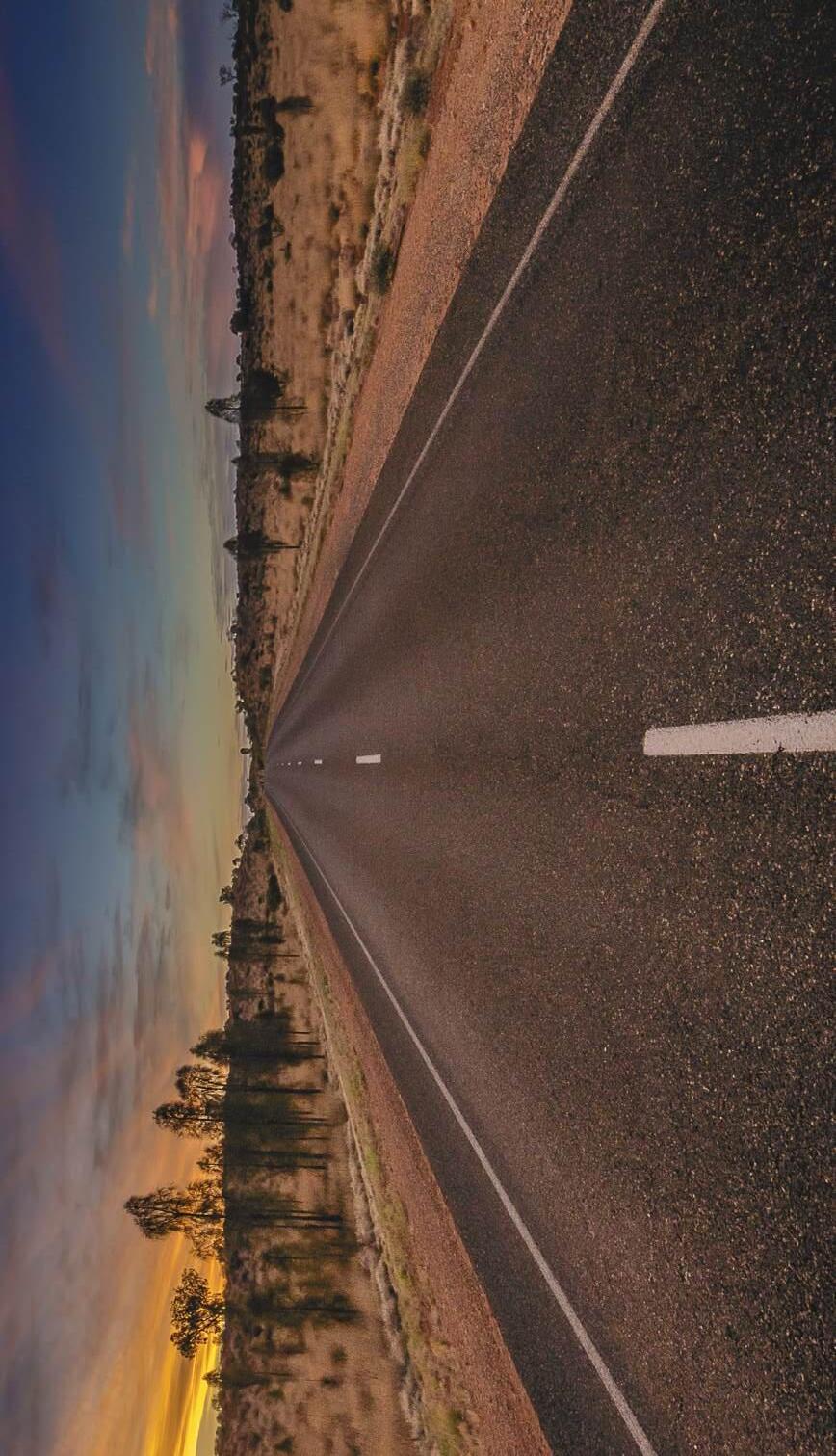


Publisher
Group
Phone:
Production Arianna Lucini arianna@maynemedia.com.au
Subscriptions
Accounts
Gnawali jeewan@maynemedia.com.au
Enquiries: Phone: (02) 9452 4517 Int.ph: +61 2 9452 4517 Int.fax: +61 2 9452 5319
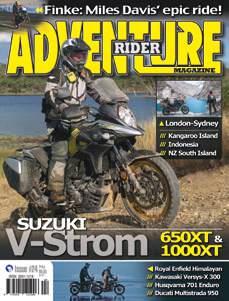
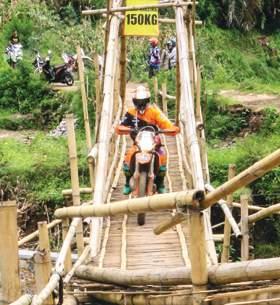
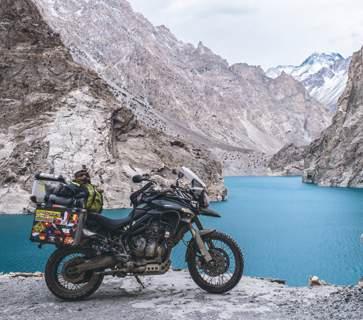
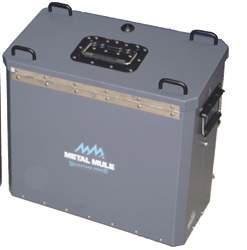

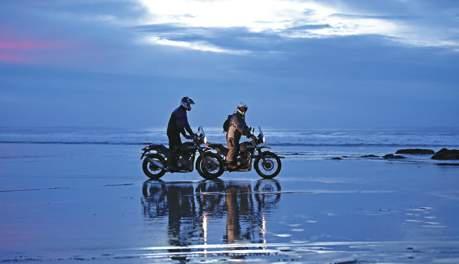
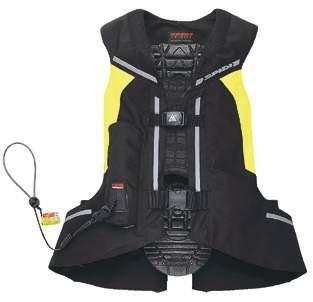
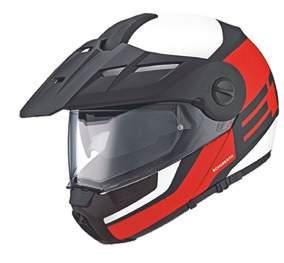

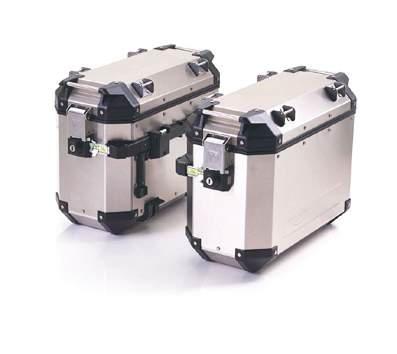
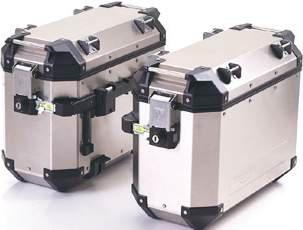
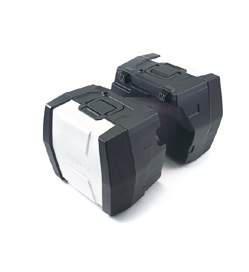
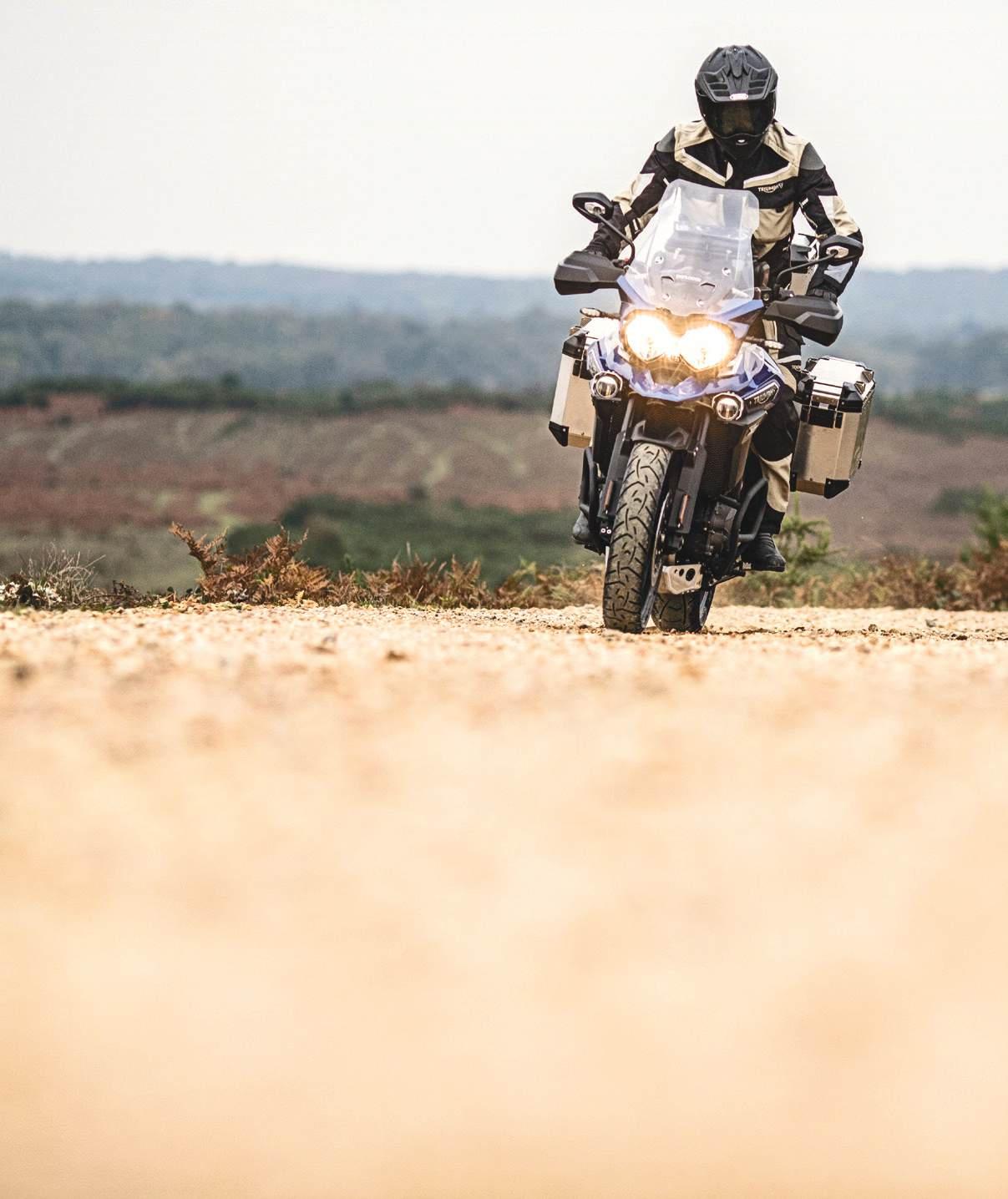
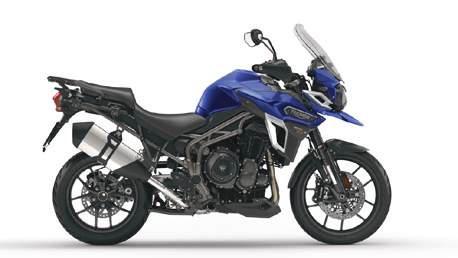
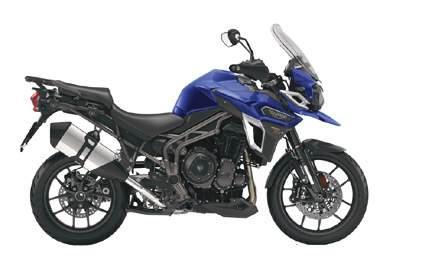

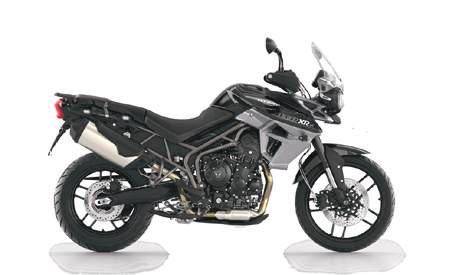
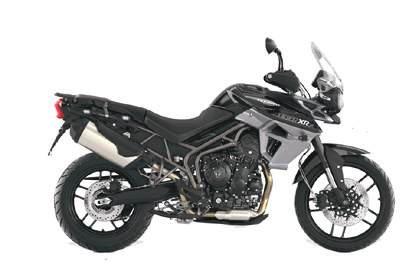
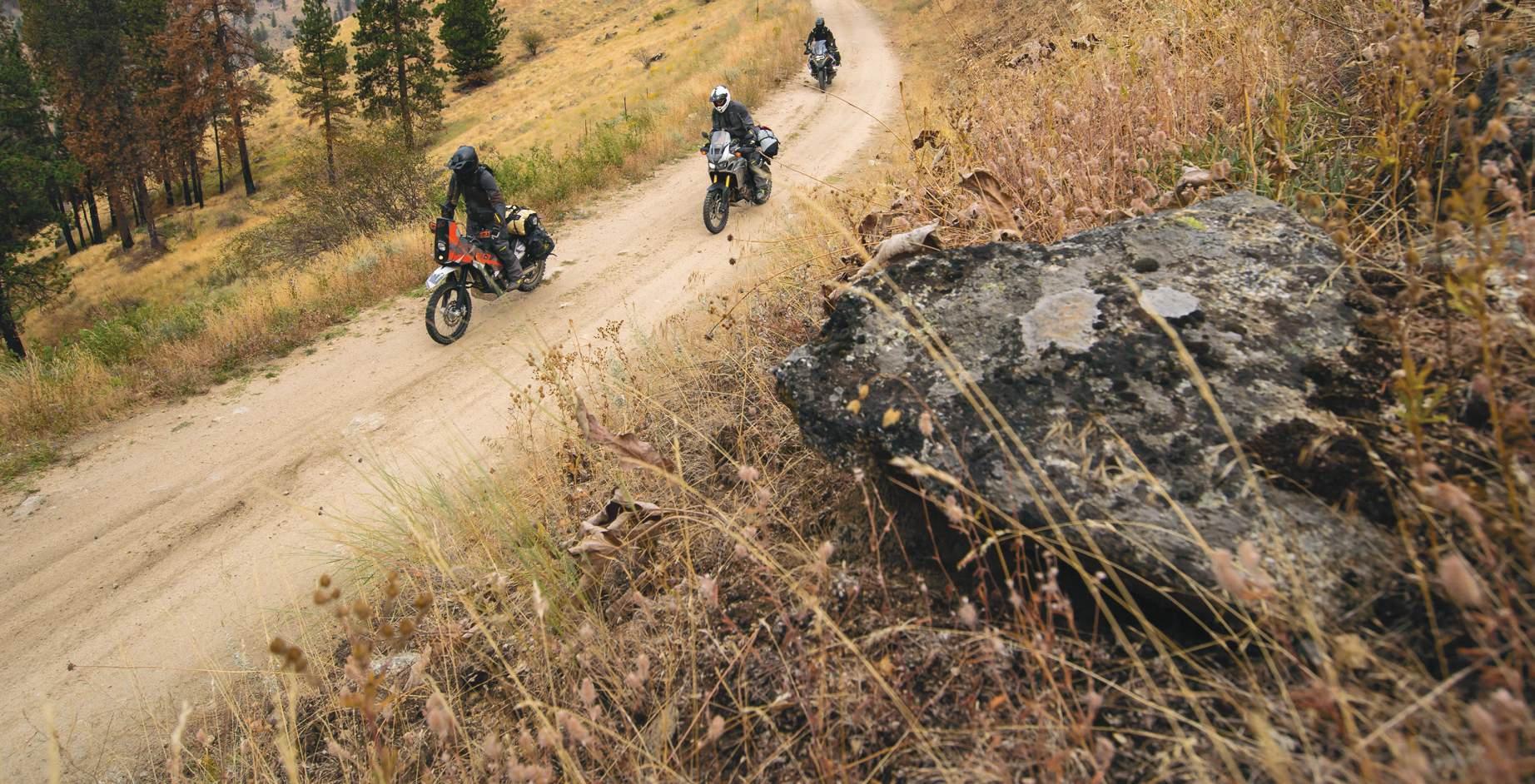

First time in Australia!
See our website for more details.
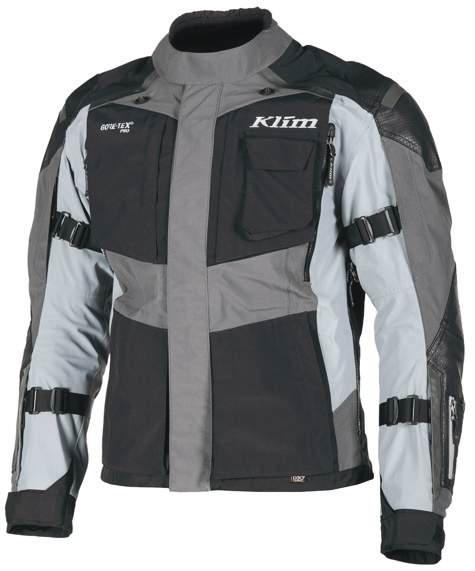
The Kodiak jacket by KLIM is a Euro designed and fit Jacket and Pant that will handle four seasons in one day keeping you comfortable and dry in every condition without having to add or peel off layers.
With 8 air vents to maximise air flow and our GORE-TEX® GUARANTEED TO KEEP YOU DRY® you will have all the confidence, you need on your next adventure.
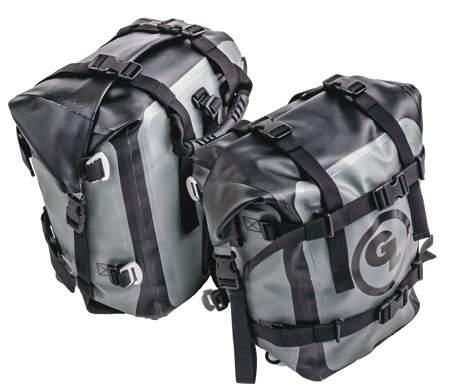
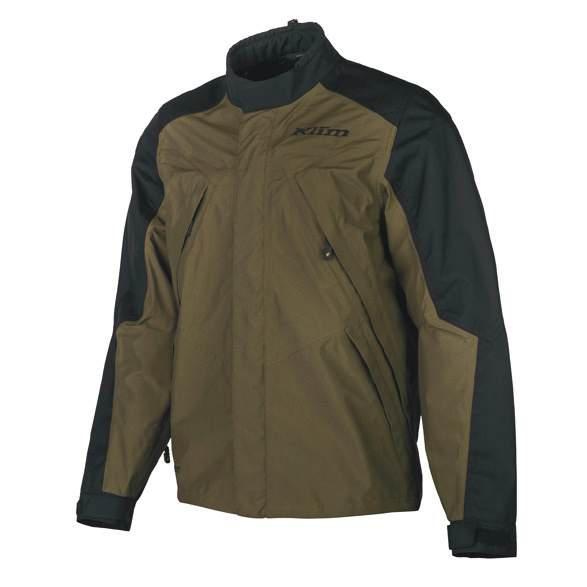
waterproof, extremely durable and functional off-road outerwear is the benchmark in all riding conditions comfort.
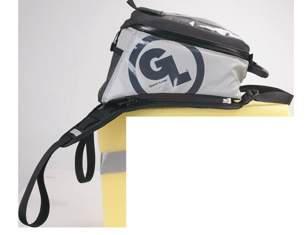
Fandango Pro Tank Bag
Adventure proof state of the art design with flexibility & electronics compatibility. Comes with waterproof dry pod

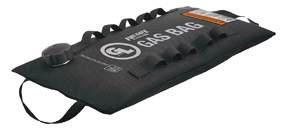
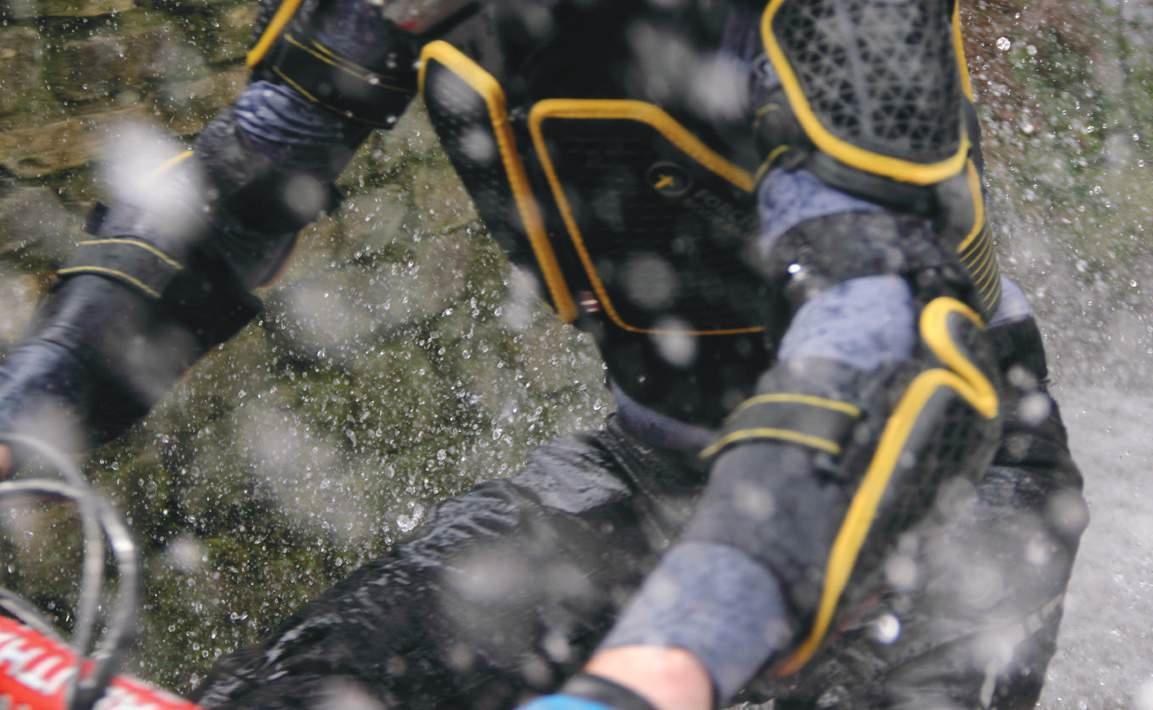
A rugged, stable, universally fitting, affordable, waterproof, rack-mounted motorcycle soft luggage solution for virtually all motorcycle makes and models.

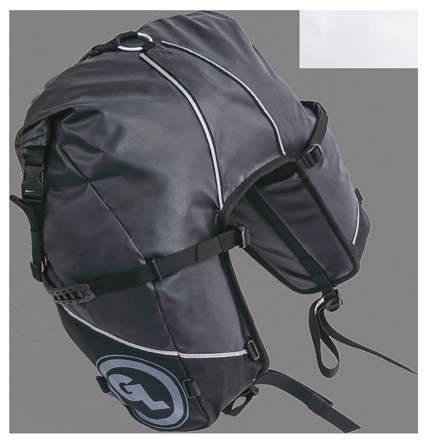
Gas Bag Fuel Safe Bladder
Holds 3.8 Litres - 7.6 Litres of fuel in a collapsible reinforced container that rolls up or packs flat when empty.
Roll Top
Features a convenient rolling closure that seals out water and dust while maintaining all the unique “go light, go fast, go far” features of our zipper closure Great Basin Saddlebag.
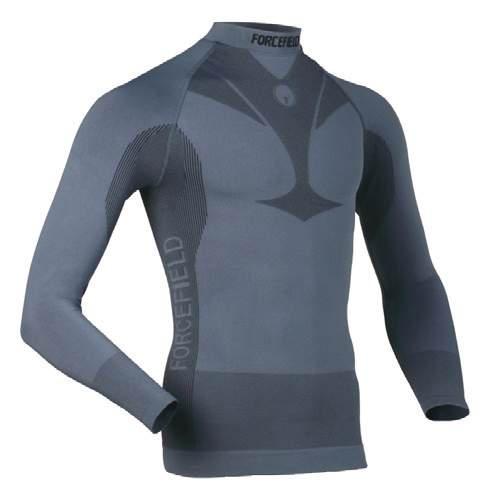
Technical Base Layer Long Sleeve Shirt
Created using BeCool™ fabric which allows airflow control and maintains body temperature while riding.


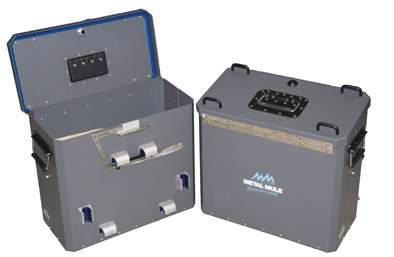

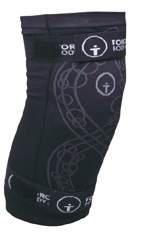
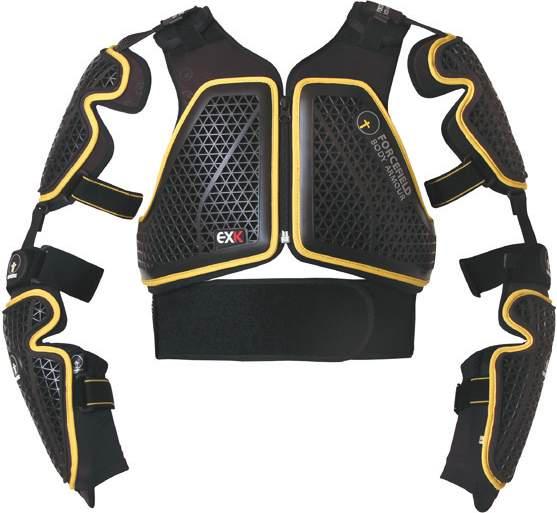
Forcefield Body Armour protects more professional racers than any other brand of armour. Comfort, airflow and body forming. This modular armour allows the rider to build the level of protection he or she wants.
Is lightweight, breathable and fully CE approved elbow or knee protection in a tube style sleeve fitted with dual adjustable retaining straps for extra security.

Metal Mule is the KING of hard luggage. Made in the UK and is by far the strongest, toughest hard boxes you will ever fit on your motorcycle.

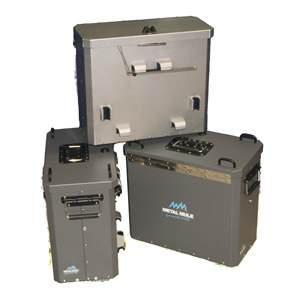
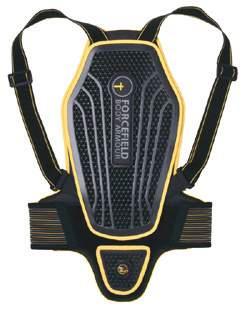
Designed to be soft, flexible and comfortable whilst still providing maximum impact protection.
Drop in and see us at: Unit 1/915 Old Northern Road, Dural, NSW 2158
Monday-Friday 9.00am - 5.30pm Saturday 9.00am - 1.00pm
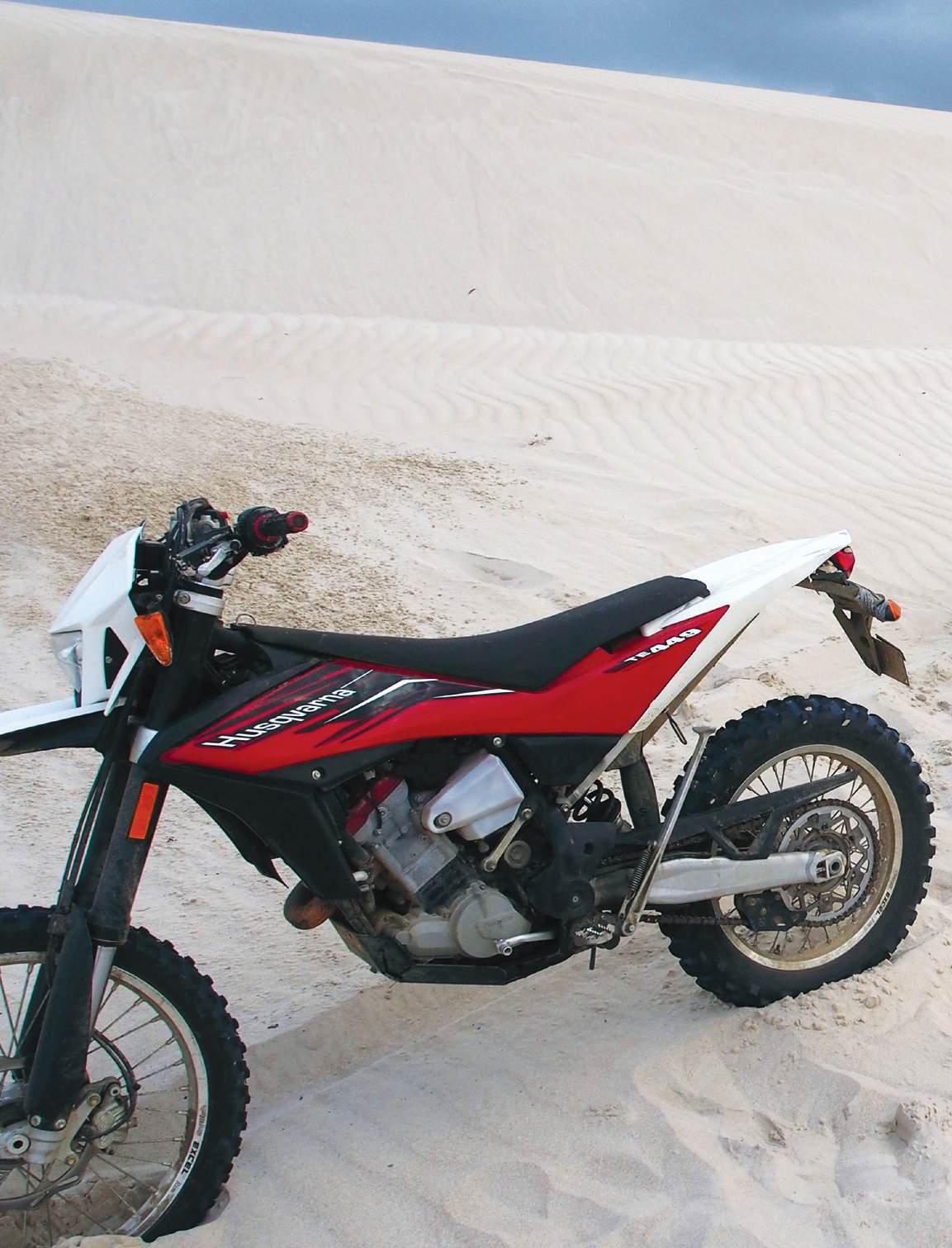
Kangaroo Island is Australia’s third-largest. It boasts 1600km of roads covering nearly 4500 square kilometres. Surely a lump of relatively untouched paradise perched just off South Australia would be made for adventure riding? There was only one way to find out. Andy Strapz loaded up and headed on over for a look see.
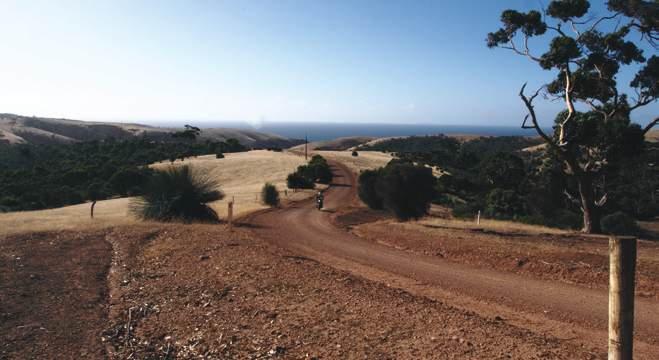
Main: The
Above: Well-groomed roads include fast limestone or fine, skatey gravel.
Below: Kangaroo Island, off the coast of South Australia, has 509km of coastline and is about 150km from east to west. Andy Strapz discovered it’s a great place to ride.
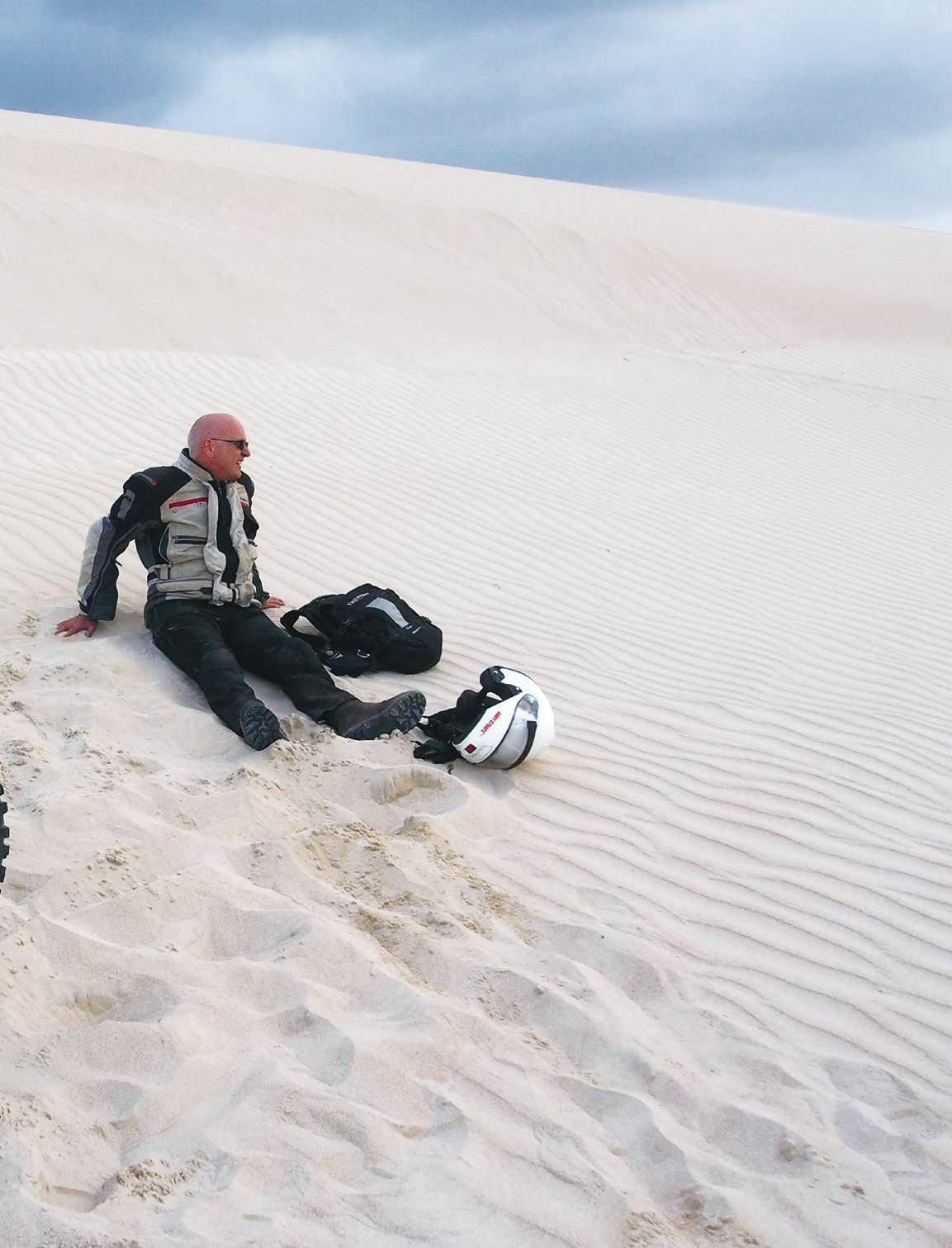
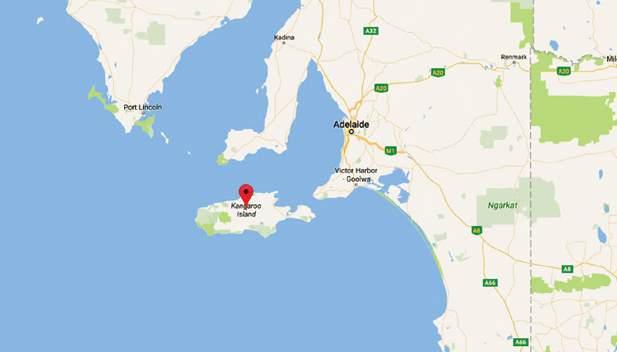
I’d been invited to take over a complete stranger’s house on Kangaroo Island for a week, so partner Janette – The Pillion In A Million – and I jammed riding gear in the van and drove into the night for a midday ferry from Cape Jervis, about 90km south of Adelaide. The ferry wasn’t cheap at around $400 return for two people and the van, and here’s a warning to the queasy: it can be rough at times, even though the crossing is only about 45 minutes.
The house was about 90 minutes drive from the ferry.
When I think of an island my mind conjures up a small disc of sand with a couple of palm trees in the middle and I thought I’d better know a bit more about this one.
The only bitumen road on KI (as the locals refer to it) is essentially a figure-of-eight loop road servicing the two distinct regions of the east and west ends. The rest is dirt. Our new mate had not only generously handed over a small farm, but it included all the toys you’d expect – an ATV, a dam full of yabbies and a DR650 amongst others. Pulling up loaded nets at sunset off the ATV, neck-oil in hand, was a true joy.
The island is geographically divided into two distinct north and south zones. The south faces the power of the Indian Ocean while the north is more docile and sheltered. The wild south has awesome, inspiring signatures of millennia of having the living crap smashed out of it by Mother Nature while the north is mostly rolling hills, peaceful bays and imposing bluffs.
Roads proved not to be the adventure paradise I’d envisaged, but were mostly moderately well-groomed dirt, either topped with iron stone, fine pea gravel u
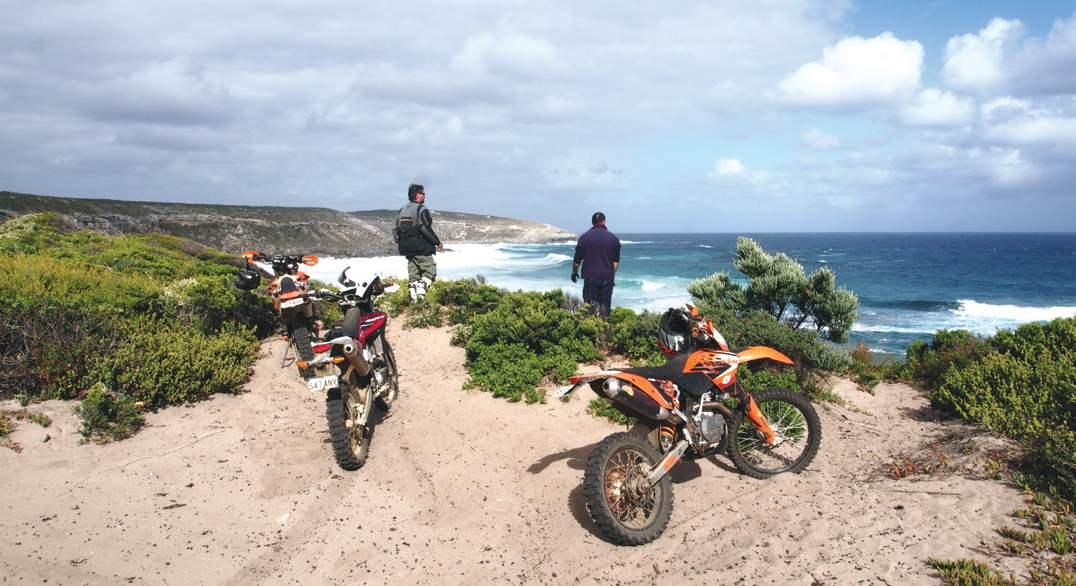
or a fast limestone. Most of the trails are locked away to protect the sensitive environment from the diseases nobbling the rest of the Aussie bush. There seems to be an attempt to create a sort of an ‘ark’, insurance against the ravages of foxes, rabbits and plant pests. Cats are next on their control list.
The mob who inhabited KI from the earliest human times buggered off north as the sea rose and cut off the island from the mainland. It was left undisturbed until 1802 when Matty Flinders sailed around the north side around the same time as a French dude, Nick Baudin, was checking out the south. At the time the Frogs and Poms were blueing in Europe. In what would become the Aussie way, they shared info, had a barbie and a few beers then went their own way, leaving parts of the coast with both French and English names.
Breaking out the DR650 we explored the dirt roads one- and two-up.
The steep, rolling terrain of the north coast is a series of gorgeous, smooth climbs and descents with gobsmacking views...and at dusk, kangaroos. Great mobs of ’em ran beside us and in groups along the road ahead. Yep, it’s called
Kangaroo Island for a good reason!
We chugged along at about 30kph in the stunning dusk light with views to the mainland stretching across our visors and our hopping escort guided us back toward the isolated, idyllic farmhouse. It was around this time the reason we were riding on KI dawned on me: ‘Just chill and enjoy the place,’ I thought.
It’s definitely a wonderful adventure without working like a navvie, sweating like a bastard and filling my boots (in both ways) from the top.
The shed widow and I dawdled along smooth, white roads or badly corrugated
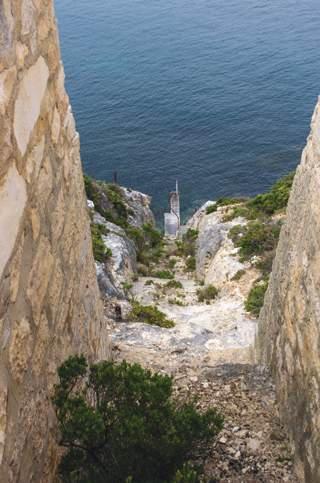
red ones checking out seal colonies and lighthouses with histories laid out by tough, tough people who had to haul everything they needed up massive cliffs. It was very grounding – and wasn’t that what we needed when having a break from the day-to-day grind?
You bet it was.
Keeping up, right?
Having said that, things changed... radically!
Our new mate had called a couple of his local comrades who were asked to ‘look after’ us. A fourth-generation local (name withheld for reasons that will become obvious) invited us to the south side for a gentle trail ride and to see a bit of the island not accessible to tour buses and hire cars.
Chuck-me-farley! A TE449 was lined up next to a couple country blokes standing beside EXC Katos. The Husky was pointed at. “You take that,” I was told. “My son doesn’t ride it much anymore.” I was dressed in leather bike jeans with road knee-pads, my trusty flip-front road helmet, my Held jacket and a backpack. My hosts were dressed in farm work clothes complete with elastic-sided boots. At the last minute they had a change of plan and put on motocross boots. I felt safe in the knowledge that the going would be relaxed.
We struck off along some fast firebreaks through to rocky and sandy 4WD tracks that progressively got rockier and sandier until we popped out at the

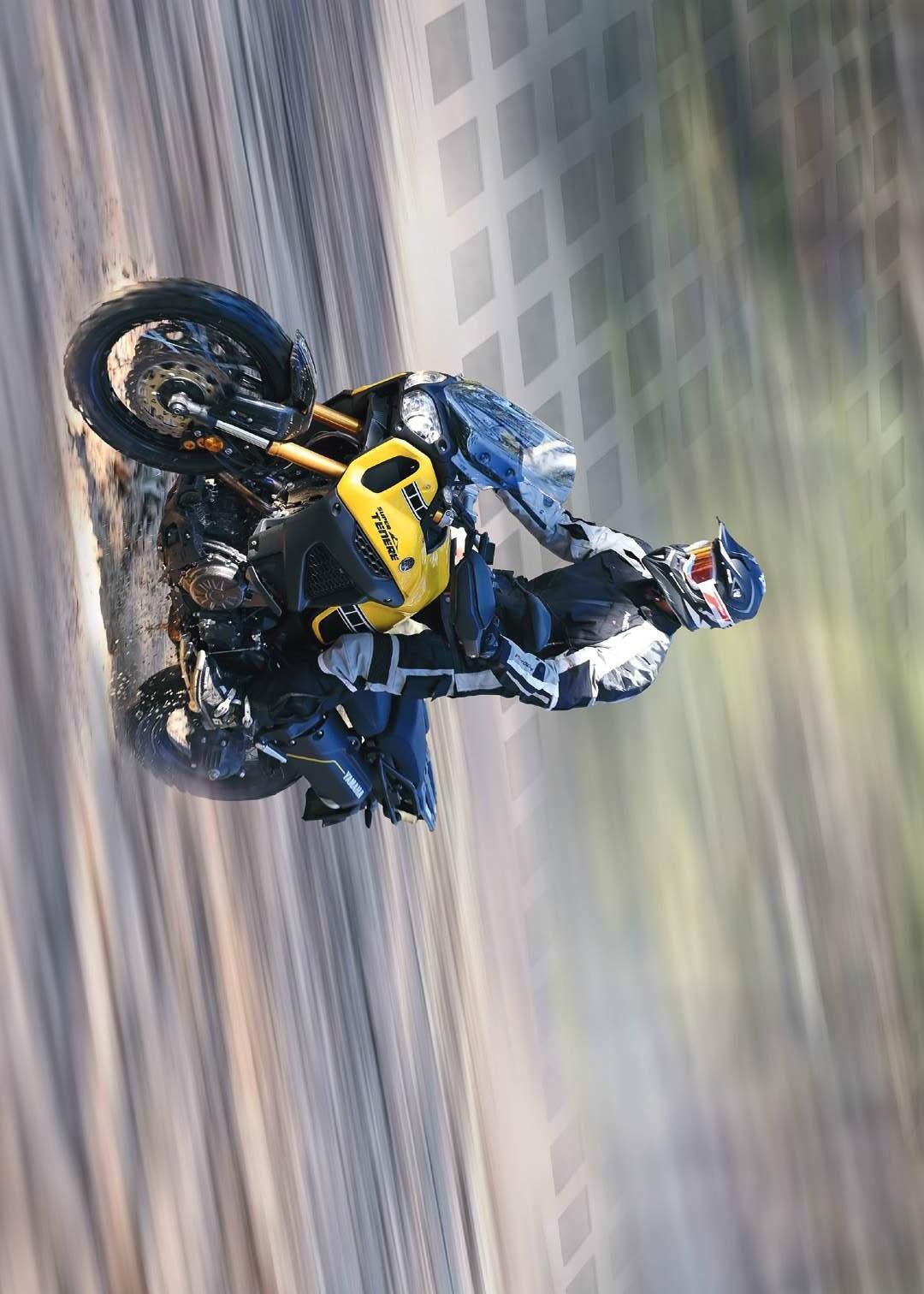

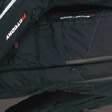

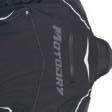




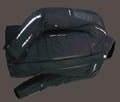
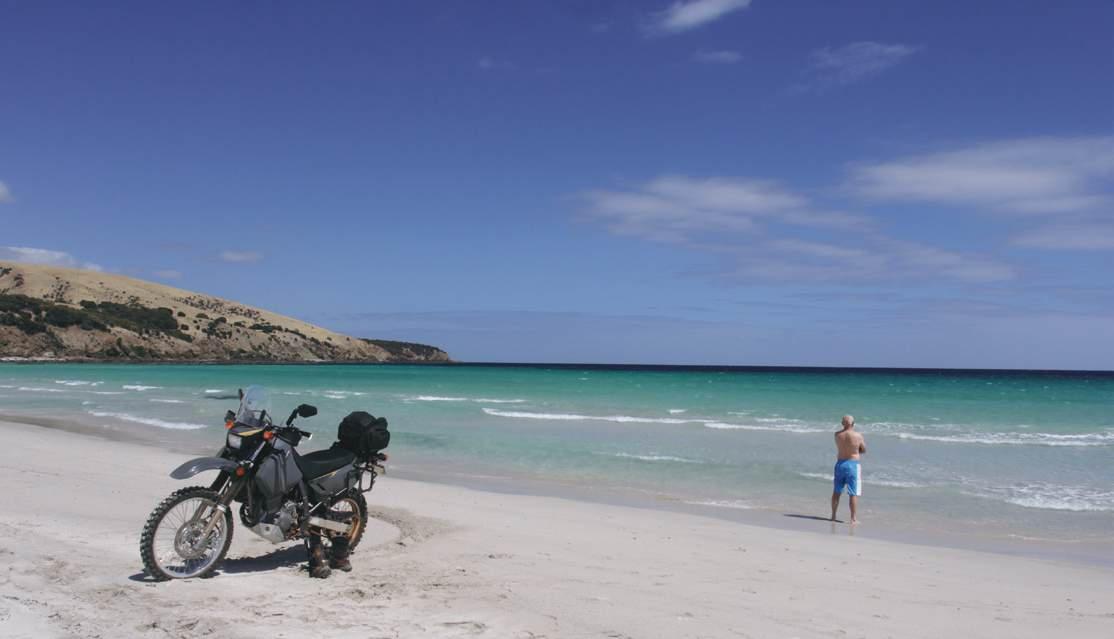
top of a set of dunes. We were overlooking a wild beach, watching the deepblue sea pounding the rugged coast with a massive swell.
The next leg looked much like a diagram of a brain made of limestone, various-sized loaves of bread and sand.
The guys buggered off as I put my off-road training into practice. I had no friggin’ idea where I was and I needed to stay in touch with them.
By this time we were lurching, grunting and bashing the bikes around gates and through thick bush and I was beginning to wonder what a hard ride would look like.
Back on the main road, Ol’ Mate launched his KTM onto the back wheel and headed east, stopped abruptly and turned on to a kangaroo trail. I thought it was a kangaroo trail. It quickly opened up into a track about two metres wide beneath a covering of mallee and tea tree. It was sandy, winding and undulating.
My confidence rose as I used the power and grip of the TE to launch out of soft berms and the occasional clutch tap to
Top: Take your briney togs and a good camera.
Right: Roads include fast firebreaks through to rocky and sandy 4WD tracks that progressively got rockier and sandier.
loft the front wheel a smidge on the way over humps.
As they say, ‘Pride comes before a fall’.
I was getting it, until a left-hander over a crest turned to thick sand and washed out the front. No one saw it so it didn’t happen...right?
Over the next crest the guys were parked (intentionally bogged in sand to prevent the bikes falling over) on more pristine dunes overlooking the ocean and a massive osprey’s nest on a rocky outcrop. The views were even more impressive.
“We’re not far from some really nice dunes,” announced the guys. “Bugger it. Let’s go for a look. We haven’t been there for ages. It’s a hoot!”
There was more dragging bikes through the scrub around gates until
we rode into a massive cul-de-sac of gleaming white sand. One bloke roared off up the 20-metre dunes on the left, the other sharper but lower to the right.
“F*%k!” thought the intrepid Strapz. I’d never ridden dunes and I had absolutely no idea how to get out of there.
I figured the steeper, lower dune to my right was the best option.
“Hit it with momentum and drive,” I coached myself.
This I did, and proceeded to launch over the top edge to get an eyeful of acres and acres of massive dunes while still in the air! I landed, gassed up and selected another gear…FIGJAM!
It was a free-for-all. There I was in fourth gear on the ’pegs of a TE449,
u
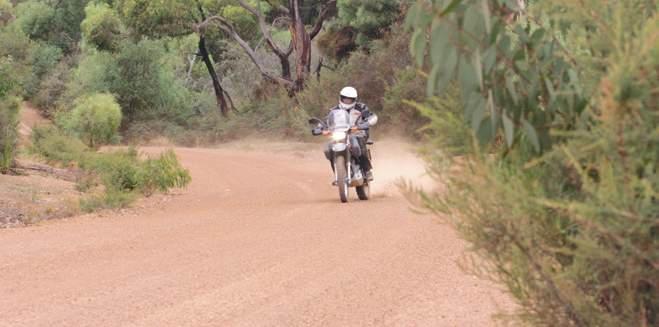
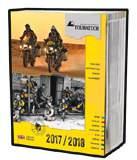
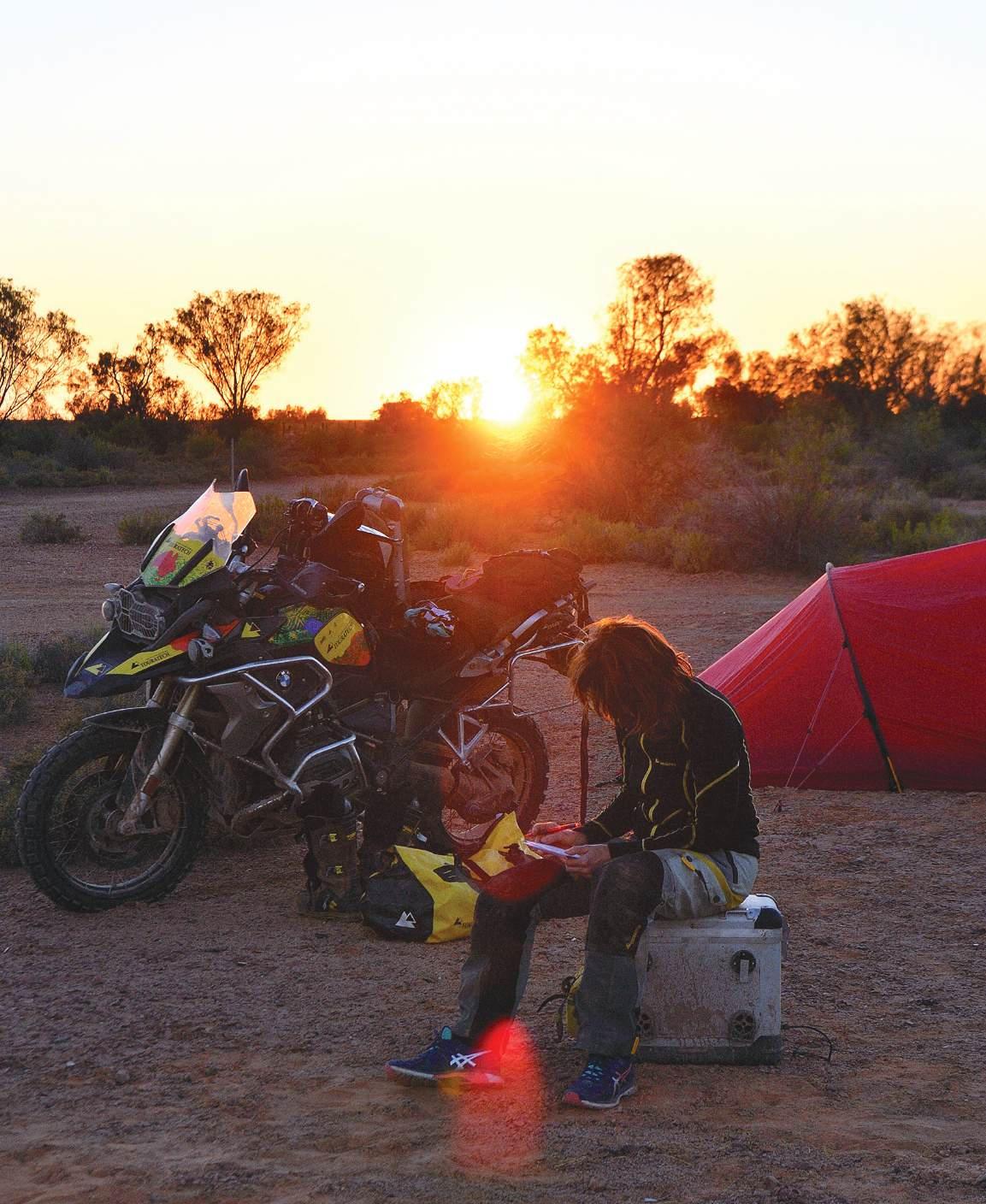



on the gas with the bike drifting, a little crossed up. Hurtling at a huge dune face I followed as one of the guys arced across this massive berm and back down. ‘This can’t be real!’ my brain roared at me.
As we rounded this monster a series of bigger dunes obscured the horizon. I slowed to get a ‘feel’ for the sand and get my bearings. Yep, this couldn’t be real!
I followed one of the roaring Katos diagonally up a dune face. He turned a left tangent as I speared into mid-air above a sheer drop on the windward side.
‘Shiiiittttt! That’s right dunes do that!’ the little know-it-all bastard in my head pointed out. ‘This is not going to end well,’ he offered.
I pressed the eject button but the bike followed me and pinned me to the sand, footpeg to shin. I couldn’t lift the bike or dig out my leg which had started to scream in pain. Luckily the guys saw me waving frantically and came back, lifting the bike between bouts of laughter while wiping tears away.
As I examined the cause of blood
flowing onto my Adventure Low boots my thoughts turned to the obvious: how could I get out of there with a really sore leg?
A concept my colleagues and I developed while doing my midwifery training, having to perform invasive tests on women, was The Nike Principle: just do it!
I sent up a great roost of sand, stood up on the ’pegs, grabbed another cog, then another, and off we struck, popping out on to the main road again via a different ’roo track in the direction of pizza, beer and an icepack.
What an amazing adventure, and one that will stay with me for a very long time. So will the scar on my shin.
As a destination, adventure riders need to go with a view that Kangaroo Island is a place of outstanding natural beauty, great food and good wine. Riders can enjoy lots of easy dirt roads and a wonderfully relaxed atmosphere, and any big or small bike will do. Take your briney togs and a good camera.
What a week! I’m going back. After I do the Simpson…I’m ready now!

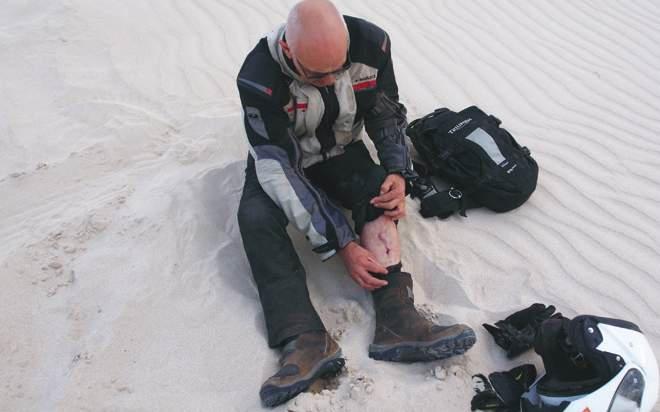
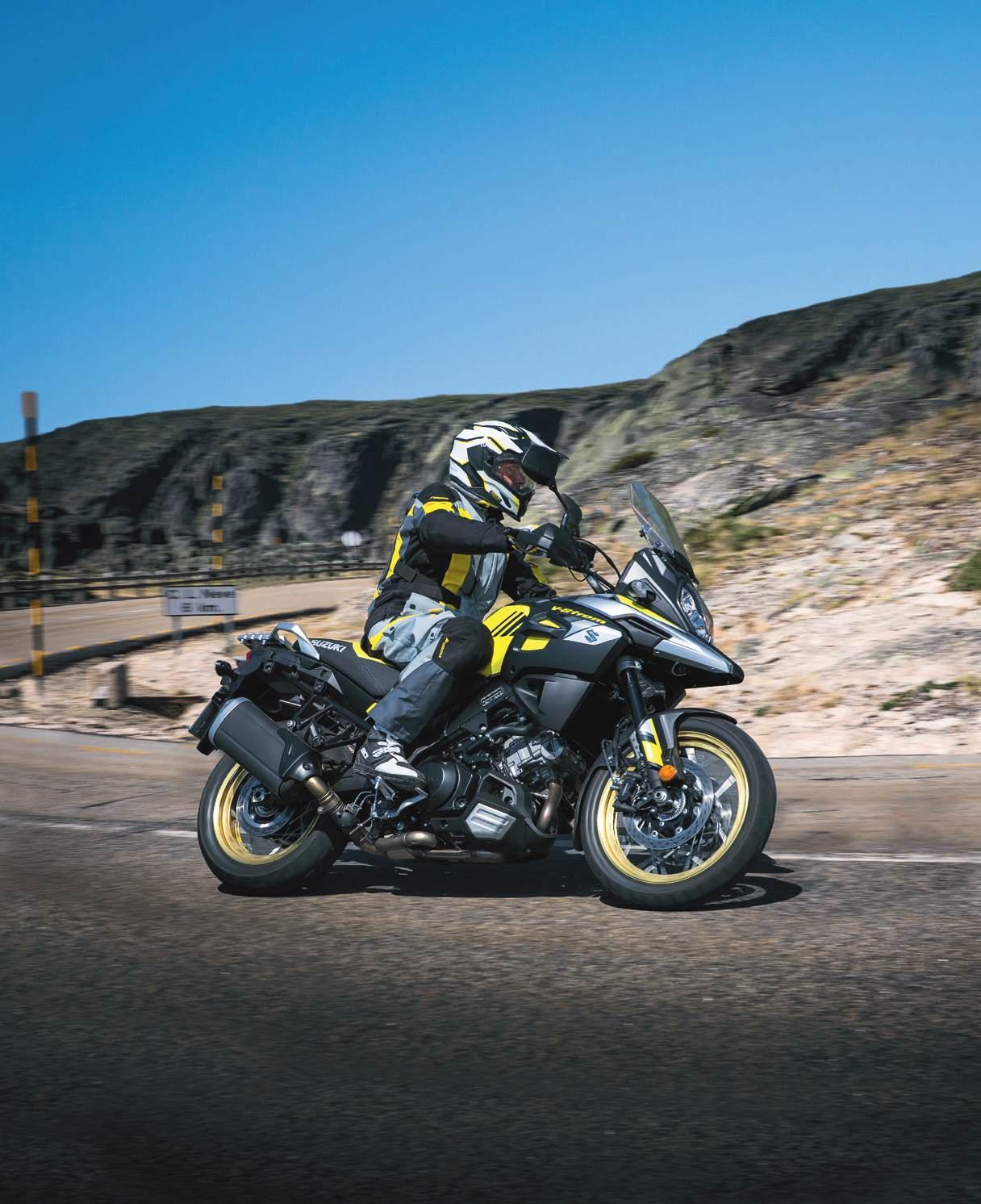













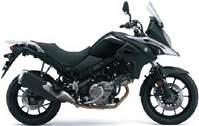





























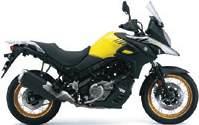
































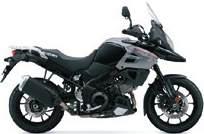












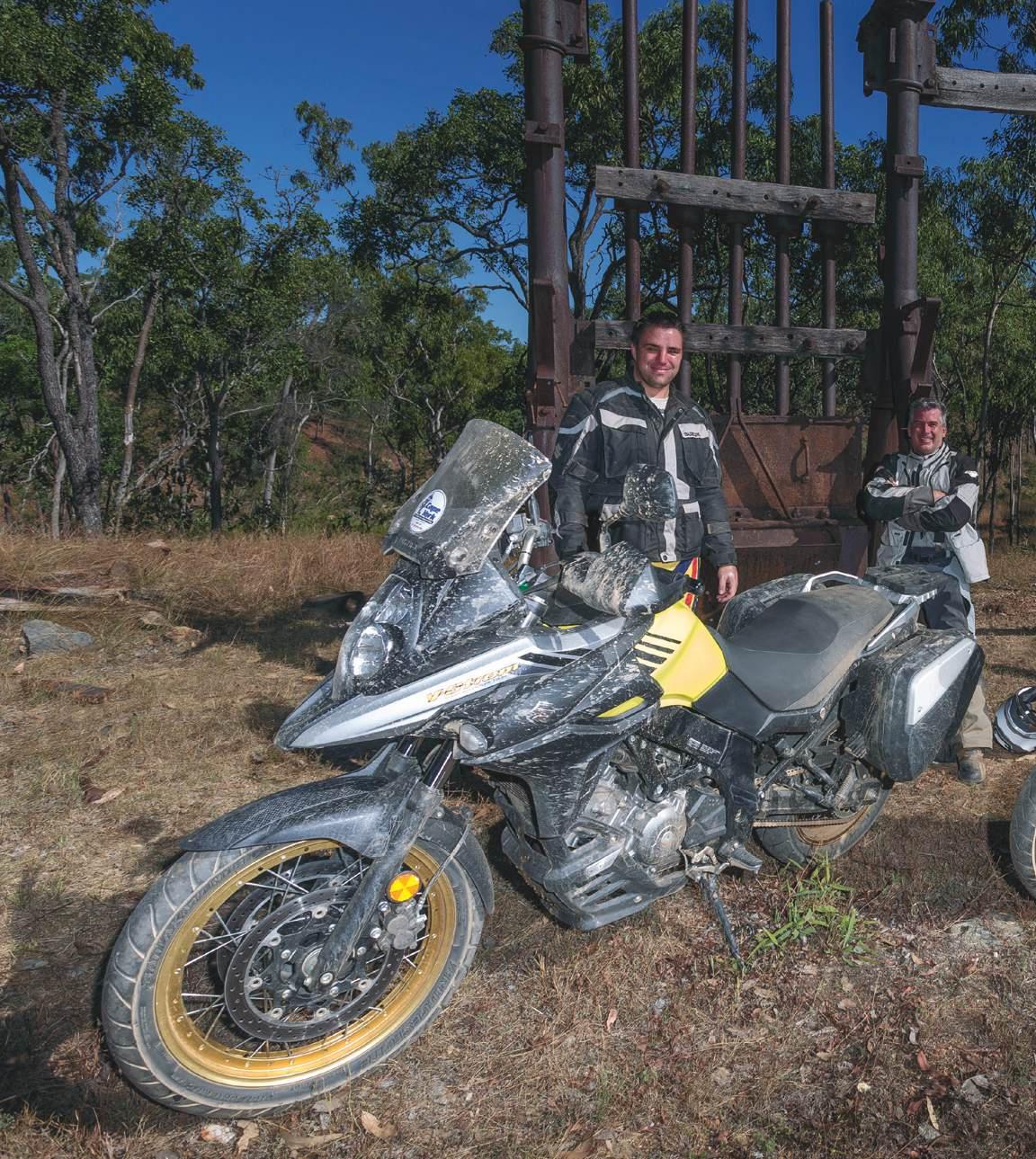
In a market crowded with bikes competing for the most horsepower and the highest level of complexity, Suzuki’s V-Stroms continue to offer a wonderfully easy-to-ride, ultra reliable adventure option.
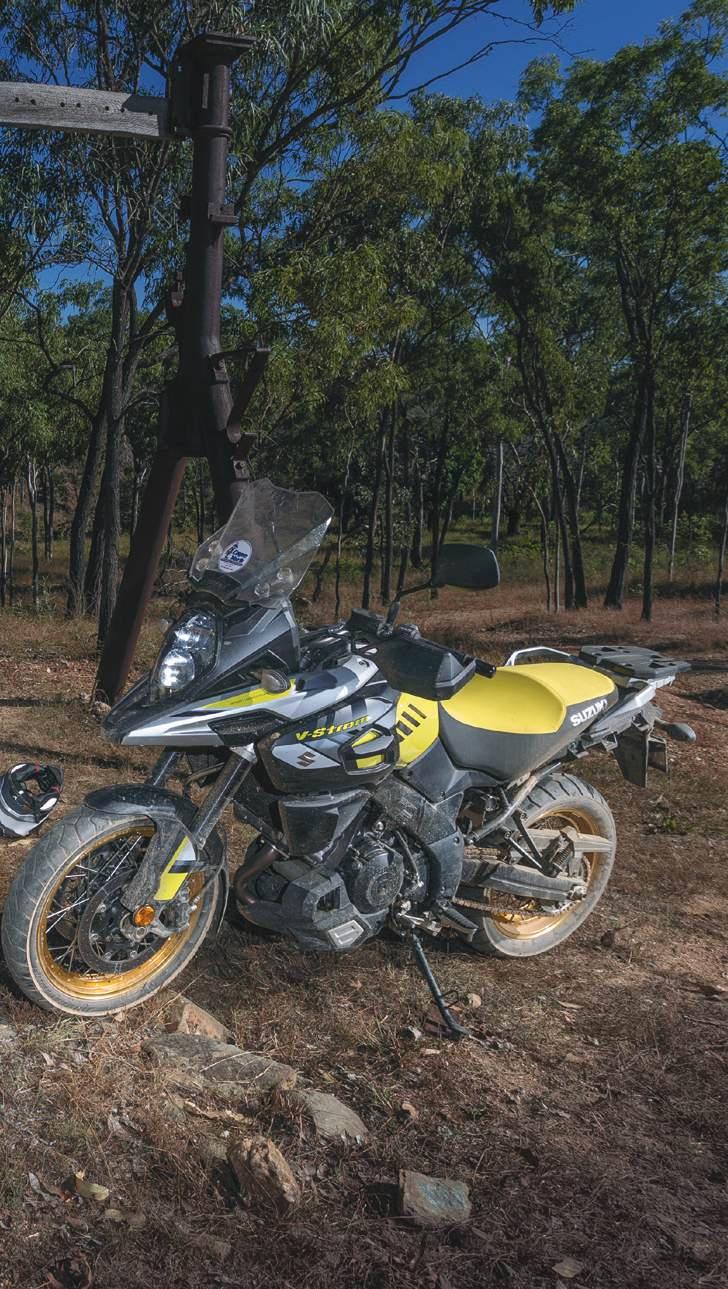
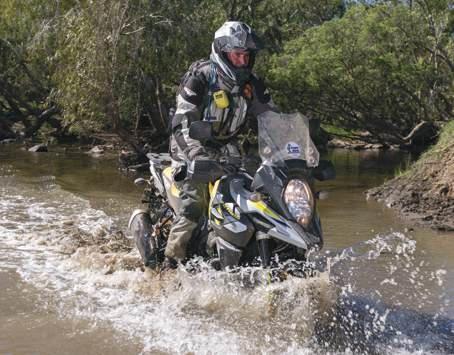
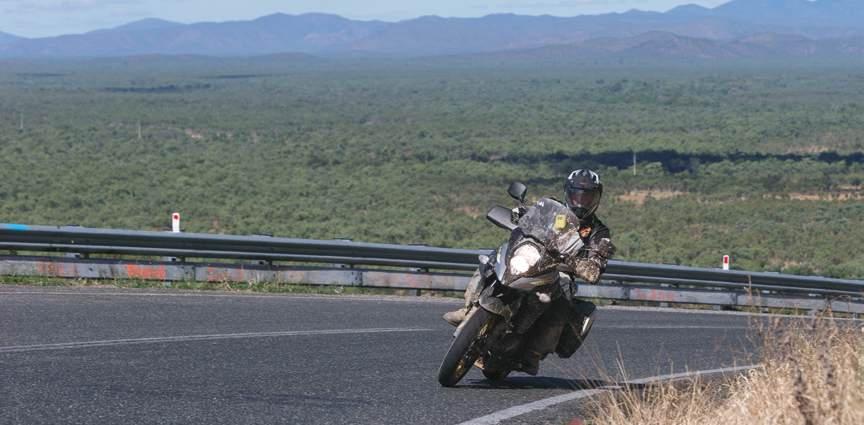
The latest incarnations of the good ol’ DL650 and DL1000 – we actually don’t know if they’re still called that, but we like the memories that go with the model designations – are an interesting breed. There’s some nice new features for sure, but we congratulate Suzuki on having the common sense to keep everything that was so great about the bikes in the first place. The signature V-twin motor and comfortable riding position, combined with incredible reliability and ease of ownership, have earned the V-Stroms a legion of fans. We think the new bikes will make all those existing fans smile and will bring in a whole heap of new supporters, especially among adventure riders.
First we have to ’fess up.
Main: Suzuki’s V-Strom 650XT and new 1000XT are amazingly capable adventurers, on- and off-road.
Above left: It was actually pretty amazing just how the V-Stroms handled the terrain while still running road-oriented tyres. The power delivery and strong torque of the 1000XT helped a lot.
Above right: Comfort levels on both bikes are high and well-suited to dealing with long distances.
Suzuki supplied a full range of V-Stroms for us to try, but we spent nearly all our time on the XTs. The spoked wheels and various add-ons like handguards and bashplates make them an obvious choice for any off-road riding, and that’s where the adventure usually takes us. Our comments will pretty much apply to the alloy-wheel versions as well, and the only thing we want to say specifically about the alloy-wheel bikes was we reckon they felt lighter. Suzuki told us in the tech presentation this was the case –by a couple of kilos – and that might’ve influenced us, but we really felt it was easy to throw the alloy-wheeled bikes around. We bashed them across some fairly shitty rock sections and showed
no mercy, and at the end of the two-day ride couldn’t see a single ding in any of the rims. We were very impressed by that, we can tell you.
Anyhoo, back in issue #11 we rode what was then the new 650XT and loved it. We loved the 1000 too, but it wasn’t an XT –Suzuki says the ‘XT’ stands for ‘cross tourer’ by the way. This year we rode the updated 650XT and a new, designated 1000XT.
The most obvious and striking update for the new V-Stroms is the colour. Suzuki has decided its off-road bikes are yellow, and therefore its off-road-focussed dualsporters should be too. We applaud the decision. Both 650 and 1000 are also available in Glass Sparkle Black, while the 1000 has a third option, Pearl Glacier White.
The yellow might be a bit lairy for some, but the more we looked at it the more we liked it. Each to his own, and buyers have a choice.
Looking beyond cosmetics, the liquid-cooled, fuel-injected, 90-degree, four-stroke V-twin is still providing the power, a light clutch and six-speed box feature on both bikes and drive is via chain. Traction control has three user settings, and, especially on the 1000, is still one of the best traction-control systems we’ve ever used. ABS is permanently on. There’s no option for riders to turn it off.
At first we were a little nonplussed by that, but the system is a good one that seems to have been designed to allow fairly aggressive braking, and given the nature of these bikes it’s unlikely they’ll be intentionally facing downhills where the ABS will be a hindrance. We didn’t strike any situation we couldn’t deal with during our ride in north Queensland.
Before we move on, we just want to tip our hats to Suzuki for the braking on the 1000XT. Holy mother of Dog those front stoppers are awesome!
Both the 650 and 1000 V-Strom now have a lower-swept pipe allowing panniers to fit really snug against the frame. The bikes are all able to take the panniers with only the addition of a bolt-on fitting to the rear footpeg mounts.
The main features to differentiate the XTs from the ‘standards’ are plastic ‘knuckle covers’ – we’d call them handguards – and bashplate, and wire, spoked wheels with tubeless rims. All models have low-RPM assist, Suzuki’s easy-start system, traction control, adjustable windscreen and 12-volt DC power outlet.
There’s a stack of accessories about to be released as we write this and we’ll update you on the website when we can.
For the newbies, the 650 V-Strom is available in a LAMS configuration as well.
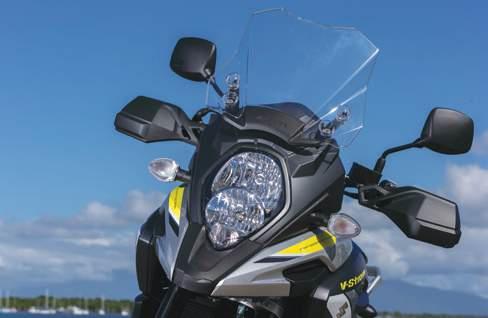
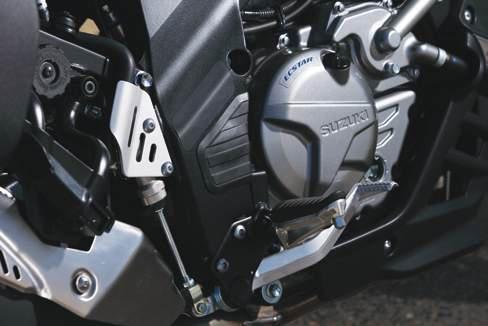
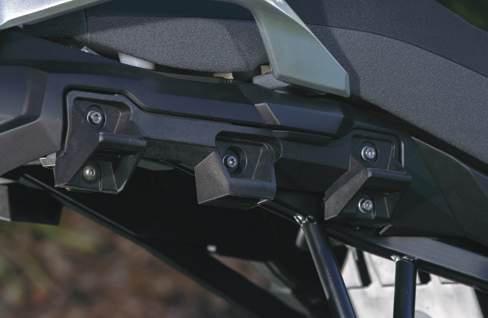
u
1: The headlight on the 2017 bikes is stacked instead of side-by-side as they were on the previous models.
2: As we’ve seen on so many new bikes, the footpegs are a little slim for those needing to stand for any length of time. The rubber inserts can’t easily be removed.
3: All the V-Stroms are ready to accept the OEM panniers. There’s a male piece that bolts to the passenger ’pegs to accept the bottom of the pannier, but the receivers for the upper mounts are moulded into the bike itself.
4: A low-slung pipe allows the panniers to fit very snug to the bike.
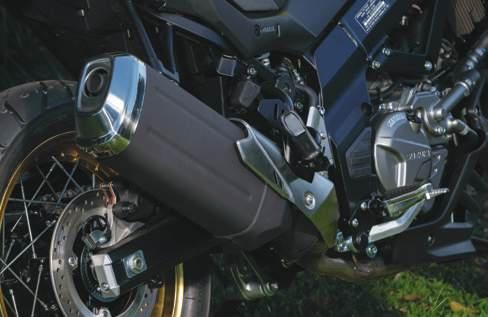

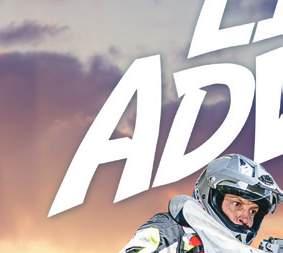
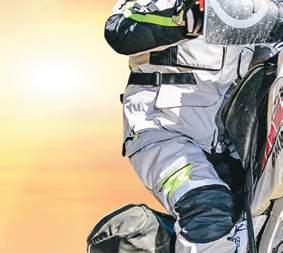
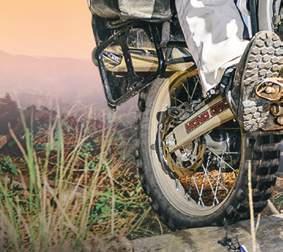



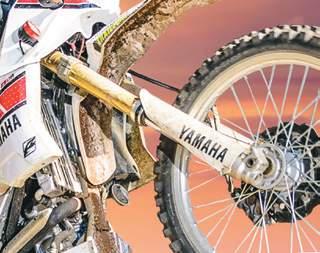
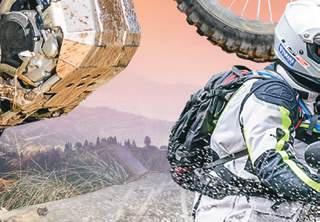
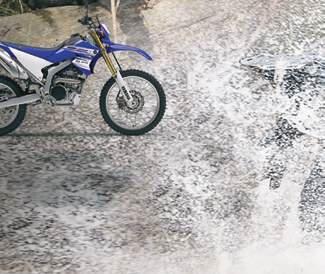






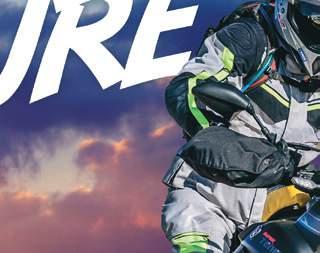
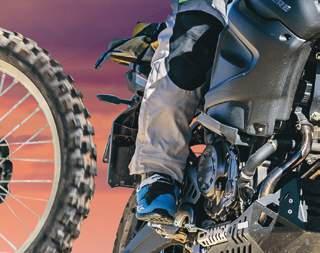
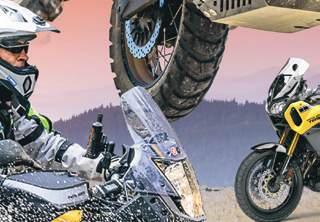
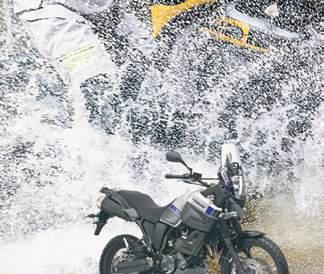


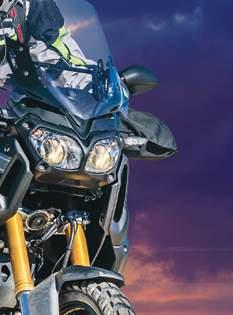
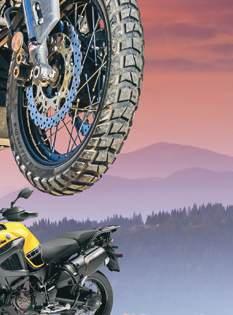

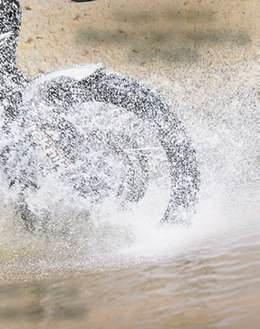



We’re going to separate the bikes and now we’re just going to talk about the 650XT.
The donk is the aforementioned V-twin with a 645cc capacity pumping out about 71 horsepower at 8800rpm. Torque peaks at around 62Nm at 6500rpm. They’re respectable figures for a 650, but they’re not going to have marketing people orgasming all over their organic wheat shots either.
Alongside those figures is an expected fuel range of something north of 450km from a 20-litre tank. That’s a fairly astonishing thought, and we’d much rather have a big fuel range we might need on every second ride in preference to massive horsepower that we’re probably just not good enough riders to use on any ride.
We had an absolute ball on the 650XT. On the road it loped along with its bigger stablemates without any difficulty whatsoever, the V-twin running as smoothly as anyone could wish and seeming to put little or no effort into the long, 130kph bitumen straights of FNQ. And when it hit the dirt, especially the sand and river crossings, it was a dancer, thriving on rider input and, surprisingly, being hurled full-tilt at unforgiving objects.
Our test bike had panniers and a top box fitted, and we especially loved the panniers. They fitted so tight to the shape of the bike we hardly knew they were there – until one of the other journos wandered up and asked for his four litres of water. He thought we were so sassy about the panniers we wouldn’t notice carrying around his fluid supplies for a day.
We didn’t.
We weren’t as comfortable with the top box, mainly because we just don’t like weight up high and behind the rear axle. When we said so, the Suzuki guys unclipped the top box and walked away with it. It was so easy to detach it must’ve taken all of about five seconds.
Still with the 650, we were very surprised at how well the suspension performed.
The right-side-up 43mm forks don’t offer any adjustment and the shock has rebound adjustment and a large wheel which can be turned by hand for preload. It certainly looked like a very basic set up. But damn! It sure worked well when the bike was pushed over tough terrain. It’s not like a motocrosser, but we were surprised at how well it coped.
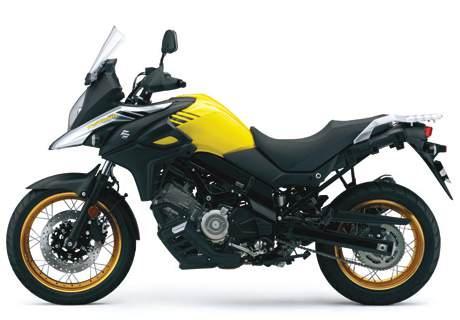
B IK e spe C s
Web: www.suzukimotorcycles.com.au.
Rec retail: $11,990. All prices plus on-roads and dealer charges
Engine type: Liquid-cooled, four-stroke, DOHC, 90-degree V-twin
Displacement: 645cc
Bore/stroke: 81mm x 62.6mm
Compression ratio: 11.2:1
Starter: Electric
Fuel system: Fuel injection
Lube system: Wet sump
Ignition: Electronic
Clutch: Cable-operated
Transmission: Six-speed, constant-mesh
Suspension front: Telescopic, coil spring, oil-damped
Suspension rear: Link type, coil spring, oil-damped
Rake/trail: 26-degrees/110mm
Final drive: Chain
Front tyre: 110/80R19M/C 59V, tubeless
Rear tyre: 150/70R17M/C 69V, tubeless
Front brake: Twin disc
Rear brake: Disc
Overall length: 2275mm
Overall width: 910mm
Overall height: 1405mm
Wheelbase: 1560mm
Seat height: 830mm
Ground clearance: 170mm
Braking is well and truly up to the mark and the gearbox may have been just a whisker notchy, but the bikes were all brand-spankers and will probably loosen up with some use. We’d be happy with the gearbox function as we found it, but we did feel it was just a little tight when we were thrashing it off road.
Part of the XT designation is the spoked, tubeless rims and Bridgestone BattleAx A 40 tyres. The rubber came in for some fairly unkind comments during testing because the general consensus was a more dirt-oriented tyre would’ve better suited the terrain, but they went everywhere and did everything. Of course, they were smooth and stuck well on the bitumen.
Finally, a new instrument display and 12-volt power outlet complete the 650XT’s incredibly easy-to-live-with layout.
We found it a well-thought-out, comfortable and, above all, fun bike to ride, on-road and off.
Overall capacity: Three litres
Fuel capacity: 20 litres
Kerb mass: 216kg
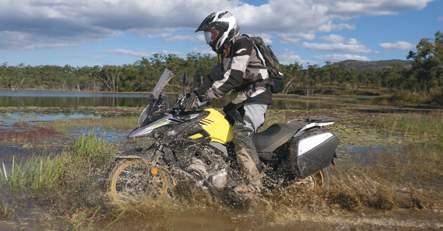
The 650XT was our pick for off-road. It felt light and was great fun in tough going.
A new dash is easy to read and the menus are uncomplicated.
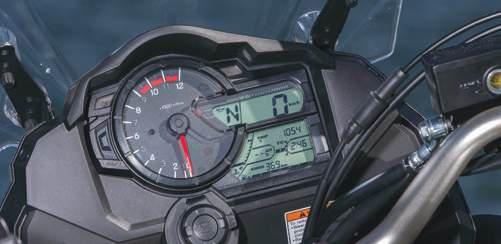
The 1000XT is a new model.
Suzuki’s V-Strom range included a 1000 before, but not an XT, and the additions are significant.
Along with the common features we’ve already listed, the 1000XT gets a new generation ABS from Bosch. Called the ‘Motion Track Brake System’, roll, pitch and yaw are all measured and taken into account in real time when the brakes are applied. There’s also a combined braking system that ensures a certain amount of rear stopper is applied to balance whatever’s happening at the front.
The 1037cc motor stomps out around 101 horsepower and just a smidge over 100Nm of torque, driving a chain through a sixspeed box, slipper clutch and Suzuki Clutch Assist System (SCAS) which ensures a light pull at the lever.
Close observers will be scratching their heads and wondering why the 1000 has what seems a modest horsepower figure, but check the torque figure. For slugging it out in rough going and holding big highway speeds at low revs, torque is a very important consideration.
Suspension is thanks to fully adjustable 43mm upside-downers at the front and a shock at the rear with only preload and compression adjustments available.
Up front is a new dash, tapered ’bars, adjustable screen and a 12-volt power outlet which we think was on the previous model, but these days is fast becoming a necessity.
It’s a funny thing about V-Stroms. Whenever we first start riding one we feel they might be a little bland. They don’t have the roaring, shit-your-pants scary power output that’s so fashionable at the moment, and they don’t have several different engine maps so people who can’t handle the power output can still ride them. They don’t have communication systems, tyre-pressure monitors, real-time electronically adjusted suspension, multicoloured, many-layered menus, heated seats, automatic gearboxes, self-repairing hymens or built-in 3D printers.
But they do have everything that’s important to a great adventure ride.
Both bikes have excellent, proven, reliable motors that go forever with only minimal maintenance. They’re comfortable, an absolute hoot to carve around winding bitumen roads, and they look after the rider incredibly well.
They’re so easy to ride. The bikes themselves make very little contribution to a rider’s fatigue, especially on long or physically demanding trips, and the seat height on both bikes will allow most riders to get both feet on the ground. On an adventure bike carrying luggage we think like that’s a very underrated consideration.


MotoGP
Phillip Island
Please visit us at our Pop Up Shop 1/82-84 Thompson Ave, Cowes (next to Aldi) from Oct 17–23. We will not be at the track! Open from 9am– 9pm every day!
These glasses are the solution for those of you who can see clearly out front, but struggle to see your INSTRUMENT console. IC Nearviews are riding glasses with bifocal lenses.

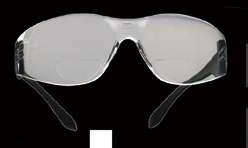
» Lightweight Frames
» Anti-Fog Coating
» Super Flexible
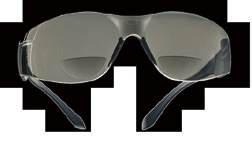
The arms are very flat so they fit comfortably between your head and helmet.
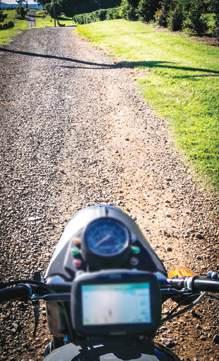
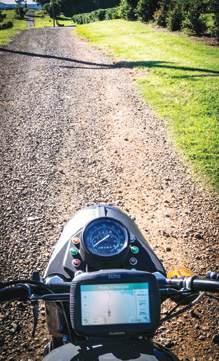
Positive Dust Seal (optional extra)

This dust seal clips in and out of the IC Nearviews frames and protects your eyes from fine dust, pollen and other irritants as well as peripheral light.

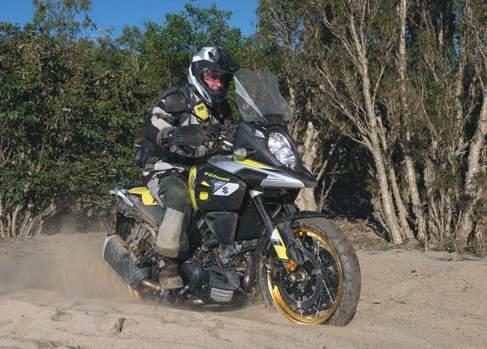
Above: There’s no problem with the 1000XT off-road thanks to its impeccable manners and slim feel. We felt the forks, even though they’re technically better, didn’t cope as well with a pounding as did the forks on the 650. On the road it went the other way. The USDs on the 1000 gave a noticeably smoother ride and kept the big girl flowing along nicely.
So once again, after starting off thinking the V-Stroms were a bit road-oriented, we had our eyes opened as they both charged around north Queensland’s river crossings, sandy washouts and long, long straight roads, destroying big distances in a comfortable and fuss-free fashion.
Better than just being easy, the V-Stroms highlighted all the best fun aspects of adventure riding without an overload of electronic mystery and control.

B IK e spe C s
The 650 riding position was almost cramped for our 175cm test rider. Almost, but not quite. The 1000XT’s riding position felt just a little more relaxed thanks to a slightly higher position and the tapered ’bars feeling just a little more open. Standing on the ’pegs was no problem, except the rubber-topped ’pegs themselves are too narrow, and the seats on both bikes felt great. We loved the panniers on the 650, and we loved how both bikes felt smooth, slim and easy to manoeuvre. The 1000XT obviously had more motor and felt heavier, but we were surprised that it didn’t feel as big a step up from the 650XT as we’d expected.
Whether or not we’d climb on a V-Strom for our next adventure is a no-brainer.
Hell yes, we would, and we’d be guaranteed of having a great time.
But to choose between the 650XT and the 1000XT?
That’s a tough one.
If it were to be a long-distance adventure, especially if it included a substantial amount of bitumen, we’d grab the 1000, snap on the panniers and head off, looking forward to that superb braking, the fine adjustment of the forks and a motor that seemed to cruise at illegal speeds with so little effort we’re a little surprised it doesn’t have cruise control to help avoid speeding infringements.
If the going was to be rough and mainly off-road we’d grab the 650, snap on the panniers and hurl ourselves at every obstacle we could see, confident the bike was loving the challenge as much as we were.
We’ve left the most amazing part for last.
The 650XT will retail for $11,990 plus on-roads. The 1000XT $16,490.
Those prices are nearly as un-fricken-believable as the bikes themselves.
Web: www.suzukimotorcycles.com.au.
Rec retail: $16,490. All prices plus on-roads and dealer charges
Engine type: Liquid-cooled, four-stroke, DOHC, 90-degree V-twin
Displacement: 1037cc
Bore/stroke: 100mm x 66mm
Compression ratio: 11.3:1
Starter: Electric
Fuel system: Fuel injection
Lube system: Wet sump
Ignition: Electronic
Clutch: Hydraulic
Transmission: Six-speed, constant-mesh
Suspension front: Inverted, telescopic, coil spring, oil-damped
Suspension rear: Link type, coil spring, oil-damped
Rake/trail: NA
Final drive: Chain
Front tyre: 110/80R19M/C 59V, tubeless
Rear tyre: 150/70R17M/C 69V, tubeless
Front brake: Twin disc
Rear brake: Disc
Overall length: 2280mm
Overall width: 930mm
Overall height: 1470mm
Wheelbase: 1555mm
Seat height: 850mm
Ground clearance: NA
Overall capacity: 3.5 litres
Fuel capacity: 20 litres
Wet weight: 233kg
A huge thanks to Suzuki Australia for inviting us to enjoy these great bikes in this fantastic setting. An equally big thanks to Roy Kunda at Cape York Motorcycle Adventures for a brilliant logistical and guiding effort, and Brendan Bell and Andrew Gosling for excellent video and photographic support.

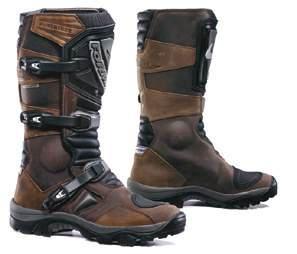
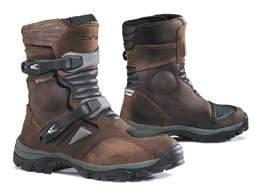
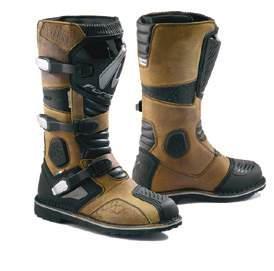
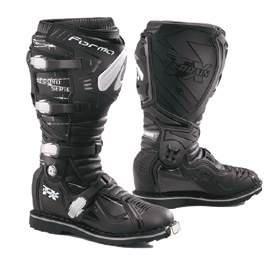
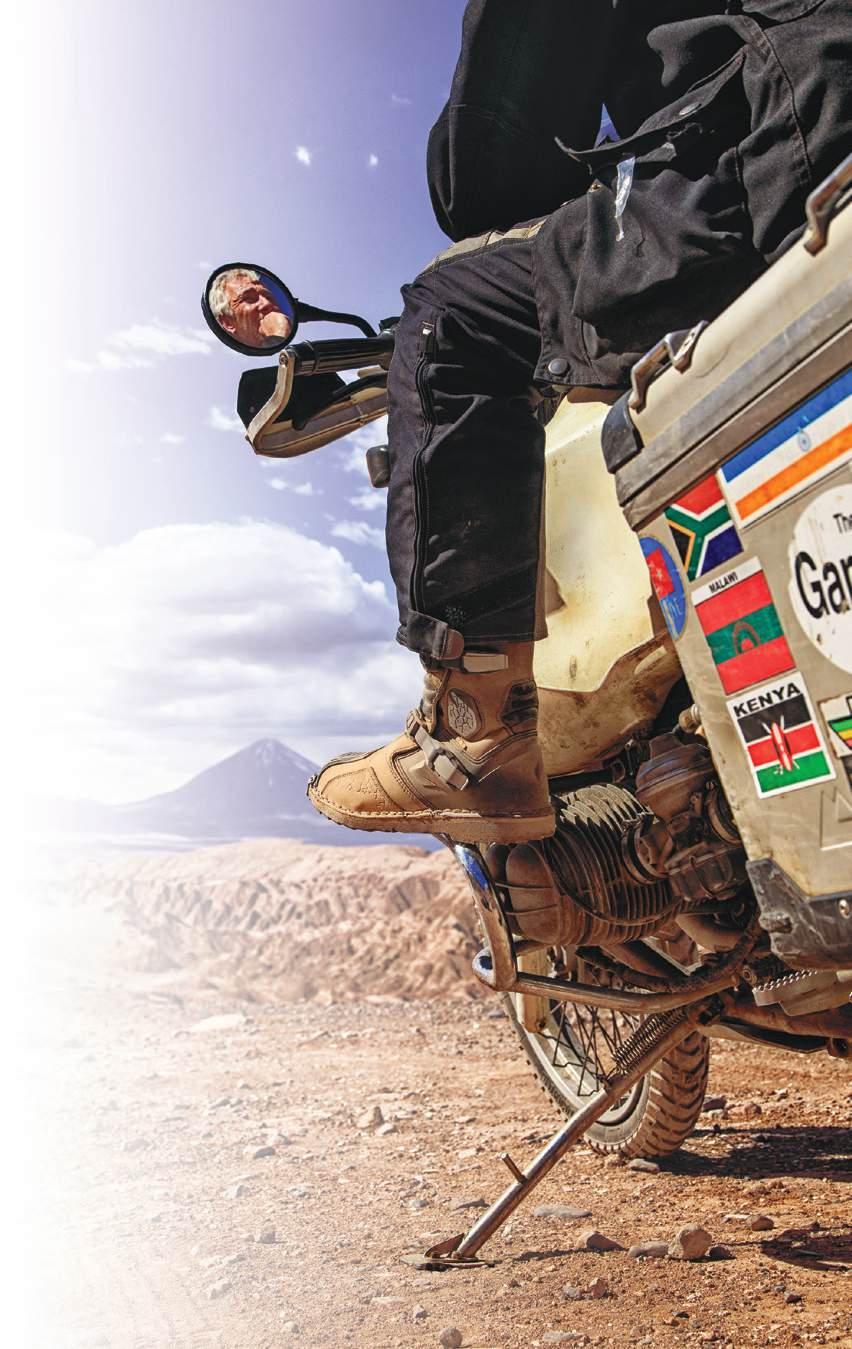

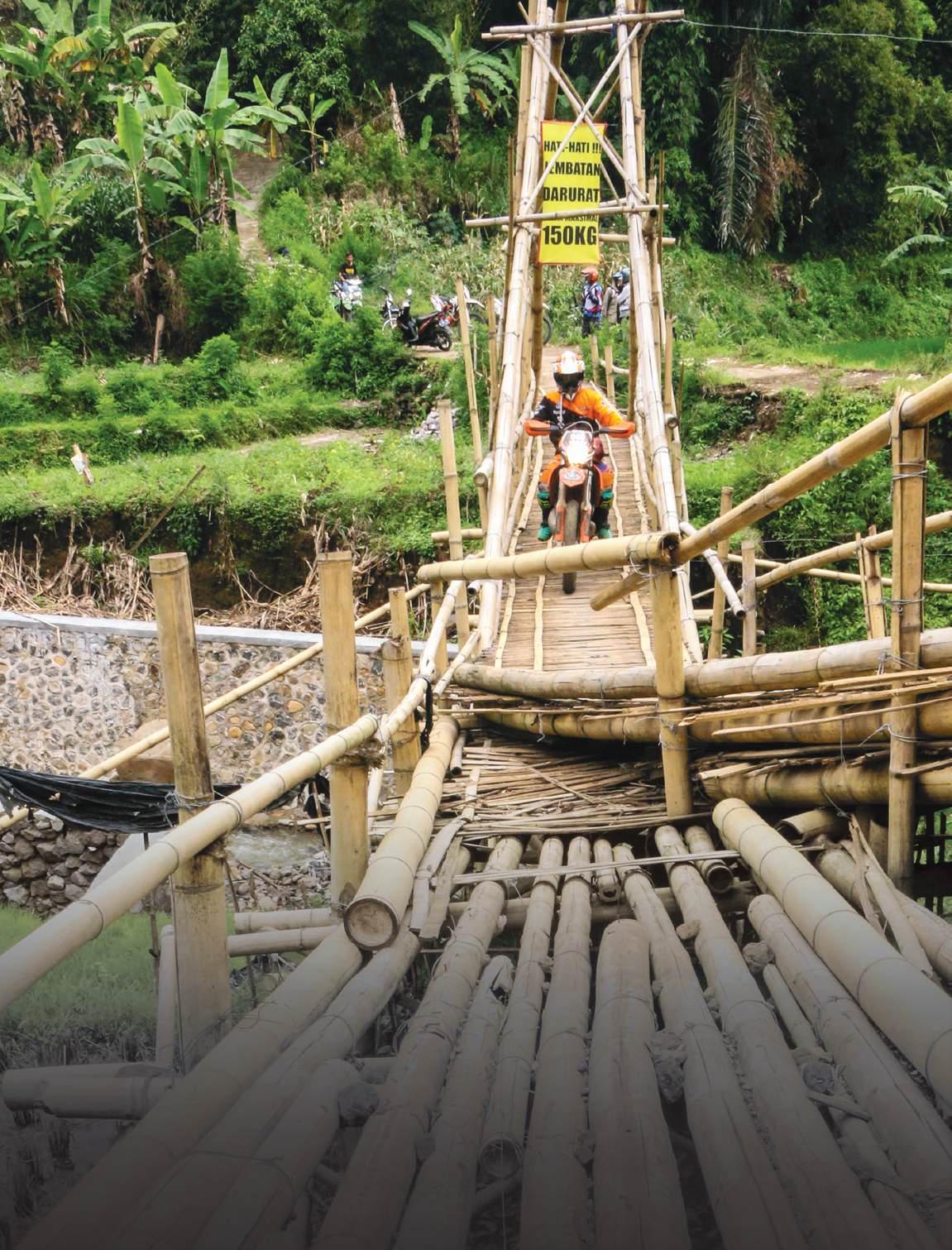
Main: A concrete bridge to Garut had given out and an amazing bamboo bridge had been constructed for access to local villages. Insert: Kampung Sampireun Resort, just out of Garut, West Java, was the start and finish.
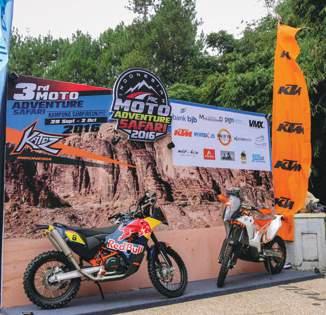
Call it fate or simply dumb luck, but I caught up with an Indonesian mate in Bali last year and he told me about the Indonesian Moto Adventure Safari (IMAS).
I scouted out the event organiser, Akbar Chaniago, at Katoz (KTM) in
Bandung, a couple of hours south-east of Jakarta, and he gave me the good oil. This was to be the third running of the event and the first time catering solely to adventure-bike riders. With increased sponsorship it was expected this would be the best
Safari yet, offering three days of riding throughout West Java and fellow Aussie Adam Riemann providing training and discussing his Motology films. How could one say, ‘No thanks,’ to that?
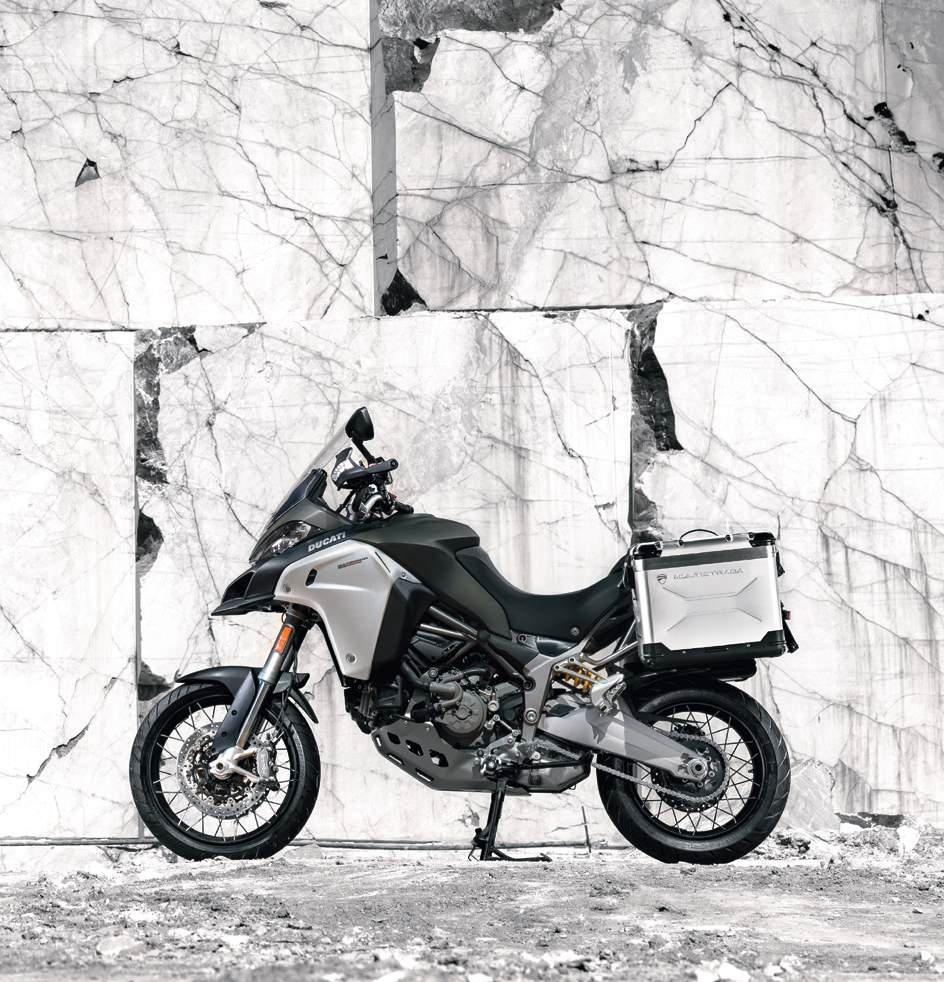
Multistrada 1200 Enduro
Wherever the adventure takes you, now you can follow it all the way. On any terrain, in any condition, theDucati Multistrada 1200 Enduro is designed to experience the journey with style, performance and technology. The 160 hp Ducati Testastretta DVT engine, 30 litre tank, 19” front wheel, spoked wheels and 200 mm wheel travel.
The Ducati Multistrada 1200 Enduro. We have given it everything, except boundaries.

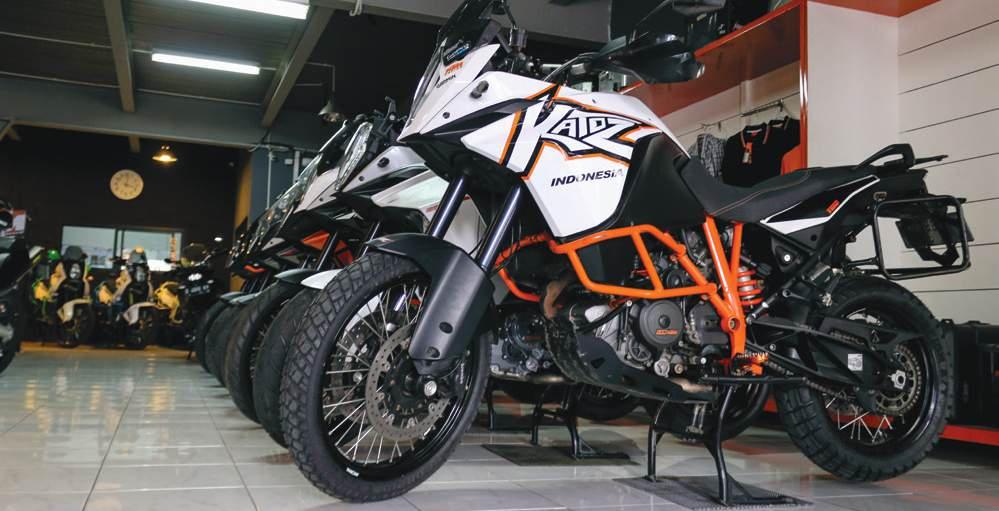
Three months later I was in Bali again, this time to grab my Husky TE630, prep it, pack it and send it to the Katoz Bandung dealership.
Luckily everything went close enough to plan and the bike was already unpacked, cleaned up and minor faults had been repaired by the time I arrived. Nice work! Not only was the level of customer service top notch, but after riding in a sea of Scoopys and stinky Bajaj taxis – kind of three-wheeled motorbike things – in Jakarta, the selection of KTMs in the showroom was something to behold. I felt I’d morphed into Augustus Gloop at the Willy Wonka factory. I was in ecstasy, and soon after meeting Adam Riemann any insecurities I may have had about the event were quashed.
I was not to be disappointed.
The start was at Kampung Sampireun Resort just out of Garut, West Java, and the resort’s preparation for the 67
registered competitors was first class.
After registering, the bike had its numbers attached, was parked in the allotted spot in the parc ferme and each rider was given name stickers for their helmet. It was very nicely done. All competitors also received a customprinted backpack, and among its contents were the itinerary and three motocross-style tops adorned with the event name and sponsors.
I thought I could wear them and at least try to blend in to the crowd.
Dinner that night was the first chance to meet and network with the other riders. Many of them spoke English, even though they struggled with my Australian accent.
Miss Ujie, the MC for the event, took full advantage of having a twometre-tall bearded Aussie in the group. She took a shine to me, pointing out to the group my appalling attempts at the Bahasa Indonesia language and
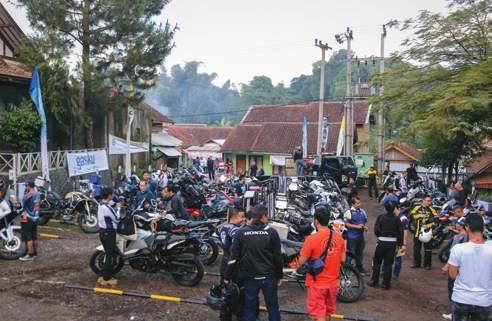
questionable dancing talents. And it wasn’t just that first night. She kept up a running commentary for the entire event. I was owned!
I knew I’d need to get the timing right to extract revenge.
The first day of riding started with a coaching clinic run by both Adam Riemann and none other than Kadex Ramayadi, my mate from Bali who’d originally told me about the event. What a sly fox.
At a nearby training ground we got the opportunity to scope out what everyone else was riding, a sparkling array of adventure bikes with the main
Above: The Katoz Bandung dealership showroom was something to behold.
Below left: Preparing to depart for the training facility. Below right: A coaching clinic run by both Adam Riemann (left) and Kadex Ramayadi ran the day before the event. u
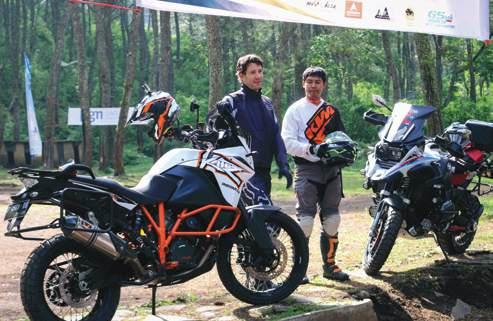
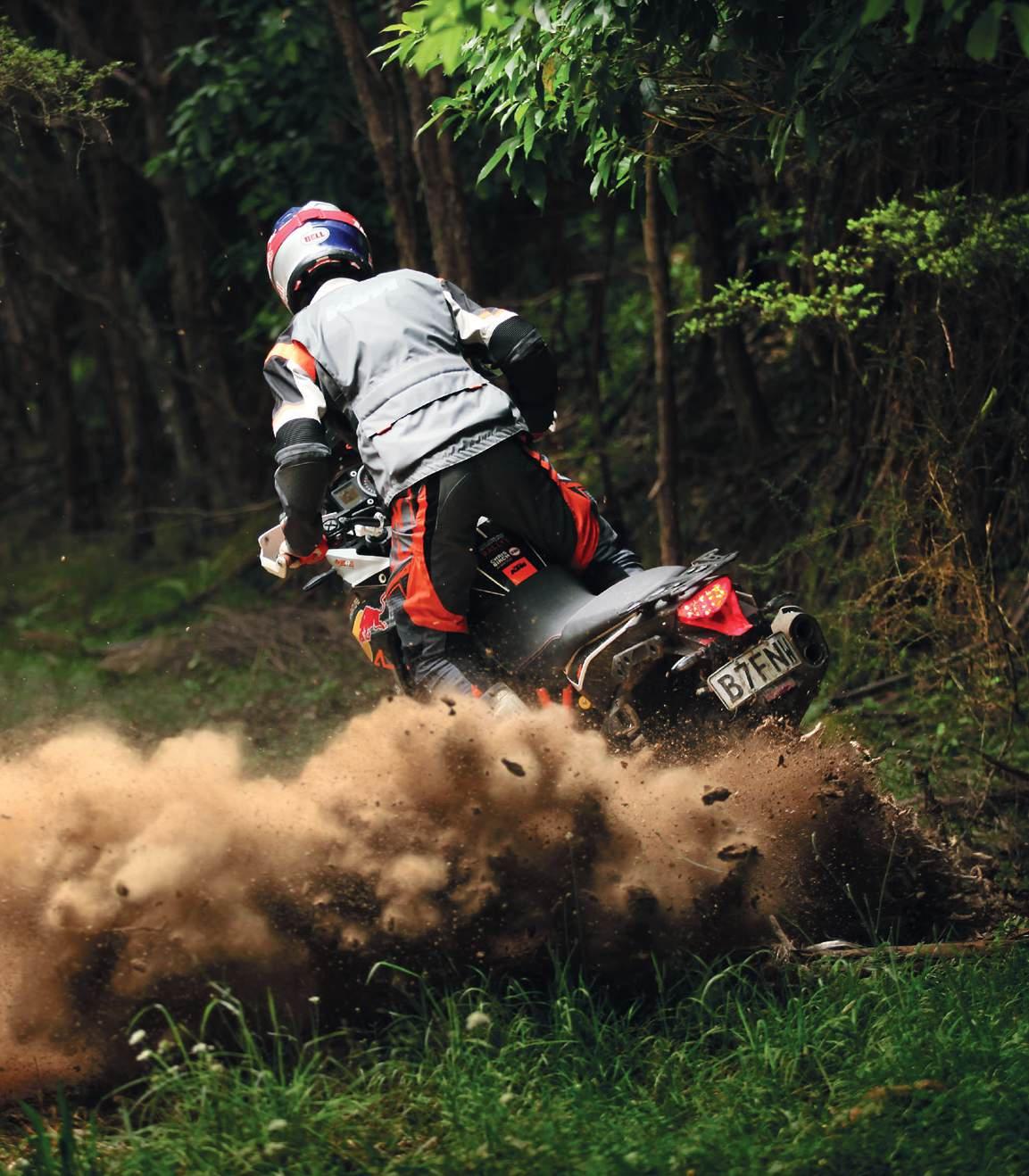
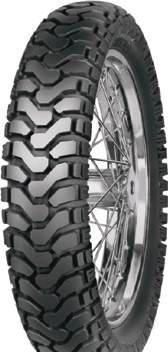
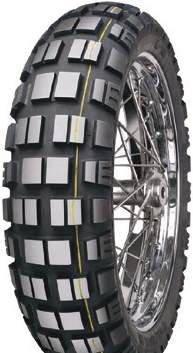
mitas-moto.com

Mitas Moto

Mitas Adventure tyres
The choice of Chris Birch "Mitas tyres give me the traction and the durability to take my adventure wherever I want to go."
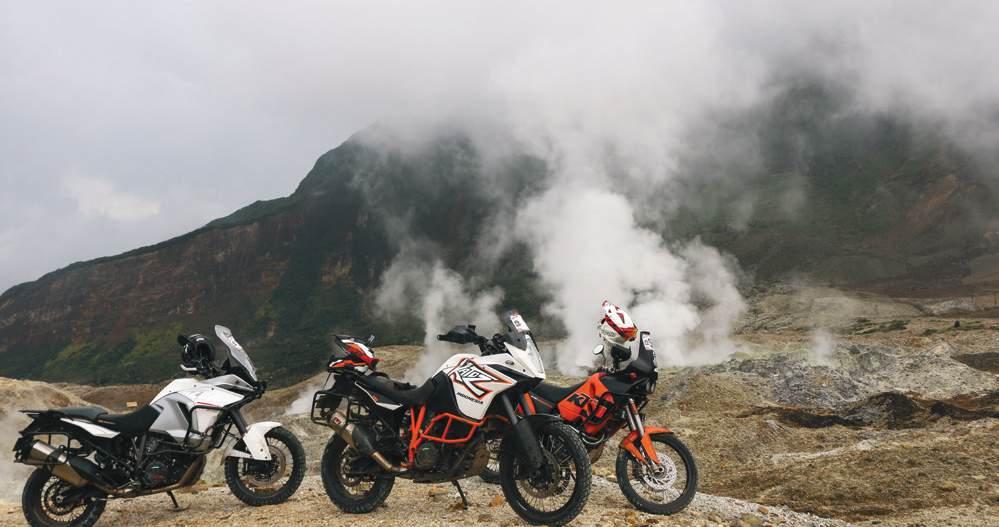
selection from KTM and BMW.
I’d ridden from Bandung on the previous day and ventured off-road on the way so my bike was by far the grottiest. There were 950/990 Adventures, 1190/1290 Super Adventures, 690 Enduros, 450 Dakars, a GS1200, R1200, F800GS, and a Sertão. I had a lone comrade on an SMS630 and the choices rounded out with a solo Honda CB500X, Suzuki DL1000, Kawasaki Versys 650 and of all things a BMW R-NineT!
For many riders this was the first time their bikes had been ridden in anger off the bitumen, and the first thing to be critically reviewed by Adam was tyre selection. Some had road tyres suitable for sports bikes and, understandably, these poor fellas were advised of the error of their ways. Later, on the muddy
tracks and hills, they paid the price.
The finer points of bike setup and balance points were discussed and adjustments made to handlebars and levers. Stand-up riding, sighting the road ahead, hill-stall techniques, safely picking up dropped bikes and other techniques were also covered with plenty of opportunity to practice in the well-prepared training area.
Just as discussion turned to water crossings, the heavens opened and everyone scuttled under the marquees for cover.
After a while a few of us went and played in the mud. I showed them how to do a 270-degree spin-and-fall with no damage except to my pride. We roosted mud at each other and then at the group cowering under the marquee.
There was no point in only a few of us getting wet and grotty.

The next day started the event proper and we left in our groups at 10-minute intervals, heading up to Mt Papandayan and an elevation of 2670m. Riding surfaces varied from some choice secondary roads and smooth tarmac to snotty, eroded wheel ruts and everything in between. Smoko was supplied by a local ladies’ group and was a real smorgasbord of delights. It was all delicious, but I have no idea what I ate. Back on the bikes we endured a few more minor offs and saw a BMW repaired on the roadside with superglue and a cigarette filter. We eventually arrived at a parking bay for lunch, and a few couldn’t resist the rare opportunity given by the park’s officials to ride the walking track to the summit to see plumes of gas coming out of fissures in the rocks around us. It looked more like a barren moonscape than anything I’d ever seen. The drone videos are testament to the alien feeling of the place.
Everyone headed back down the mountain and on to more subtle roads, arriving at the accommodation to dry off and prepare for yet another feast, talks from the coaches and more traditional dancing.
The following morning we travelled another well-marked route behind our Road Captains to our lunch stop at
Top: Mt Papandayan’s summit was like the set of an alien movie with smoke pluming out of rock fissures. Left: The author with local ladies at morning tea. u













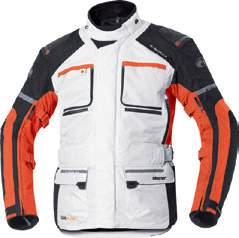





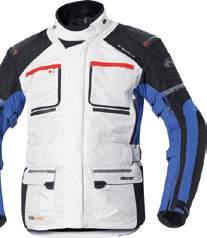








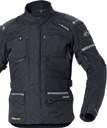
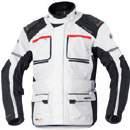





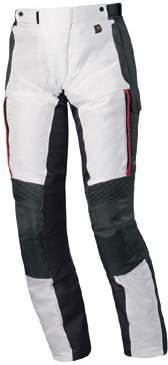






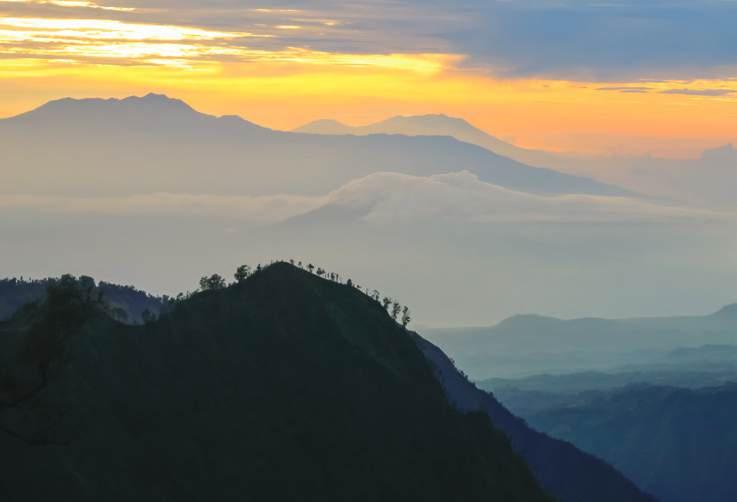
Talaga Bodas. It’s a sulphur lake at an elevation of 2100m and has a silvery appearance and smoke venting from the rock. We scored more rain and it made the place resemble something akin to a movie about aliens.
Hidden around an overgrown track was a man-made set of pools for which the mineralized water was plumbed from the rock fissures. This provided a selection of
heated spas and I duly stripped off to my Reg Grundies to experience the rare delight.
After lunch we headed down the mountain over more scenic routes and an amazing bamboo bridge constructed for access to local villages. The concrete bridge had given out in the previous wet season, so this was the temporary fix.
More videos and stills were taken and
our sole Honda rider showed us how to bounce the handlebars from side to side near the end of the bridge, then enjoyed a slow plunge into the bush. We so wished we’d got footage of that!
Apparently there were a few more minor falls, but thankfully none that required medical attention
Preparation from the IMAS organisers was brilliant. An ambulance, medical support and a doctor followed the entourage every day.
Returning to Kampung Sampireun saw us receive our competitors’ medals, a last formal presentation by the organisers and the obligatory photo shoot. Somewhere among these proceedings Akbar was dunked into the resort lake. A few others followed and the conspirator was found to be the MC, so it became my duty to ensure she received the same treatment. Revenge is so sweet.
Indonesia is the land of adventure. For anyone who wants to attend a future IMAS, or who’d like more info, check out motoexplore.com. That’s where all the details are.
Above left: The scenery is as good as the riding. Below: The third running of the Indonesian Moto Adventure.

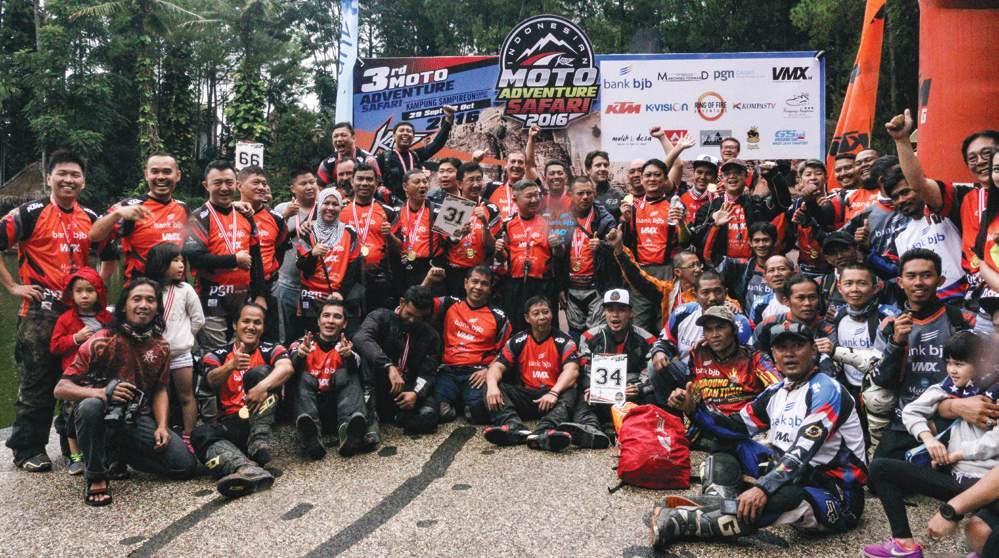
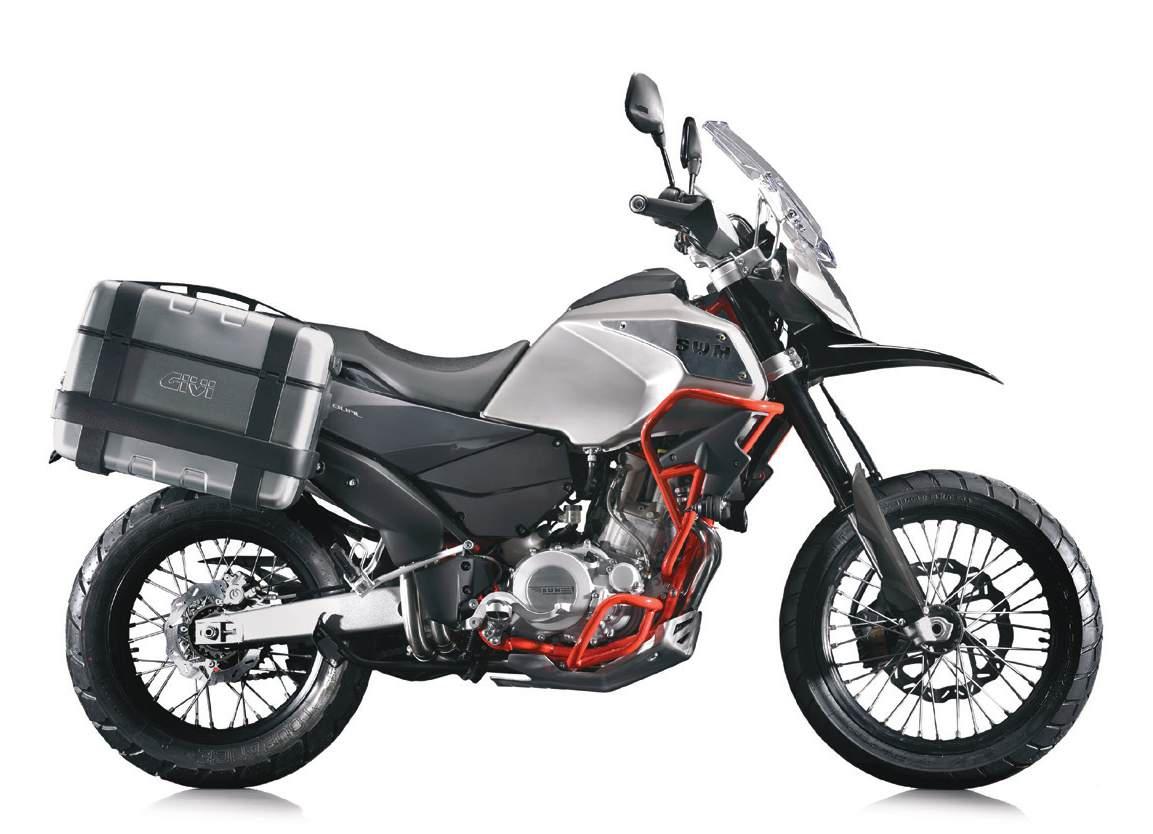
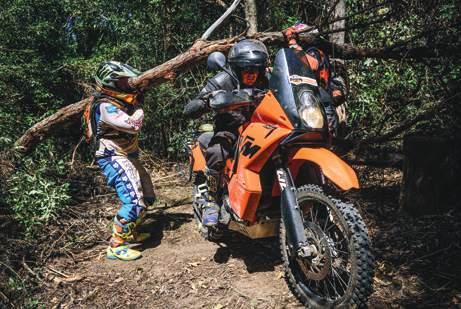
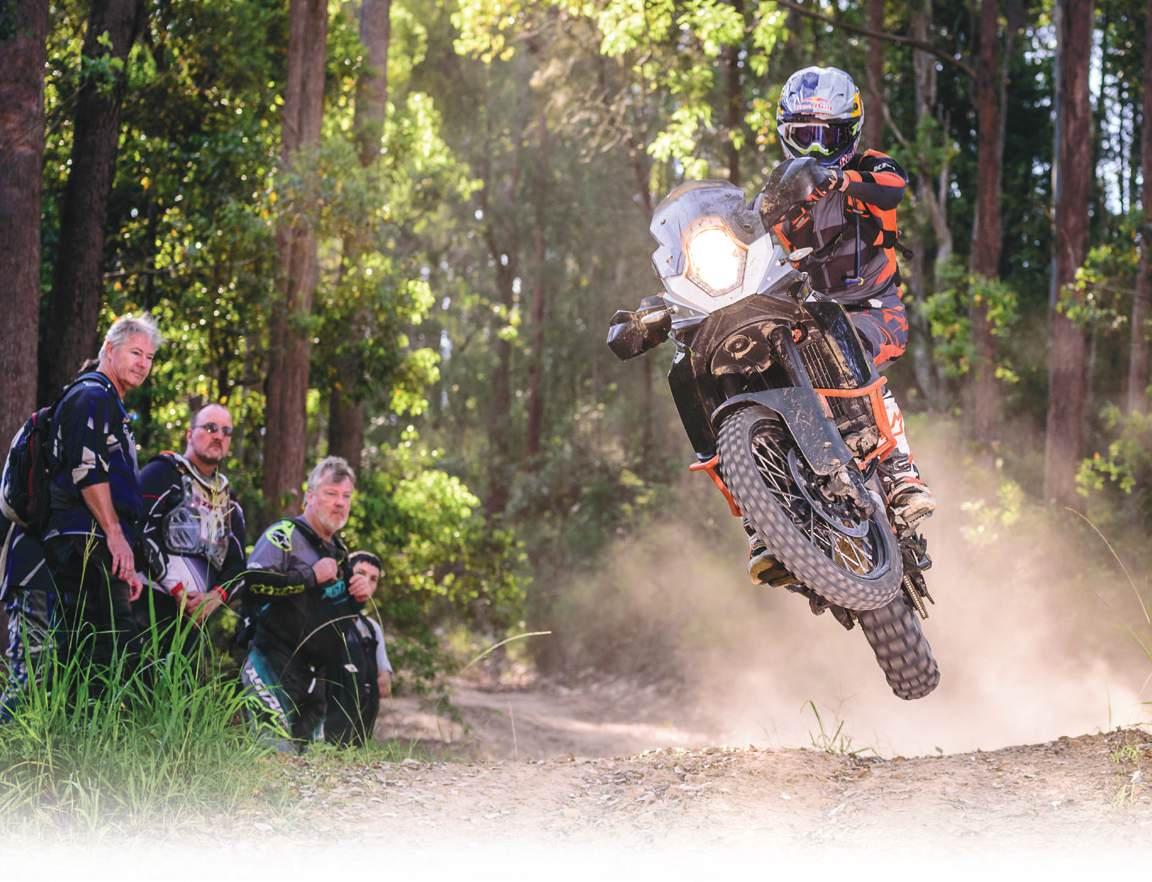
Around 20 KTM punters braved a southeast Queensland heatwave in the hope of learning more about adventure-riding techniques and handling big bikes. Not one was disappointed. International competitor Chris Birch and Maschine’s Nick Selleck made sure of it. Photographer – and KTM owner – Danny Wilkinson was grinning along with everyone else.
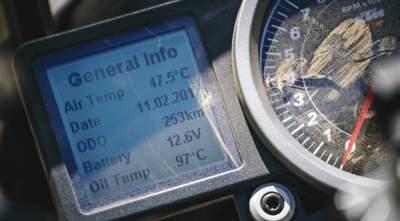
among the sounds of the Aussie bush in summer, the 950’s radiator sat percolating as we paused to let it catch its breath. On one of the hottest days on record, someone thought it’d be a good idea to tackle some classic, overgrown, Woodenbong single track in search of training opportunities. Nick Selleck was leading the way so he cops the blame. The tight going was clearly his fault – and there’s no need to mention the slightly dubious local knowledge I may have offered over the intercom.
Keiran Holcombe had pulled his big V-Twin 950 out of semiretirement to attend the KTM Training school and indulge in a couple of nights camping for his 30th birthday. Married with a couple of young children, Keiran was keen to learn some new skills on the big bike and his wife thought the course would give added peace of mind when he ventured out in future.
That’s the great thing about the adventure training courses
offered by KTM Australia. It doesn’t matter whether you aspire to defy gravity with Chris Birch-styled antics or gain some confidence for a maiden journey into the unknown, there’s a huge amount to be learned in a nonintimidating environment.
Brake down
Starting out with the basics, the class worked through various drills on the Kooralbyn polo fields as the mercury rose. This proved to be too much temptation for some, resulting in a decent highside on the freshly slashed grass. We were politely instructed that the course relied on a solid understanding of the foundation skills before progressing to the more advanced concepts. That was Nick Selleck’s diplomatic explanation. Birchy just told everyone to pull their heads in and that skids were scheduled later in the day.
Over heat
It’s funny how simplifying an individual aspect of riding and practising it in isolation can really lead to some big improvements out on the trail. Armed with fresh knowledge and a few lightbulb moments, the group moved on to a 10km special-test track to work on various obstacles an adventure rider might encounter.
The heat reeled in activities for most by mid-afternoon, making room for a swim in the pool before some further info and a GPS training session that night.
Namesake
With the weatherman forecasting fire and brimstone the next day, a democratic process saw everyone on their bikes and rolling south towards Urbenville at 5.30am.
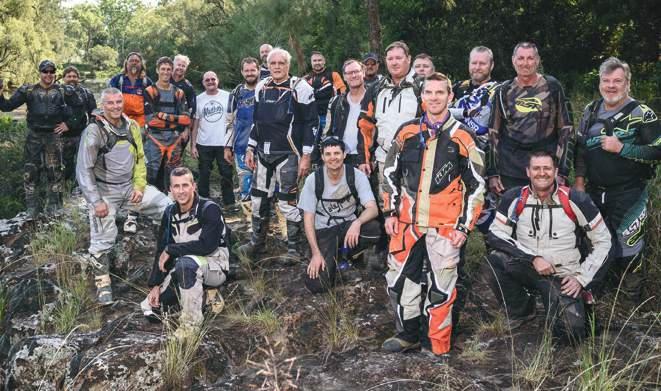
The dawn mist was a refreshing change as Mt Lindsay peered from the low-lying cloud and the class approached the cool sanctuary of the early-morning rainforest. Training opportunities were seized as they appeared, and there were stops at various points culminating in Chris launching the 1190 off a sizeable erosion mound to correctly demonstrate the dramatic impact various techniques have on the pitch of the bike.
You have to hand it someone who’s willing to ride like a gumby over a big rollover just to show what not to do.
The early start meant the buffet breakfast at Kooralbyn went untasted, but a late call to The Crown Hotel in Urbenville saw the staff decked out in KTM attire and the aroma of bacon and eggs filling the village when the group arrived. The impromptu brekky was a real treat for the KTM crew and locals alike. Not wanting to disappoint the small crowd, Birchy accepted publican Darryl’s challenge to punt the Austrian thoroughbred through the back door, down a flight of steps and out the bar. You probably won’t see that in Pitt Street, or anywhere the publican’s daughter isn’t named Katelyn-Tamara Mageean.
True. The Crown Hotel folks are obvious fanatics of the orange marque.
It was a great couple of days learning new skills and making the most of the dynamic between the instructors. Birchy’s engineering background has a unique way of communicating exactly how the pieces fit together. Combined with the seasoned adventure practicalities of Nick Selleck, everyone was in awfully good hands when it came to the finer elements of slinging an adventure bike around.

Top: A good bunch with plenty to share. Below: Nick Selleck explained the finer points of throttle control.
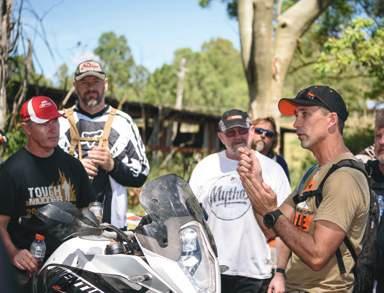

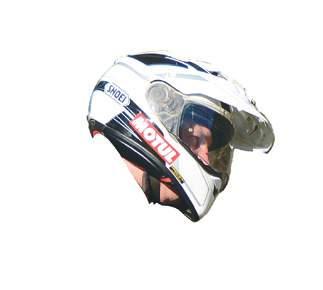
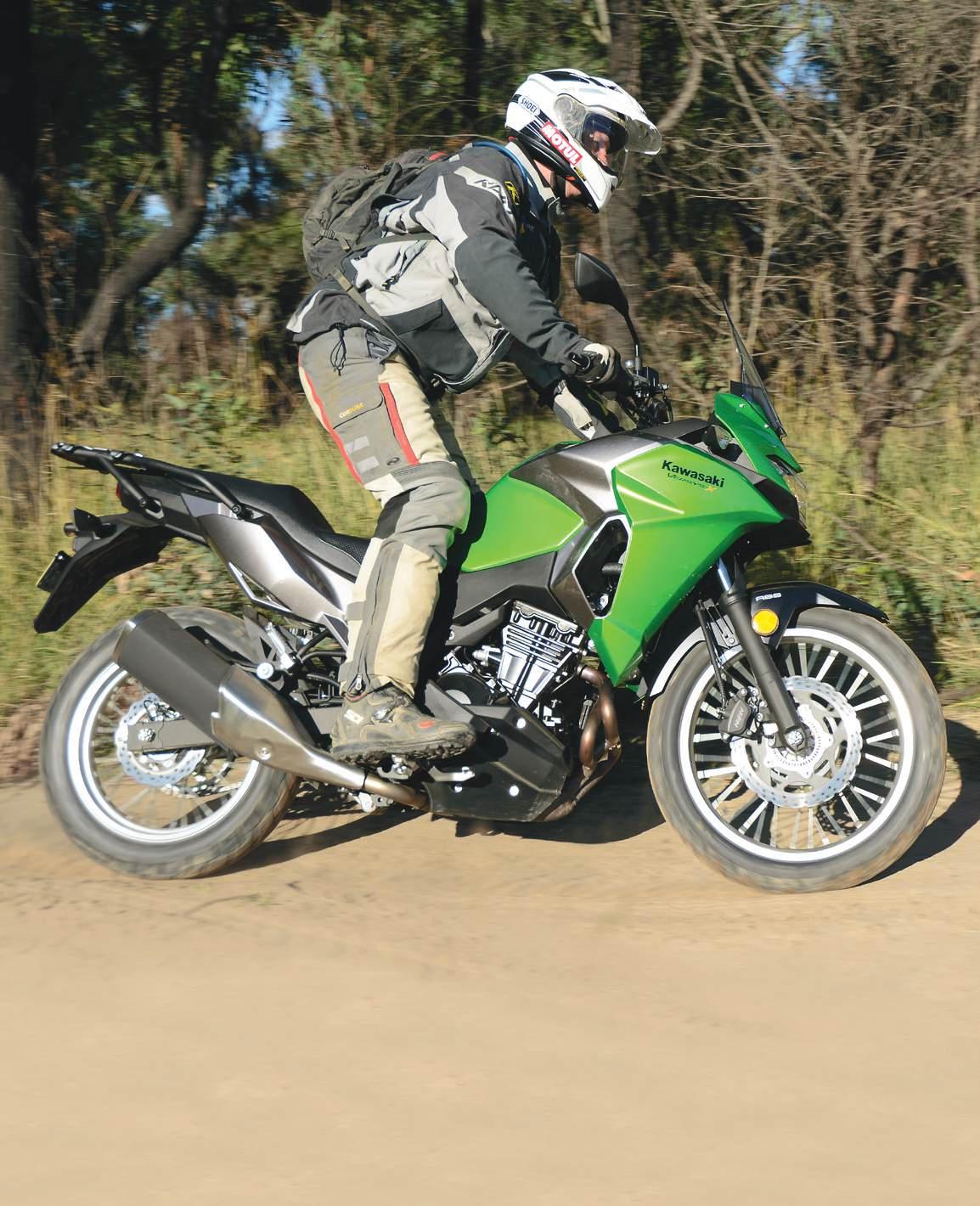

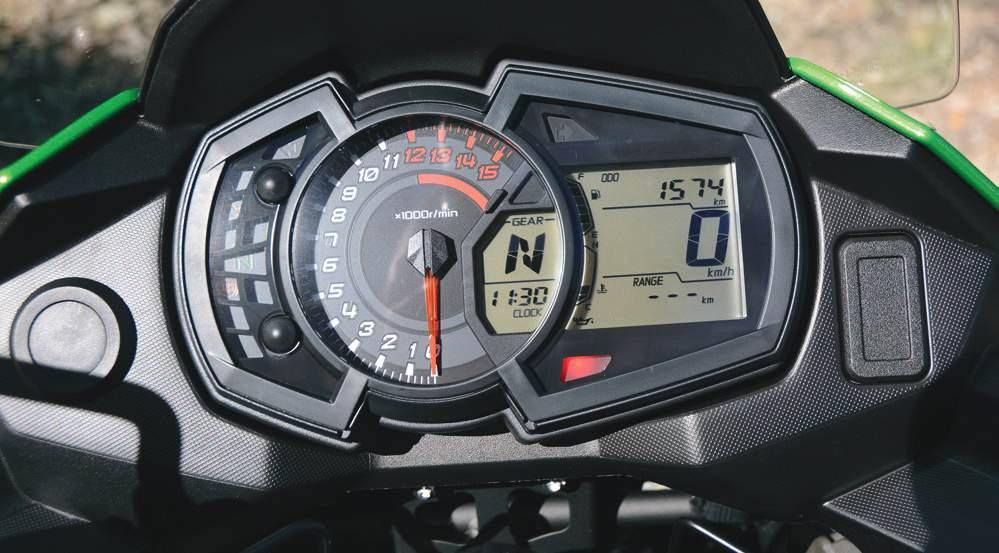
For the newbie riders this bike offers a lot. For the experienced rider who knows how to get the best from a small-bore, the Versys-X 300 offers even more.
Kawasaki has jumped into the small-bore dualsport market with a new addition to the Versys range. Alongside the 1000 and 650 there now sits a Versys-X 300.
We enjoyed the other two, but for sheer hoot value and grins-per-cc, the 300 leaves the others in its neat, angular little shadow.
Main: It may not look like an off-roader, but the Versys-X 300 does well.
Above: Easy-to-read gauges with plenty of info.
The two little rubber buttons on the left allow scrolling through the various displays.
Covering off the technical side of the bike first, the motor is a 296cc, liquid-cooled, DOHC, parallel twin and a six-speed box drives a chain via a cable-operated, assisted slipper clutch. Kawasaki BottomLink Uni Trak suspension allows about 15cm of travel at the rear and the 41mm right-side-uppers at the front around 13cm. Wheels are a 19/17-inch combo front/rear, fuel capacity 17 litres and kerb mass 175kg.
The figures that will form most people’s opinion there are a small motor – with a modest compression ratio of 10.6:1, by the way – short suspension travel and a 19-inch front wheel. To most readers the numbers will add up to ‘learner’s bike’. Add in a seat height of 815mm and the whole thing will be resolved to ‘girls’ bike!’
We admit that’s how things looked to us. Aside from the numbers were a low front guard, road-oriented tyres, preload-only adjustment on the suspension and a general ‘roadie’ look.
But in this case the numbers don’t add up. At least, they don’t give a true measurement of the performance and versatility of the Versys-X 300. Once this bike starts doing its thing all that spec-sheet palaver disappears in a turbine-smooth, hard-revving motor and a blurred backdrop of passing scenery.
First impressions on throwing a leg over the bike are pretty much as the specsheet numbers said. It’s light, short in the seat, has a new, modern look, and feels surprisingly roomy in the cockpit. Select neutral, touch the starter and check the tacho – because it doesn’t sound or feel like the bike’s running. It’s very, very quiet and very smooth.
Then grab the clutch and…whoa!
That ‘assisted’ clutch nobody paid any attention to in the specs is fricken amazing. It’s so light! We haven’t felt a clutch as light as that one except maybe the hydraulic outfits on some of the 125cc motocrossers. It’s seriously feather-light. That’s a good thing too, because one measurement figure which does meet expectations is the 296cc capacity of the donk. For those used to the big grunt of today’s crop of muscle motors, the Versys powerplant is a world away. It needs a handful of revs to get moving, and once the bike’s underway, it’s immediately obvious revs are where it’s at. Redline is at 12000rpm, and the sweet spot is between about 7000rpm and 8000rpm. For those used to the big litre-class twins that feels insane.
In fact, the Versys is still smooth and quiet at those revs, and performance is quite lively. In sixth, 8000rpm is about 100kph. Once a rider adjusts to letting the motor run where it works best, the little Versys comes alive and highway speeds of 130kph are no problem. Off-road there’s a lot more gearbox thrashing than needed with bigger motors, and torque delivery is modest. That brings us back to the clutch. While the motor is buzzing away at 8000rpm and more, the gearbox is understandably reluctant to change without the clutch. So it’s a big asset to have a clutch as light as this one.
Not only is the clutch action unbelievably light, the slipper action is one of the best we’ve ever used. It’s so smooth it’s hard to realise just how well it’s doing its job. We were puzzled at first, but then the little light went on the dim, foggy recesses of our noggins. We were jamming down gears and expecting all
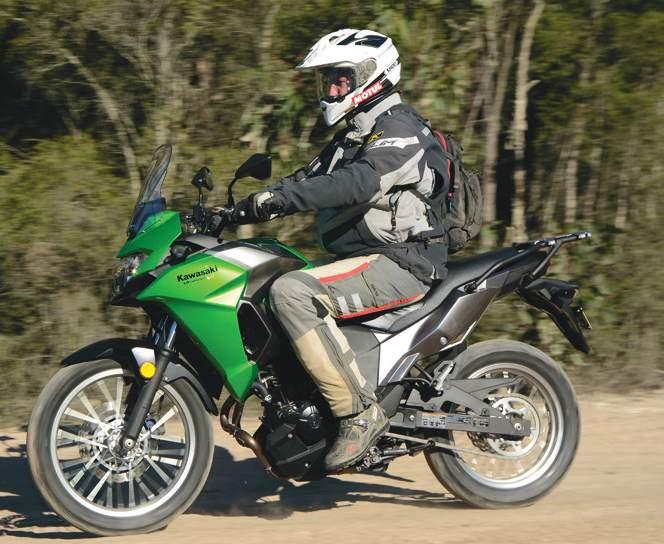
kinds of complaint and protest, but the bike seemed to stay straight and resist valve bouncing and self-destruction. We kept pushing harder and harder, especially on the road, until we realised what was going on. Admittedly, as far as mass goes, big bikes are like missiles and the Versys a pellet, but it’s still a superb slipper clutch. Inexperienced riders should give Kawasaki an award for the safety this component offers. Experienced riders can brake late and hard and rely on controlled engine braking from seemingly ridiculous speeds without penalty.
Having grossly mistreated the clutch
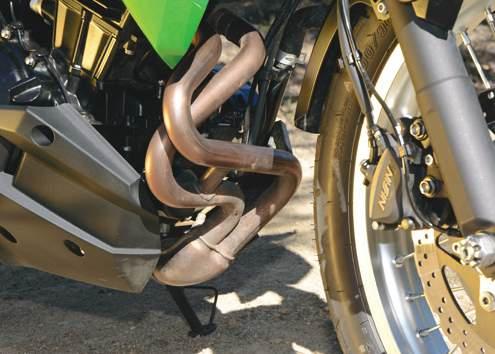
and engine in general – and enjoyed ourselves immensely thanks to the bike’s incredible tolerance of our behaviour – it was time to hit our standard suspension-testing loop. We initially decided we wouldn’t tackle that specific loop on this bike because, well…look at it. It’s clearly not meant to be hurled at spoon drains, gibber rocks
Top: The seating position was comfortable for our 175cm test rider.
Below left: Crikey. That’s some curvy headers, there. Below: There’s funny little vibration-absorbing weights under the footpegs. They work on the same principle as ’bar-end weights.
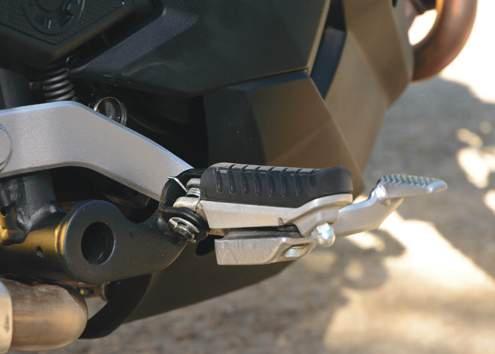


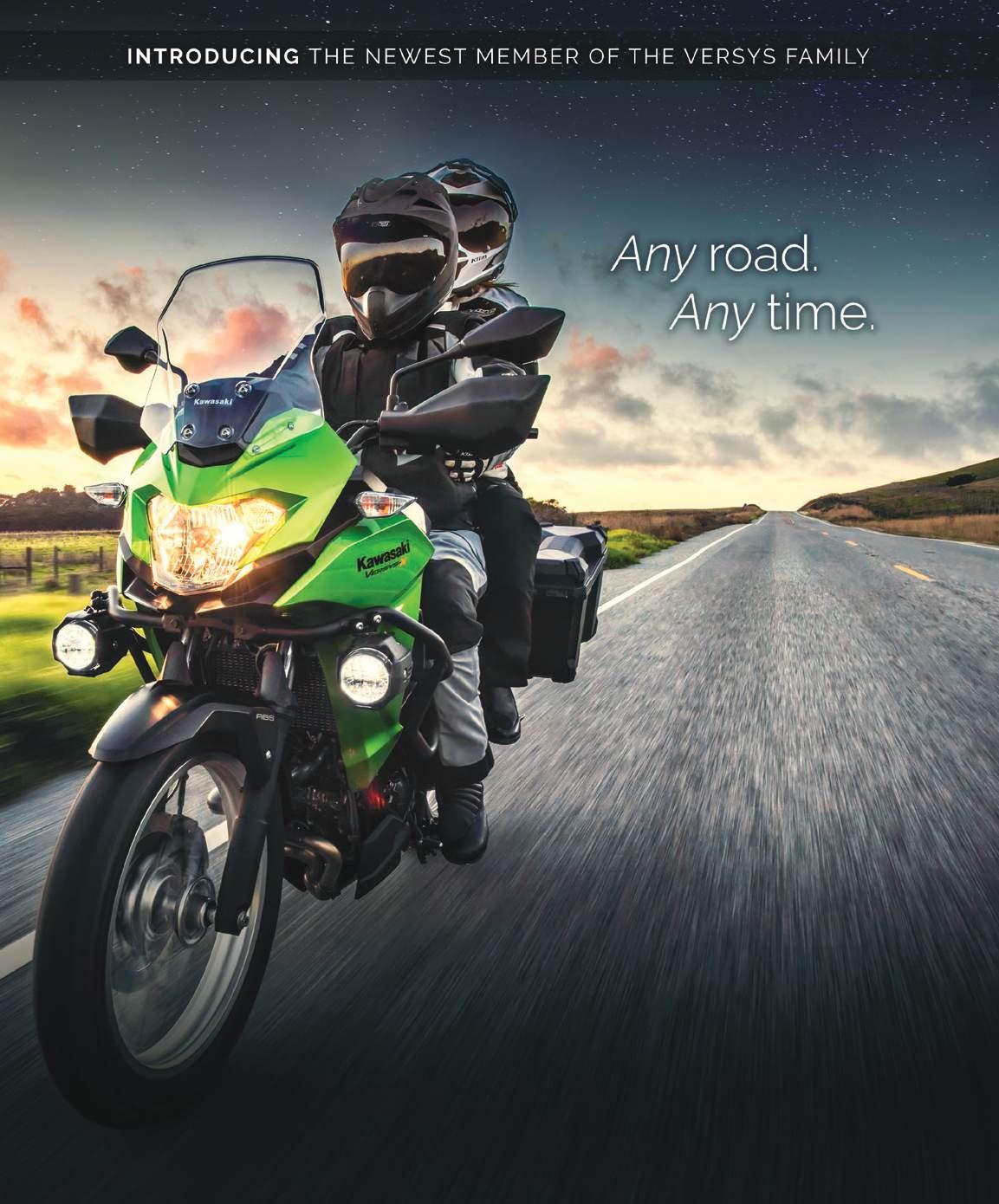







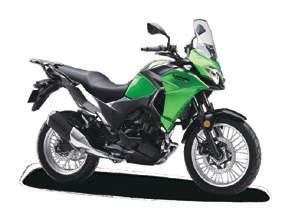
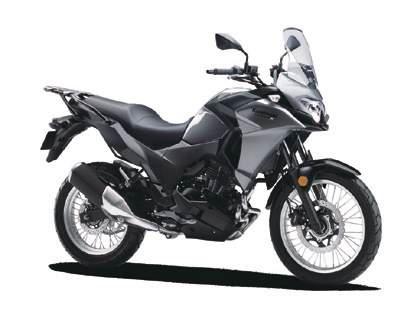
Joining the Versys 650/L and Versys 1000 models, the highly versatile and lightweight Versys-X 300 opens up a category of its own.
• Powerful 296 cm3 Parallel Twin engine
• Assist and Slipper Clutch
• All-new highly rigid backbone frame
• Long-travel suspension
• 19”/17” spoke wheels and multipurpose tubed tyres
• Stylish multi-functional instrumentation with gear position indicator
• Large-size windshield provides superior wind protection
• Slim, upright riding position
• Large-volume bodywork and impressive adventure styling
• Comfortable long-distance riding
• Abundant range of genuine touring equipment & accessories available
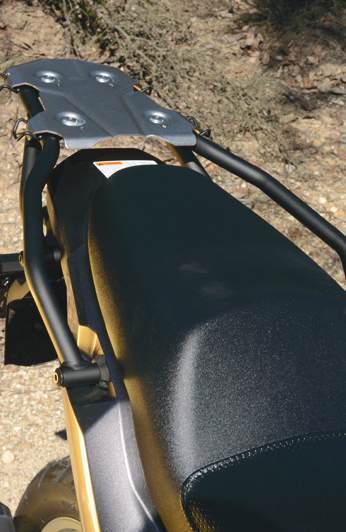
and extended stretches of blue metal. You can tell that just by looking at it…can’t you?
But after cruising through some familiar sections of dirt road, up and down a few challenging hills and through a shallow creek or two it began to dawn on us that we were continually underestimating the bike and being proven wrong.
So off we went, standing on the slippery, rubber-topped ’pegs with their little vibration-cancelling weights underneath, dreading how the IRC Trail Winner roadie-looking tyres would cope with the wet clay, and not-too-tentatively slithered into the section.
We were right in that the bike won’t cope with being jumped. But we were once again caught off guard by how well the suspension worked within its limited parameters. When it comes to keeping the wheels in contact with the ground over rough and choppy surfaces, the Kawasaki suspension does an excellent job. We had to use some common sense and slow down for anything which would offer a big hit or savage landing, but we have to do that on bikes a lot more
Left: The substantial rail around the rear of the seat offers plenty of places to strap luggage. It’s a great grab rail, too.
expensive and a lot heavier than this one. By the time we’d tackled the suspensiontesting section a couple of times we felt like we were putting in some creditable times. We’ve been using that section for that purpose for more than two decades, so although we didn’t time ourselves we’re pretty confident of the result. Travel may be short, but the components work well.
After what can be fairly described as a thrashing on our favourite mountain bitumen, a solid workout off road and a reasonable highway cruise, we came away from our Versys-X 300 ride shaking our heads in wonder and very impressed.
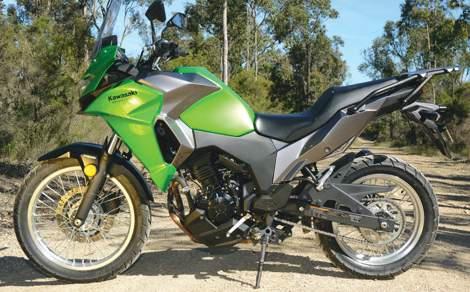
Web: www.kawasaki.com.au.
Rec retail: $6399 plus on-roads and dealer charges
Engine type: Liquid-cooled, DOHC, parallel-twin four-stroke
Displacement: 296cc
Bore/stroke: 62mm x 49mm
Compression ratio: 10.6:1
Fuel system: DFI with two 32mm throttle bodies
Ignition: Digital
Clutch: Assisted, slipper
Starter: Electric
Transmission: Six-speed return shift
Rear-wheel drive: Chain
Frame: Backbone, high-tensile steel
Front suspension: Telescopic, 130mm travel
Rear suspension: Uni-Trak swingarm, 148mm travel
Brakes front: Single disc ABS
Brake rear: Single disc ABS
Fuel capacity: 17 litres
Overall length: 2170mm
Overall width: 860mm
We wonder why so many people are chasing huge horsepower figures and such high levels of technological oversight from adventure bikes.
We know the answer of course, because we love the performance on offer from those things as much as anyone. But still, to spend some time rorting around on this little bike had us bursting with joy every bit as much as the biggest, most powerful and technically advanced bikes we’ve ever ridden. The Versys’ ABS lacks the refinement of more expensive bikes, and it would be a problem for us with the type of riding we do. We couldn’t see a way to switch it off, so, like the suspension, we rode within the bike’s parameters. There’s no
Seat height: 815mm
Ground clearance: 178mm
Wheelbase: 1450mm
Kerb mass: 175kg
Colours: Candy lime green/metallic graphite grey.
Metallic graphic grey/flat ebony
traction control, but come on. On a 300cc four-stroke do you seriously need traction control? We don’t think so. The 19-inch front wheel won’t suit riders wanting to tackle tougher off-road terrain, but it makes the bike a dancer on the blacktop, and we feel that’s where the baby Versys will probably spend a lot of its time with most owners.
It’s light, way, way more capable off-road than it looks, a screaming banshee of boy-racer fun on the road at legal speeds, and it rolls off the dealer floor at $6399 plus ORC. As icing on the cake, Kwaka has gone all out on putting together a catalogue of OEM equipment for the Versys, so side panniers, luggage, 30-litre top case, LED lighting, centrestand,
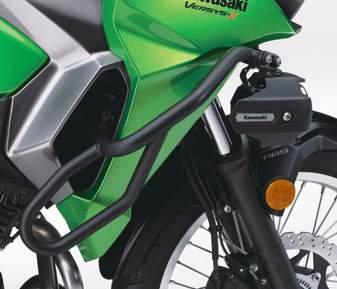
handguards, engine-protection bars and a DC power outlet are all available, ready-made for the bike. There’s also a sturdy looking rail around the rear of the seat that supports the rack and no doubt the panniers, and makes for a brilliant, chunky grab rail.
Seriously. That’s a big-fun package at a tiny, entry-level price.
On this page: Kawasaki has a stack of great OEM accessories available for the Versys-X 300.
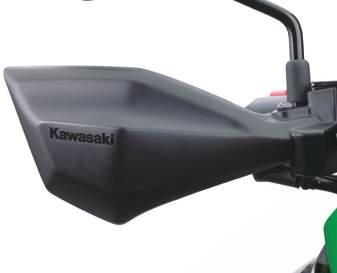
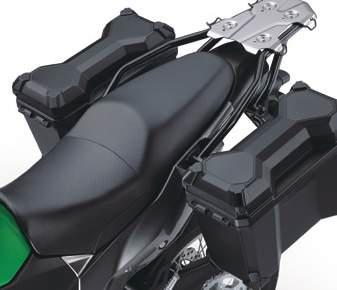
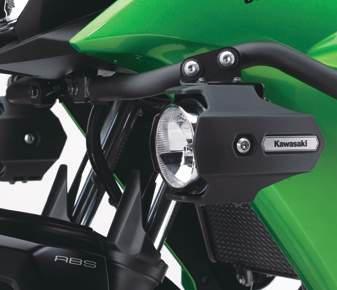
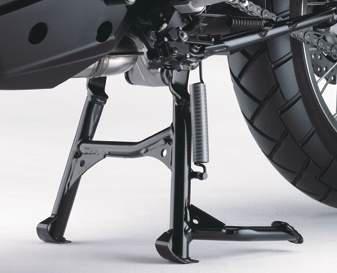
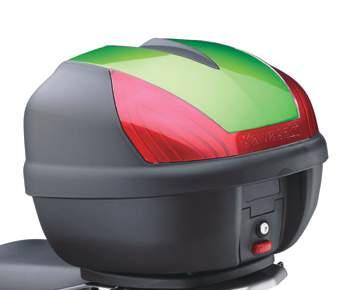
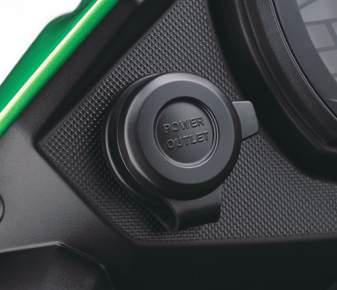
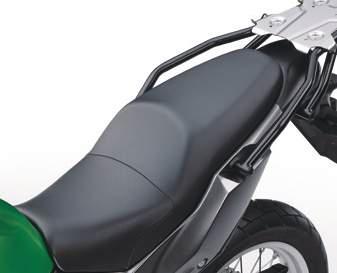
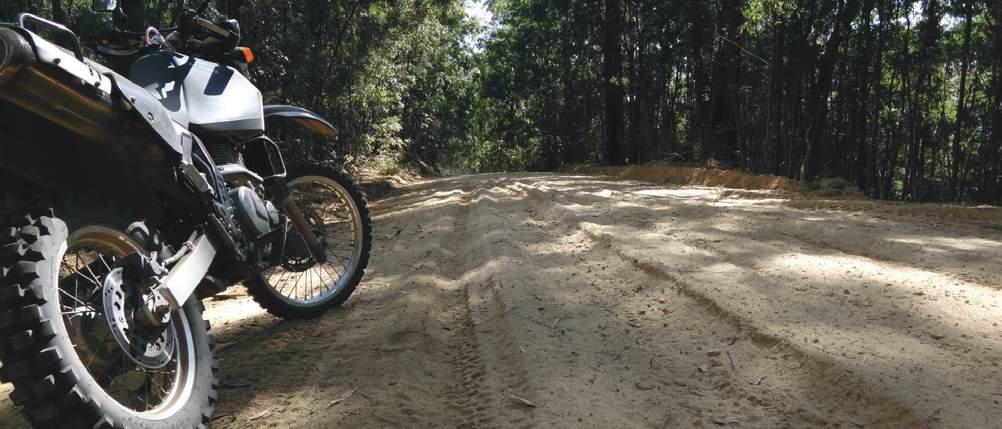
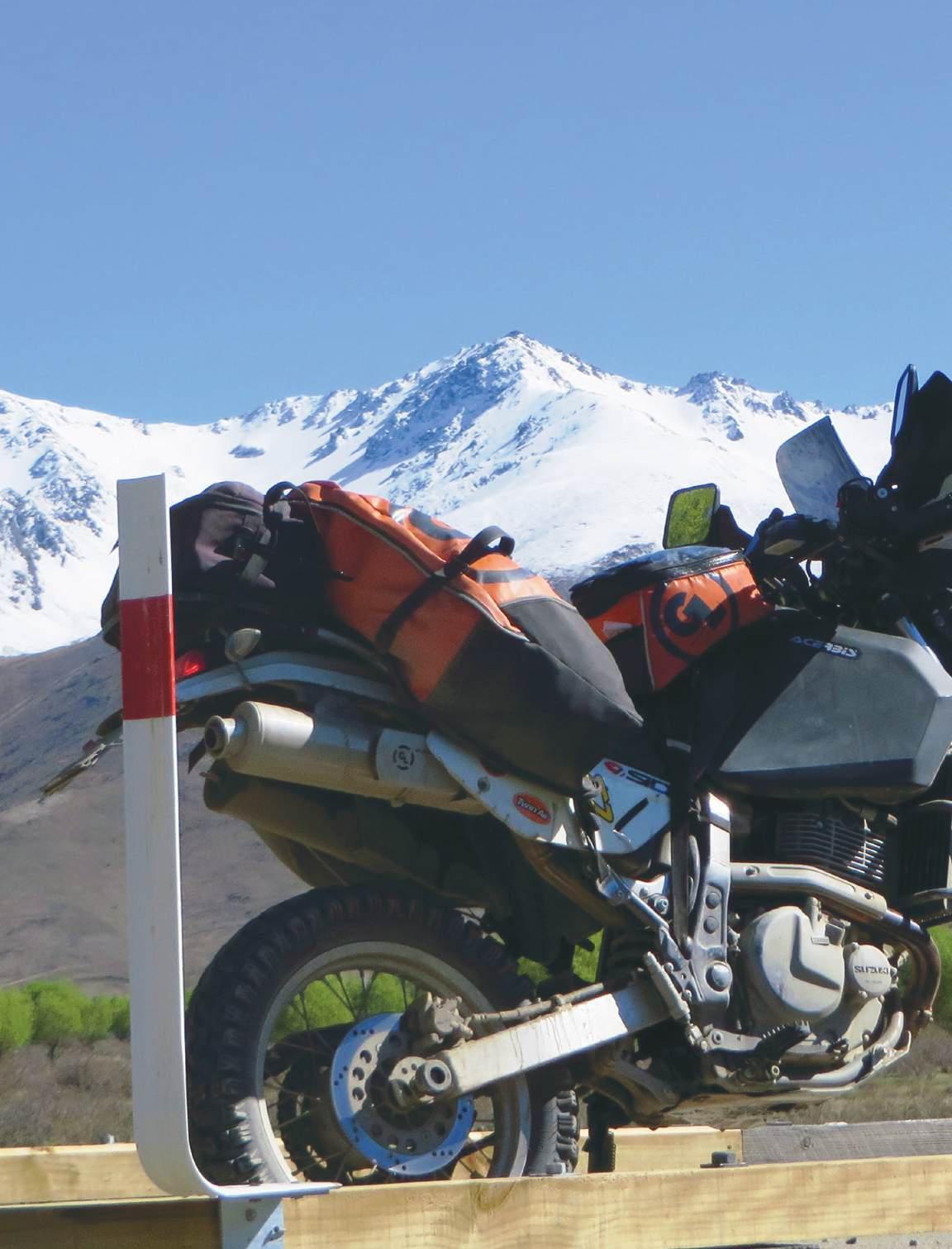
New Zealand has a lot to offer adventure riders. Ian Bowden highlights some superb, easily accessible adventure-riding destinations at the top end of the South Island.
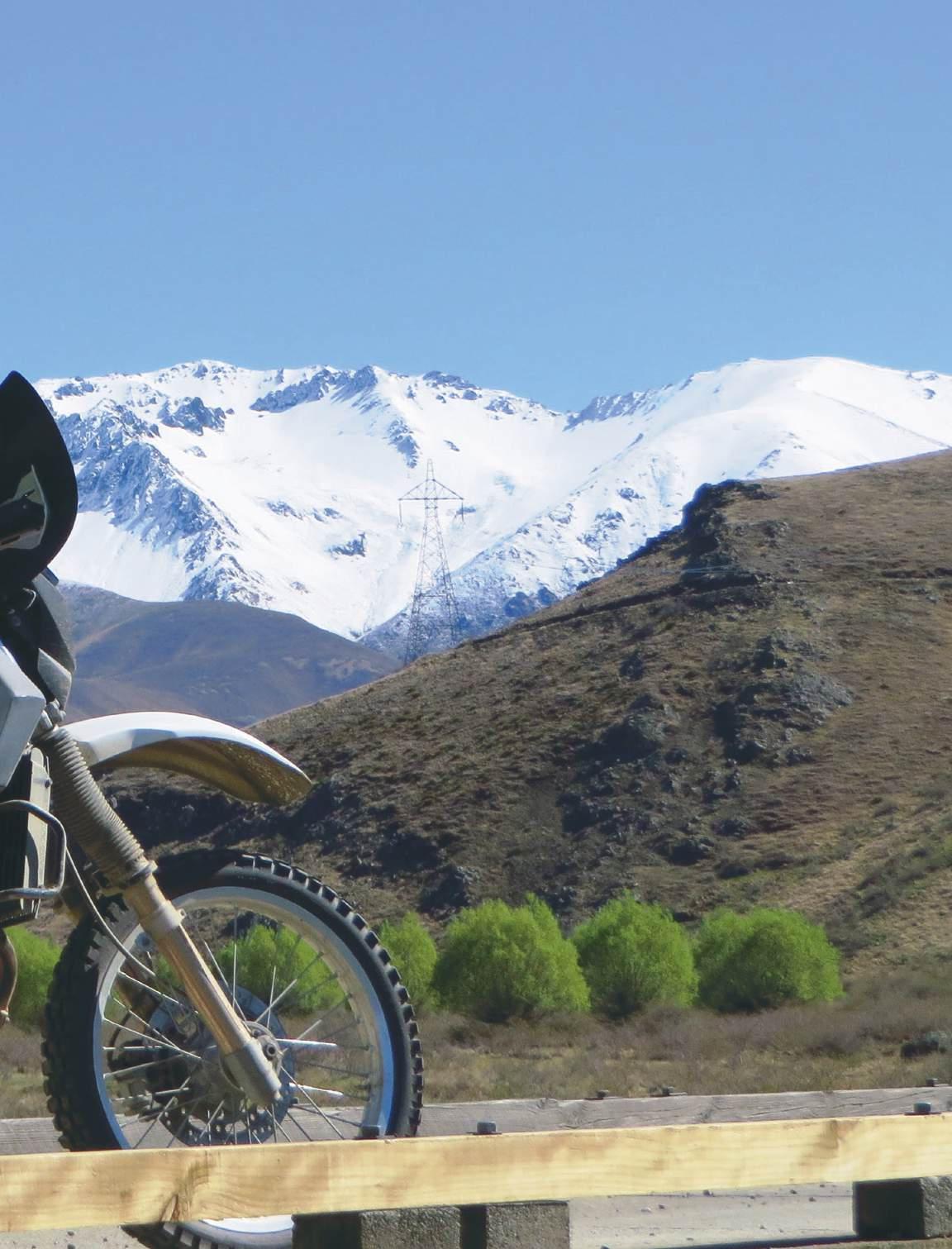
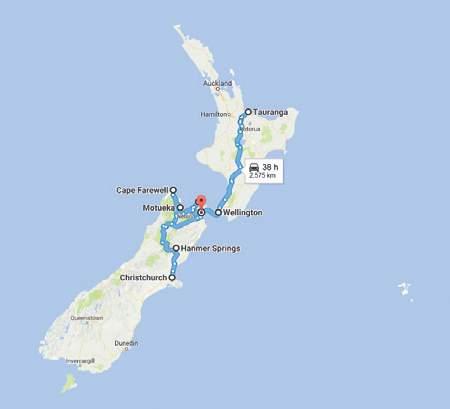
Ihadn’t planned to do this trip solo, but the two friends I usually ride with couldn’t make it and my work commitments allowed a short window of opportunity.
The next issue was the very changeable weather at that time of the year. To most of us Spring means new growth and improving weather, but the reality of the South Island is it rains and blows a lot. I’ve learned to use my phone to monitor the situation, and I intended to visit friends during any bad weather.
I had a plan that was totally flexible, a good idea where the best riding was and a clearly defined amount of time. I was good to go.
Heading south from Tauranga on the North Island and riding to Wellington was the order of the first fine day. I stayed off the main highway as much as possible, not only to avoid the speed-tax collectors and congestion that goes with any main highway, but to ensure I avoided rainy areas. The highlight of the ride south through the Taupo Volcanic Zone was seeing Mount Ngauruhoe sporting a coat of freshly dumped snow under the early morning sun.
A stop in Wellington to avoid a wet-weather front meant an extra day before catching the Cook Strait ferry to Picton on the South Island.
The beautiful Marlborough Sounds and its scenic roads were first on the list.
I had friends in a remote part of the outer sounds called Port Gore, and I stopped there when the weather again became unsettled. It’s a fantastic ride that turned to gravel about halfway, then to a rough 4WD track for
Left: Riding conditions were perfect through Molesworth Station. u
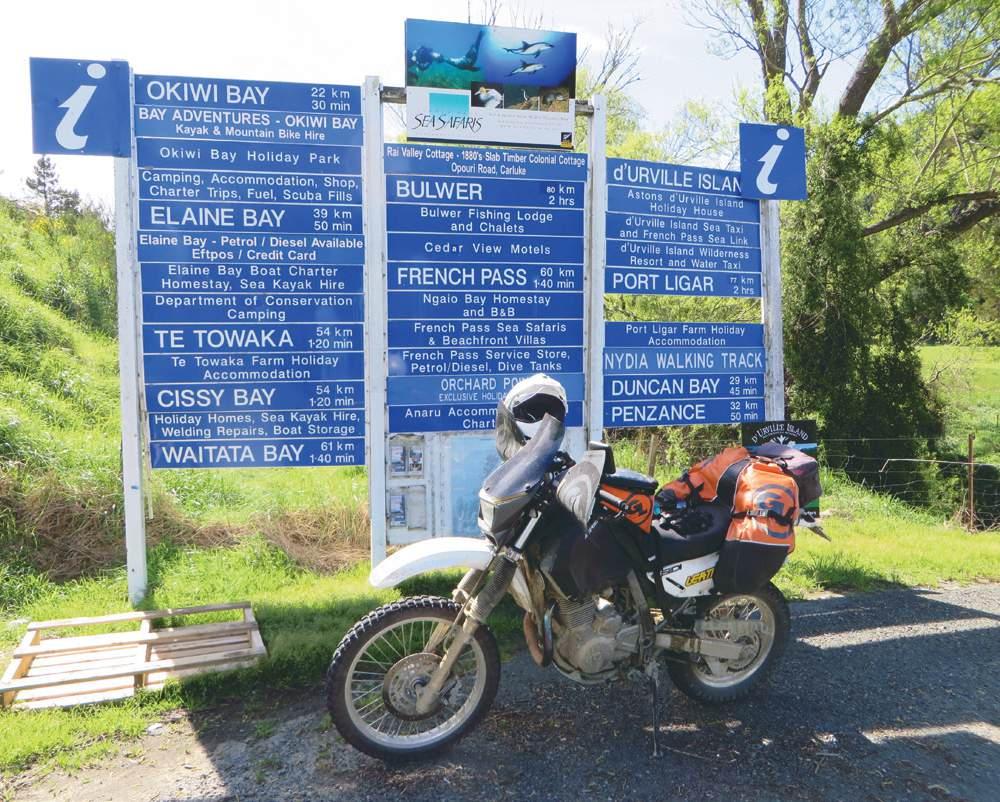
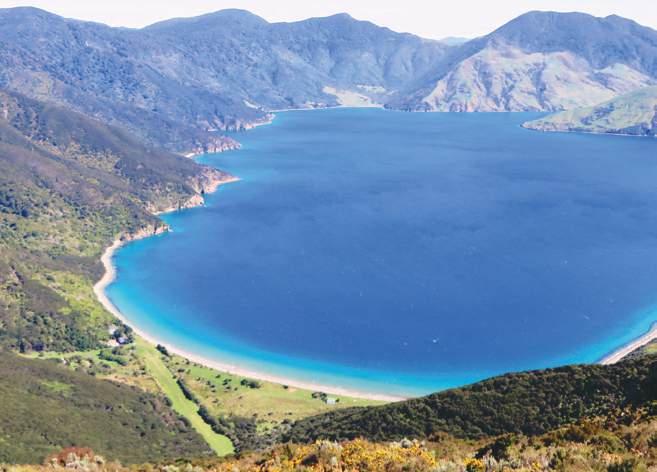
Above:
Left: Remote Port Gore in the outer Marlborough Sounds.
Top right: A couple of days were spent riding and hunting around Port Gore.
the last 30 minutes across private land. I enjoyed four days of trailriding and a spot of hunting, scoring a wild deer for the pot. After the weather cleared and I’d run out of excuses to stay, I made an early start, only to be greeted by a wet and slippery clay track which required the utmost care just to remain upright. Boy. That was a lot of fun!
Joining the winding Queen Charlotte Drive at Linkwater I made Havelock, my next stop for a refuel and coffee fix. Recharged, it was out to the Rai Valley to access more Marlborough Sound roads,
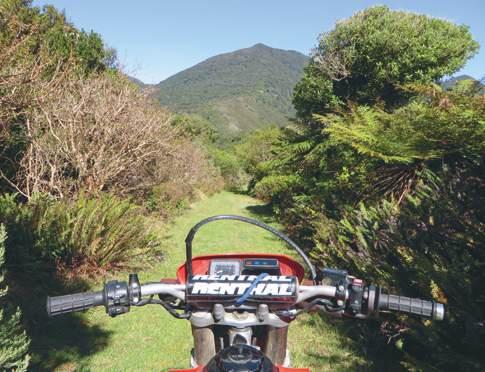
riding through Okiwi Bay and all the way to French Pass. The road ended with the option of boarding a ferry to D’Urville Island, so I snapped a few pics then headed back on the gravel run for another diversion to Bulwer. It was an amazing ride through the many scenic bays and there was very little traffic at that time of year.
Motueka and about
After returning to the Rai Valley turnoff I rode to Nelson and onto Motueka where I’d planned a two-night stay to ride some of the many options available in that area. I was away early as a lot was planned.
First it was up and over the famous Takaka Hill Road with its twisting and winding corners. I’d forgotten how good this road was. Taking a left turn at the bottom of the hill had me riding out to the Cobb Reservoir, and having never been there before I was pleasantly surprised at how good an adventure route it was. Being a one-way trail I had to backtrack to the main road to make Takaka for a bite to eat. The start of the whitebait season meant the little wrigglers were on the menu, so that was a tasty lunch sorted.
After lunch it was off to Cape Farewell, the northernmost tip of the South Island, for a look and a few snaps, also taking in Farewell Spit which was visible from a nearby hill.
Then it was over a hill to the top of the west coast, a look at Lake Kaihoka, then on down the coast past Whanganui Inlet to the Anatori River. You can ride across this waterway and down the beach, crossing a couple of other rivers, if the tide is low. But it was getting late so I decided to head back to Motueka.
east young man
The weather looked bad in the west for the next few days but was forecast to be okay in the east, so with that in mind my intended destination that day was Hanmer Springs.
I took the back road to Tapawera then up the Hope Valley and down the Gowan to Lake Rotoroa. A right turn there and over what’s known as the Braeburn Track sent me down through the Mangles Valley to Murchison and a welcome coffee with lunch. From Murchison I headed down the Six Mile and over the very scenic Maruia Saddle before re-joining the blacktop to Springs Junction and on over Lewis Pass to Hanmer Springs for the night. u
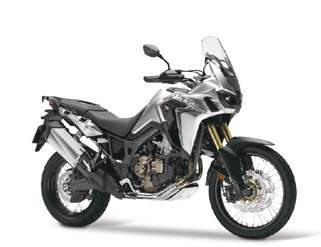
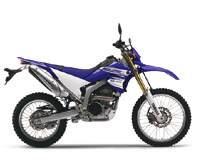
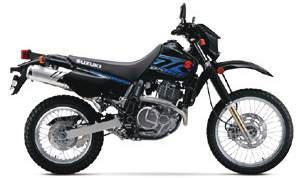
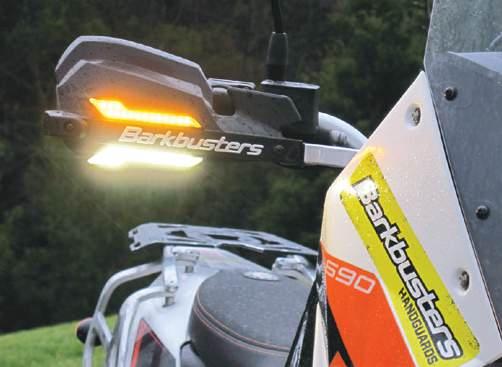


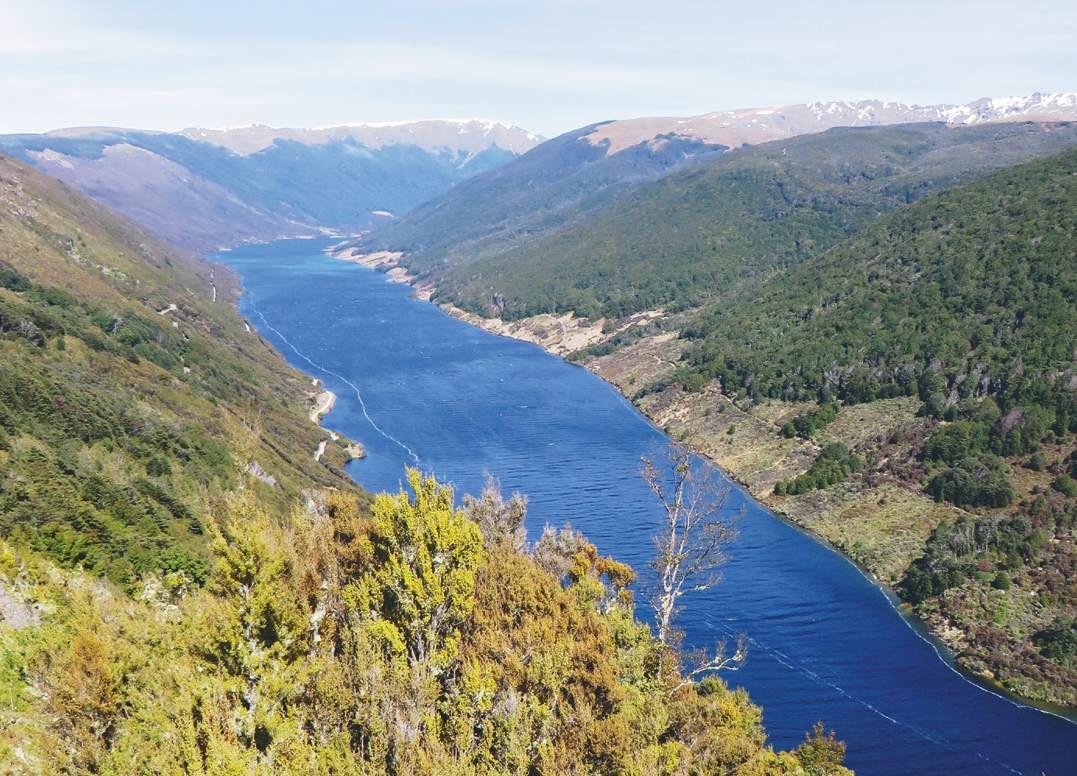
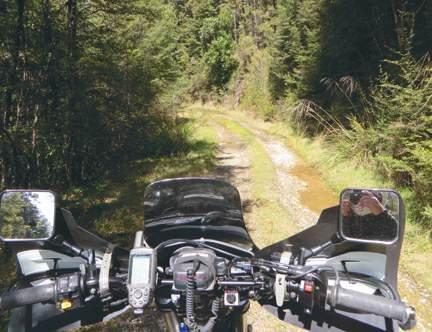
Christchurch and tax collector
It looked like one more fine day before a cold southerly would arrive, so a phone call to a friend in Christchurch organised the next bad-weather stop. But before that there was some excellent riding to be had if I zigzagged my way there on backroads.
After leaving Hanmer Springs I took a left turn to Waiau then over Leader Road and onto HW1 – the main highway for the region – briefly to Cheviot, and from there out to the coast and the beautiful Gore Bay. That led to Blythe Valley and back to the highway.
Within a minute of turning on to the tar I was zapped by an unmarked speed-tax collector – the most valuable accessory I have saved me yet again. Radar detectors are allowed in New Zealand and I wouldn’t be without it,
having saved my licence and thousands of dollars in potential fines over the years. I do many thousands of kilometres every year on my bikes and, thanks to the detectors, haven’t had a ticket in well over a decade.
Following that wake-up call it was back off the infested highway and up the Kaiwara River Road, taking a great 4WD track over the Lowry Peaks Range to Culverden.
After lunch I headed south and rode out to Lake Taylor, then onto a rough 4WD track to Loch Katrine and Lake Sumner. It was a great deviation that rejoined the highway to Christchurch and a welcome catch up with friends.
After two days of rain and blustering wind it finally cleared and I jumped back on the bike. I’d seen an interesting loop inland through the
Lees Valley on the map and it was calling out to be ridden.
While it had cleared on the coast it was still drizzling in the hills, so on went the wet-weather gear for the first time.
It turned out a great dirt route and after the Lees Valley it changed to a rough 4WD track, which I thought was great, but I had to cross the Okuku River.
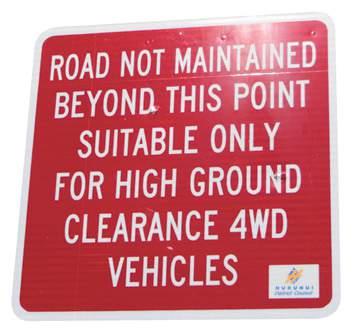
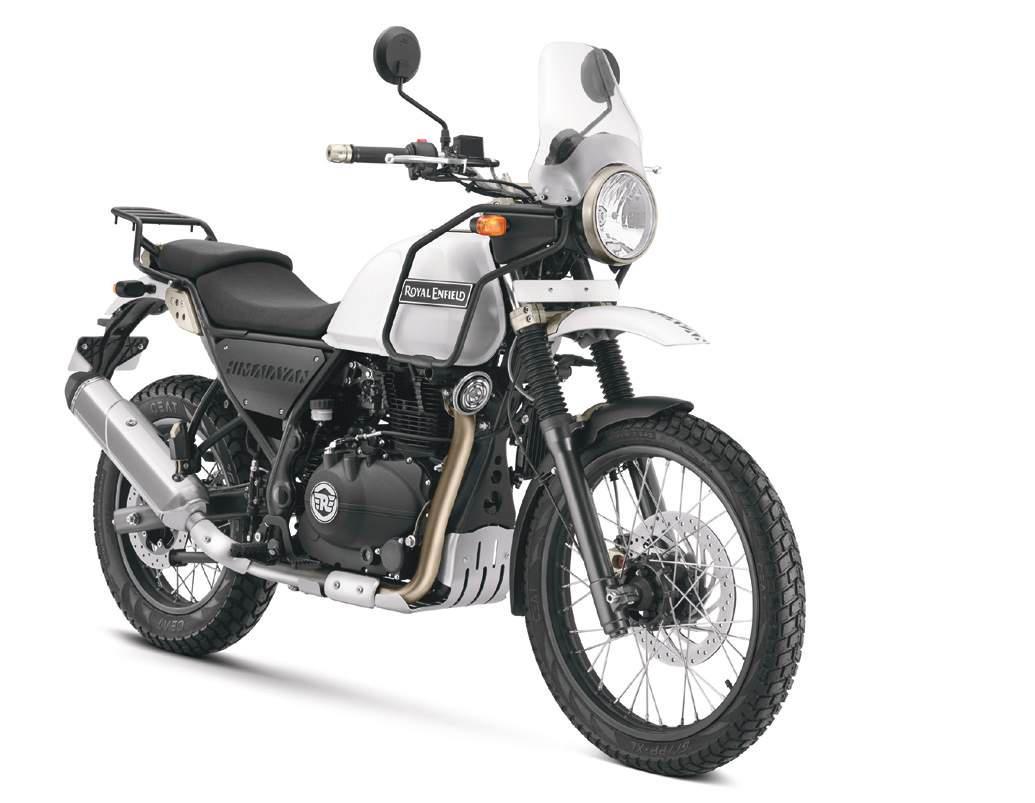
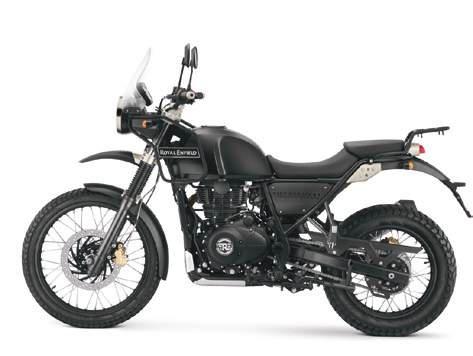
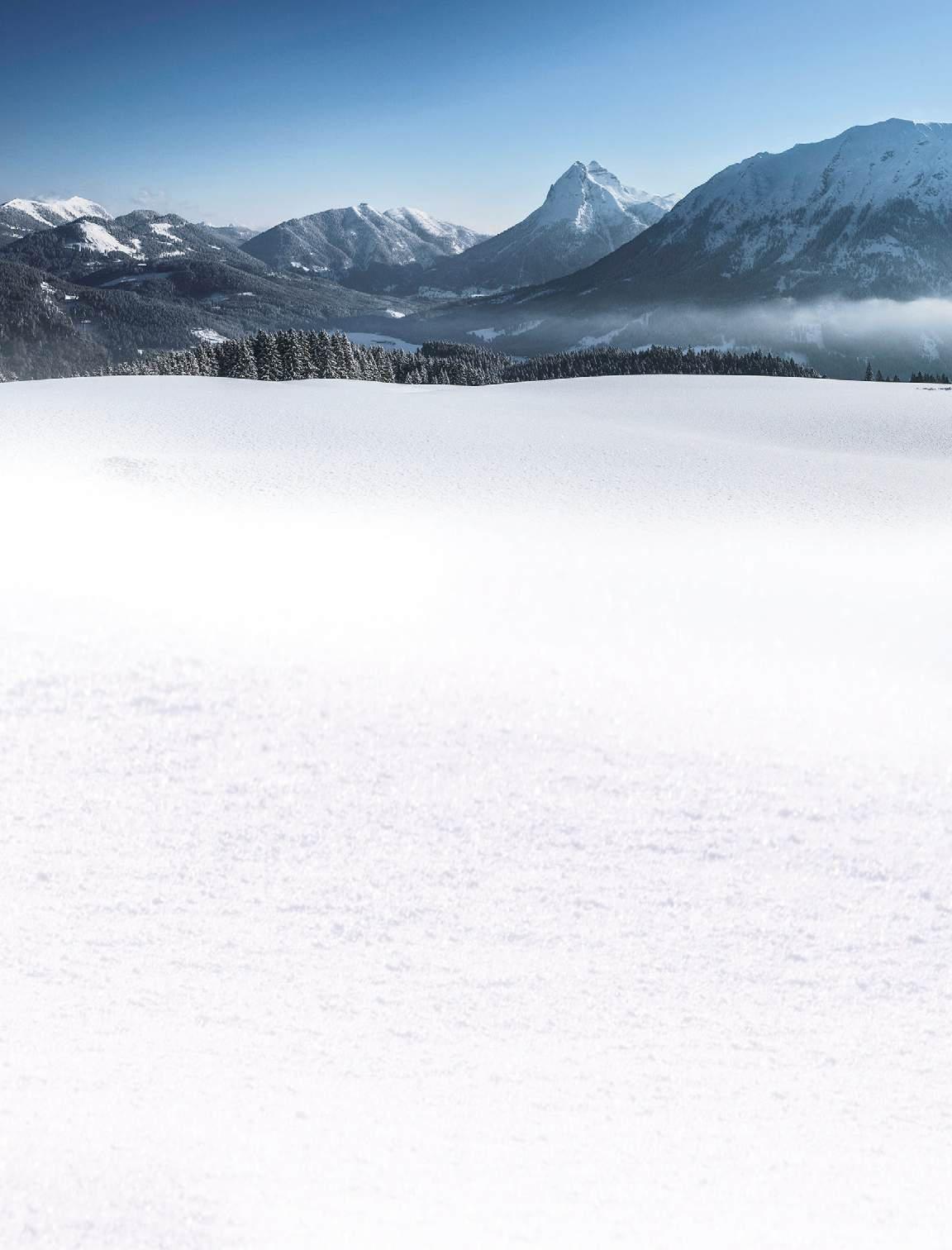
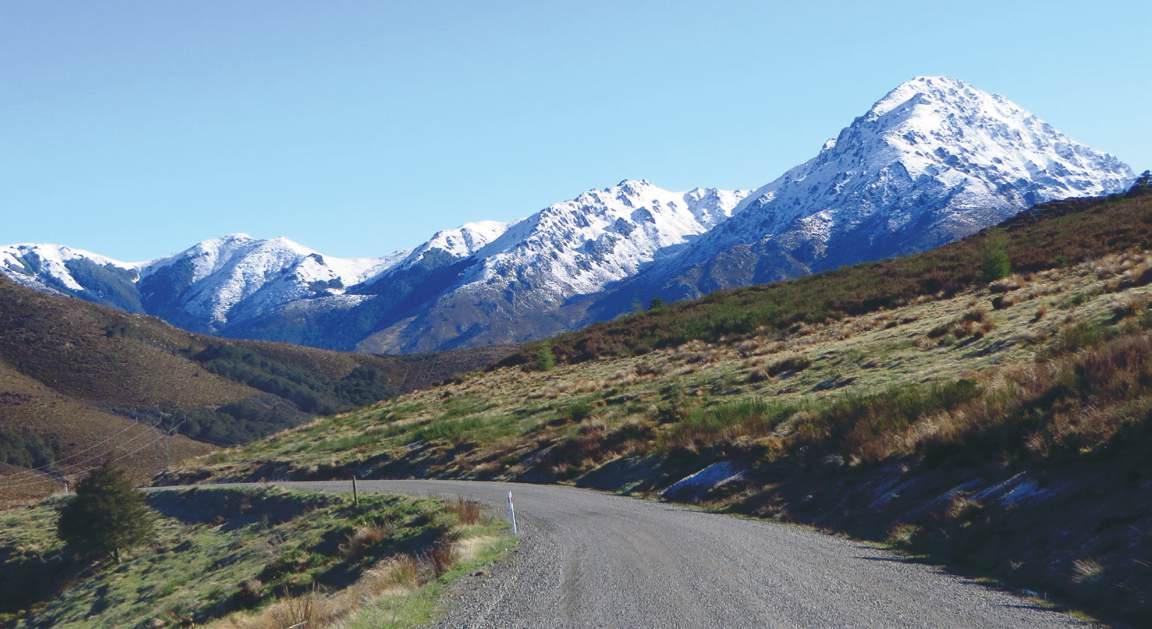
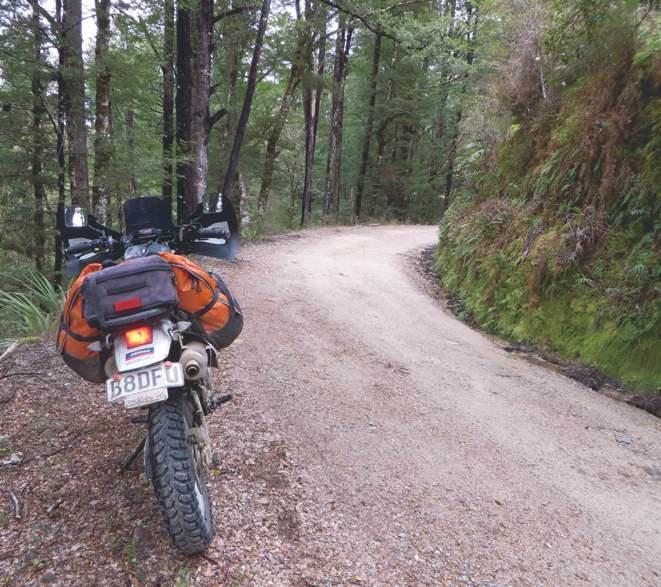
The weather had cleared and I pulled over to talk to a farmer who smiled and said I might have a bit of trouble because the river was up. He was right. Once I saw for myself what it was like I let common sense rule and turned around.
I then rode north to Hanmer Springs for the night intending to ride over Jollies Pass and through the Molesworth Station. The road was due to open the next day after being closed for the winter.
I rose early to a frost and a fresh dump of snow on the hills. It was cold, but a stunningly beautiful and clear day.
The view when I crested Jollies Pass was picturebook perfect and stayed that way throughout the station. I’d never seen the Molesworth like that before, and having only been through in mid-summer the lack of traffic was a bonus. I hardly saw anyone else on the station road.
I stayed off HW1 all the way to Picton, using Taylor’s Pass and the Port Underwood roads to end a fantastic ride around the top of the south.
After the ferry crossing back to the North
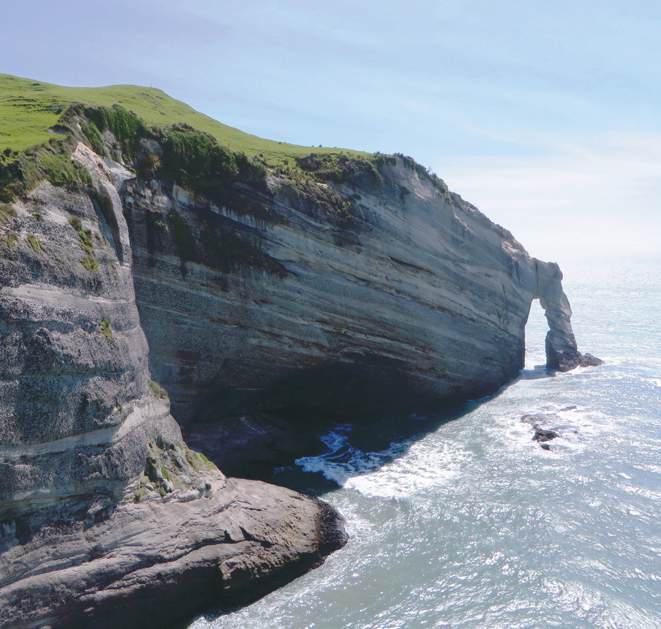
Island I stopped at a friend’s farm for a day before taking the long way home. I rode through the Wairarapa to Napier, and from there turned inland towards Taupo, taking a great 4WD trail through the Whirinaki and Minginui forests. You have to know your way as there are no directions on the many intersections. I fuelled at Murupara then dived back into the forests to TeTeko and finally back to Tauranga.
Time away was two weeks and distance travelled was around 3000km. The enjoyment factor was through the roof!
I made the right choice doing this trip when I did because two weeks later a magnitude 7.8 earthquake caused widespread destruction along the Kaikoura coast and neighbouring countryside. A lot of the roads and bridges I’d just ridden over were badly damaged and needed serious repair work.
However, I look forward to the roads and bridges becoming accessible again for my return some day to do it all over again...and again.

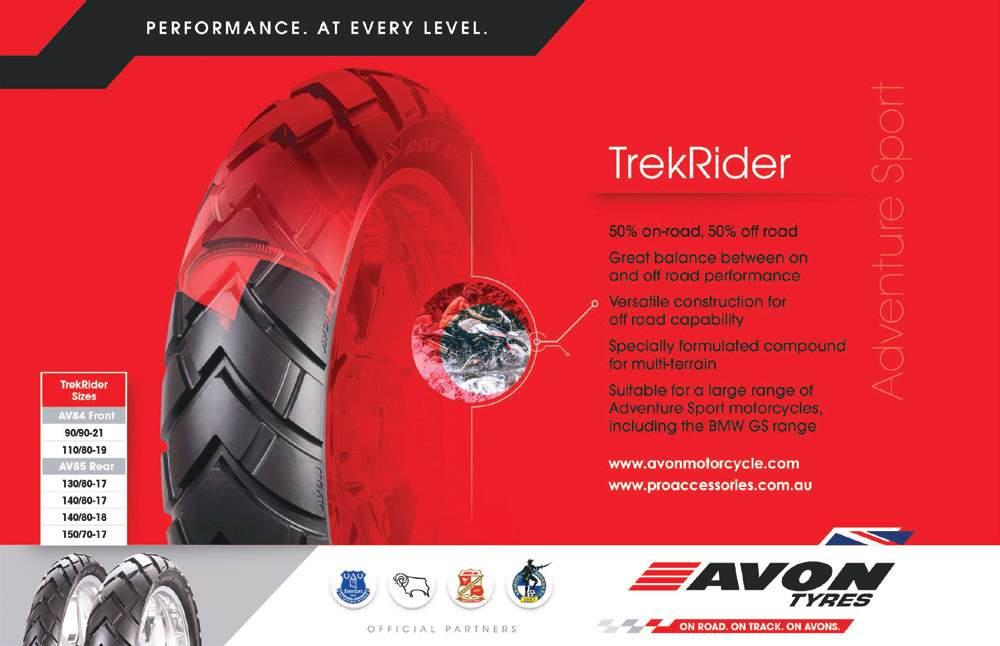
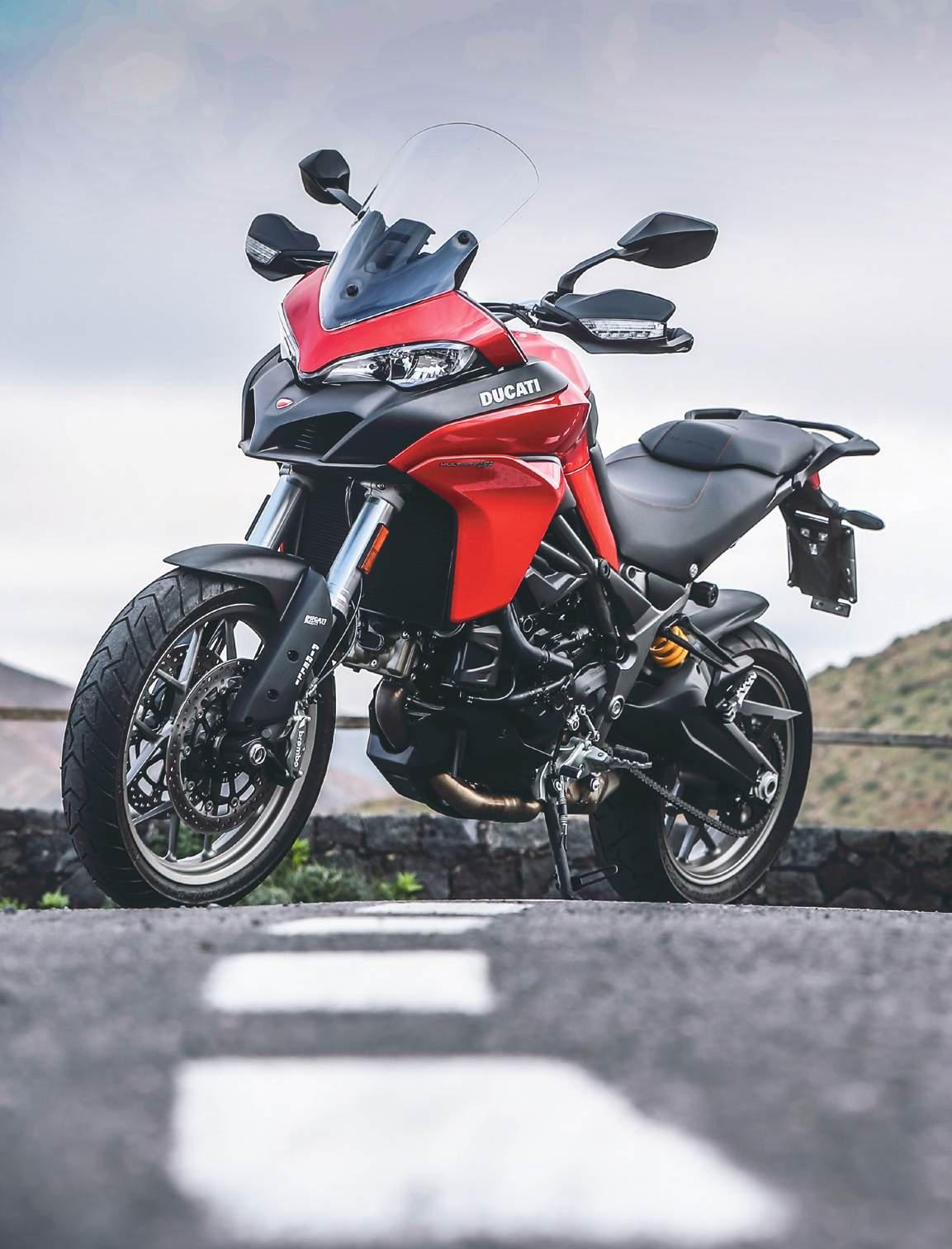
Ducati’s ‘little’ Multistrada is one fast, razor-sharp beastie.
Ducati says the Mutlistrada 950 is designed to ‘provide all the excitement of the Multistrada in a way that makes it more accessible and versatile’.
The Italian performance and style leader has done well. There’s no question the 950 is an exciting motorcycle, and thanks to the price alone it’s a lot more accessible than it’s bigger stablemates. It’s a bloodrush of excitement to ride, there’s no possible argument there, and we can see how some riders would prefer it over the bigger Multistradas.
Whatever. On its own merits, this an excellent motorcycle.
Ducati takes the performance aspect of its bikes very seriously, and that shows on the 950 as much as its does on bikes like the awesome Panigales. In this case a 937cc, 90-degree, liquid-cooled V-twin provides 113 horsepower and a hefty 96.3nM of torque. All that drive churns through a six-speed box with a wet, cable-operated clutch and a chain to offer what we have to say is a fairly glorious turn of speed and acceleration.
Helping control that delightfully growling powerplant is a set of electronic modes: Touring; Sport; Urban and Enduro. The modes are the same as on the 1200, so we won’t outline them again here.
The names of the modes give a fairly clear indication of their intended use and you can read about them in issue #17.
Main and right: The Multistrada 950 will handle off-road work, but it really shines on the tarmac.
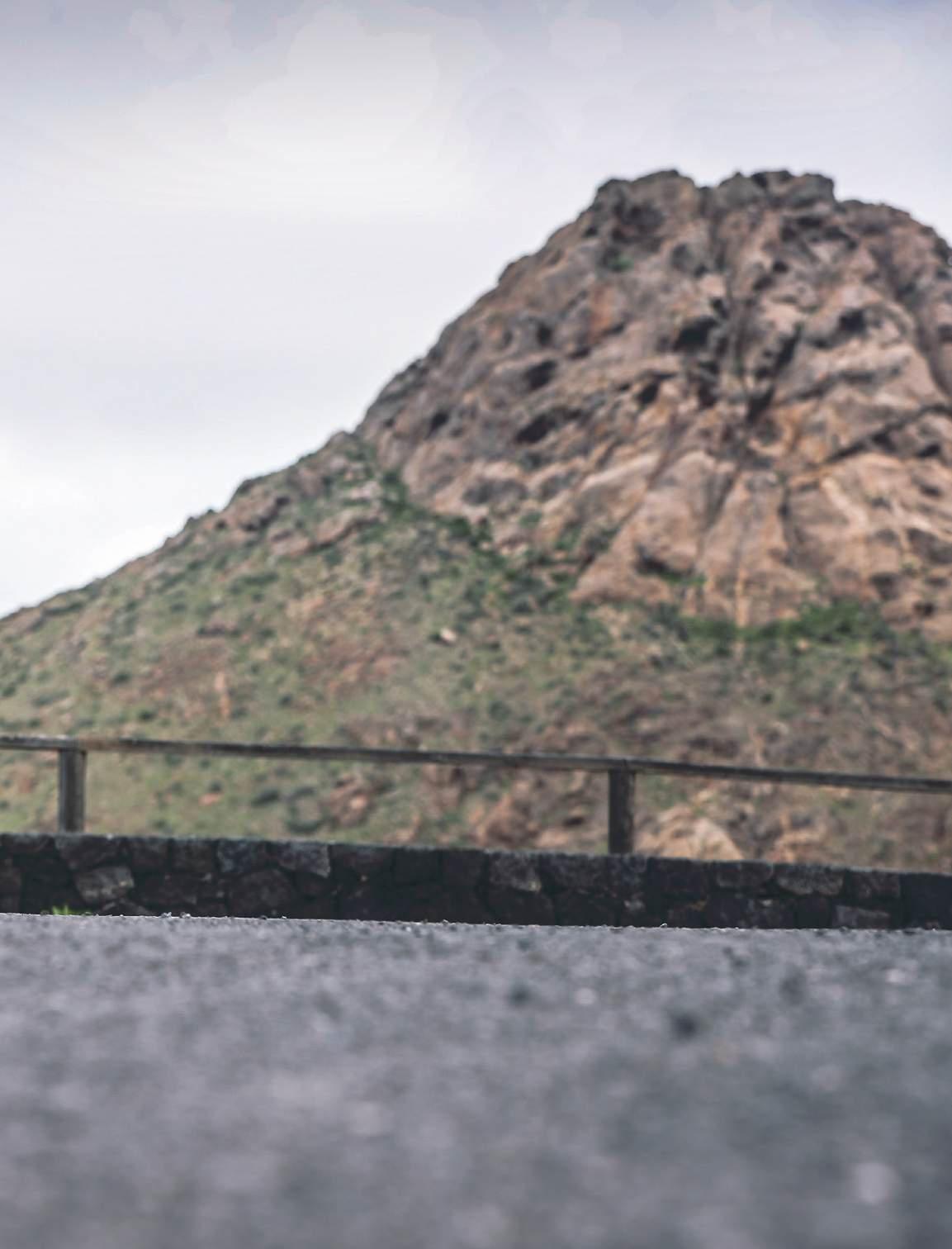
Braking is sharp and strong, beautifully controlled by the ABS system, and is an absolute pleasure to use. Traction control is the same, and of course, both systems can be fine-tuned in the menus. Maintenance intervals on the motor are 15,000km or 12 months, and the valve inspections are scheduled for every 30,000km.
Climbing on the bike is interesting. It immediately feels lighter and more manageable than the 1200 we’ve very happily become accustomed to. But we weren’t exactly sure which specific areas gave the feeling. As it turns out the seat height is lower and the tank holds 10 litres less. On top of that, the 950 weighs in a hefty 21kg less than the big’n. So it’s clear
the bike is lighter and more compact. The riding position is comfortably upright but somehow manages to suggest that if a rider wants to be a little devilish, the bike will be happy to help. Seriously, there’s none of the aggression of a sports bike about the way the rider sits on the Ducati. The ’bars are nice and wide and offer great control, the cockpit has an open feel and the rider’s back is more or less straight. But somehow it’s as though the 950’s begging the rider to drag a knee. We didn’t try it, by the way. But, damn. This bike sure does make it tempting.
Footpegs are solid, alloy units but the tops have a blunt, flat-topped serration that means they’re a tad slippery when they’re wet.
The 840mm seat height means most riders will get both feet down easily,
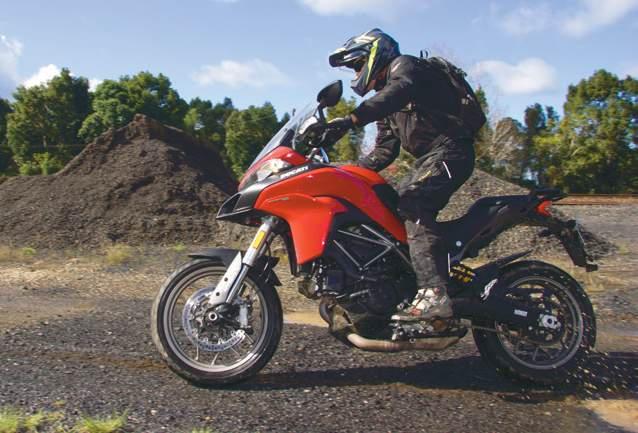
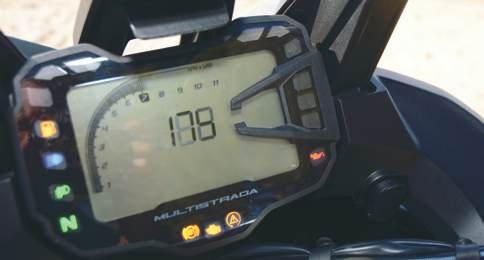
and that’s a big plus when taking a bike off-road. It’s probably the best rider aid of all on challenging terrain. A screen with an easy height adjustment is nice on the long stretches and everything seems like the 950 is a long-distance jewel… except there’s no cruise control.
D’oh.
We must be getting soft, because these days we really look forward to cruise control, especially as bikes put so little effort into illegal speeds – and on the road illegal speeds are home turf for the Multistrada 950.
Not what it seems
Riding the bike is a joy.
Without advanced electronics –especially in the suspension system – we felt a little more in touch with the ‘spirit’ of the 950. Sorry to use such an arty-farty description but it’s the best we can
Above: An LCD display shows plenty of good info and is easy to read. That’s the screen ‘clamp’ above the display. It’s like a bulldog clip. Squeeze the two flanges between thumb and forefinger and the screen can be moved up or down. It’s a great system.
Below: Toolkit supplied! Hallellujah!
do. The gearbox is a little notchy and the suspension behaves exactly as we expect it to behave, rather than surprising us with its incredible smoothness when we didn’t expect it.
Off-road it meant we were successfully anticipating what the bike would do and how it would feel on the terrain we were negotiating. There were no amazing eye-openers when the electronics levelled corrugations and softened landings. We couldn’t ride as quick, for sure, but the 950 still felt great.
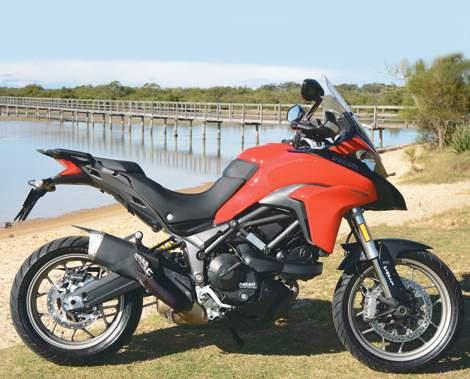
Web: www.ducati.com.au
B IK e spe C s
Even so, we didn’t feel off-road was where the 950 was at its best. Ducati made it clear when we took delivery of the bike that it was more of a dualsport compromise than the 1200, and we feel that view of the bike is spot on. It’s a major-league hoot on dirt roads and it’s well capable of handling some rough going, as long as the rider’s sensible.
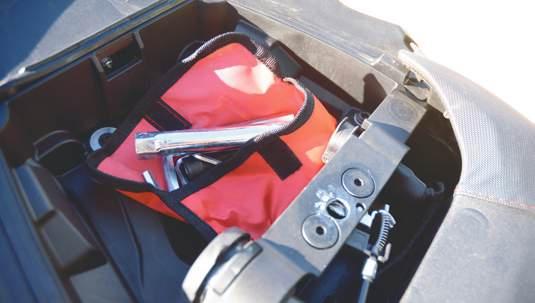
Engine: Testastretta, four-valves per cylinder, Desmodromic liquid-cooled, L-twin four-stroke
Capacity: 937.cc
Bore x stroke: 94mm x 67.5mm
Compression Ratio: 12.6:1
Power: 83.1kW (113hp) @ 9000rpm
Torque: 96.2Nm @ 7750rpm
Fuel injection: Bosch electronic fuel-injection system, cylindrical throttle bodies with ride-by-wire, diameter 53mm
Exhaust: Stainless-steel muffler with catalytic converter and two lambda probes, single stainless-steel muffler
Emissions: Euro 4; 5.3l/100km – CO2 124g/km
Transmission: Six-speed
Clutch: Wet, multiplate, mechanically operated clutch.
Self-servo action on drive, slipper action on over-run
Final drive: Chain. 15-tooth front sprocket. 43-tooth rear sprocket
Frame: Tubular steel trellis
Front suspension: KYB 48mm fully adjustable upside-down forks
Rear suspension: Fully adjustable Sachs monoshock unit.
Remote spring preload adjustment. Aluminium double-sided swingarm
Front brake: Dual 320mm semi-floating discs, radially mounted monoblocco Brembo four-piston callipers with ABS as standard equipment
Rear brake: 265mm disc, two-piston floating calliper ABS as standard equipment
Front wheel: Cast alloy alloy, 3 inches x 19 inches
Rear wheel: Cast alloy, 4.50 inches x 17 inches
Seat height: 840mm, not adjustable. 820mm and 860mm with accessory seats
Wheelbase: 1594mm
Fuel capacity: 20 litres
Dry weight: 204kg
Wet weight: 227kg
Ducati electronics: Riding Modes, Power Modes, Ducati Safety Pack (ABS + DTC)
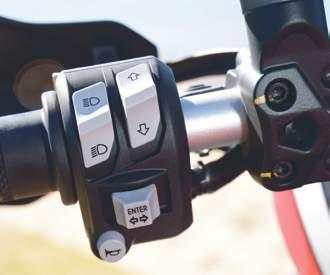
On the bitumen though, the 950 shines. It drives hard and tight in corners, braking is sensational, the modes mean it’s very easy to quickly get comfortable with city traffic, freeways or, best of all, some cut-andthrust on winding mountain roads. That’s where the 950 really rules. It’s awesomely responsive and smooth, and that’s where we loved the feedback to rider...the ‘spirit’ we were talking about.
As an adventure bike the Multistrada 950 is going to suit people who see themselves doing distance on good roads. Dirt roads
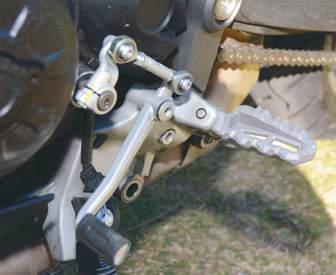
Above middle: The footpegs look gorgeous and they’re solid, but the tops of the serrations are flat with rounded edges. They’re slippery when they’re wet. Above left and right: Switchblocks have a clean and simple layout. Switching between modes is a simple process that can be done on the fly.
will be fine, but to really enjoy the bike the surfaces will ideally be hard-packed and flowing. Desert bulldust and tight trails will be negotiable, but will take some care and heart from the rider.
There’s a great list of accessories available from Ducati, including panniers,
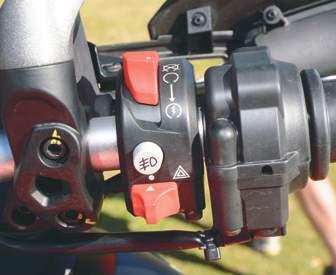
performance pipe, tank bag, LED lighting crash bars and near everything this bike needs for just about every adventureriding aspiration.
It not only weighs in a fair chunk lighter than the 1200, it comes in with much lighter price tag as well, and we can see it’ll appeal to a big slice of riders who want to see the world, but maybe don’t include a Simpson crossing or a run through the Finke Gorge as part of their plans.
The Multistrada 950 is more of an urban guerrilla than a dead-set bushranger, but we bet that’ll suit plenty of potential owners.

COLOURS:
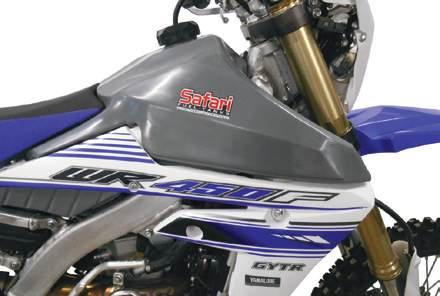
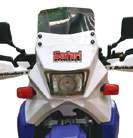
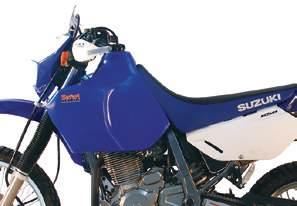

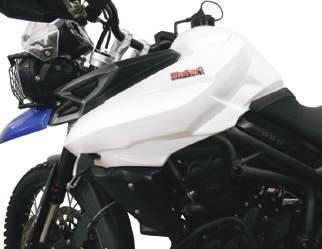
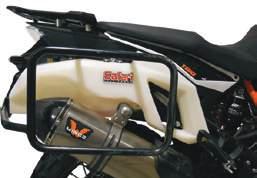
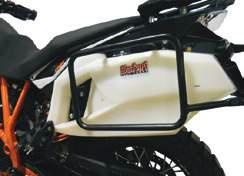
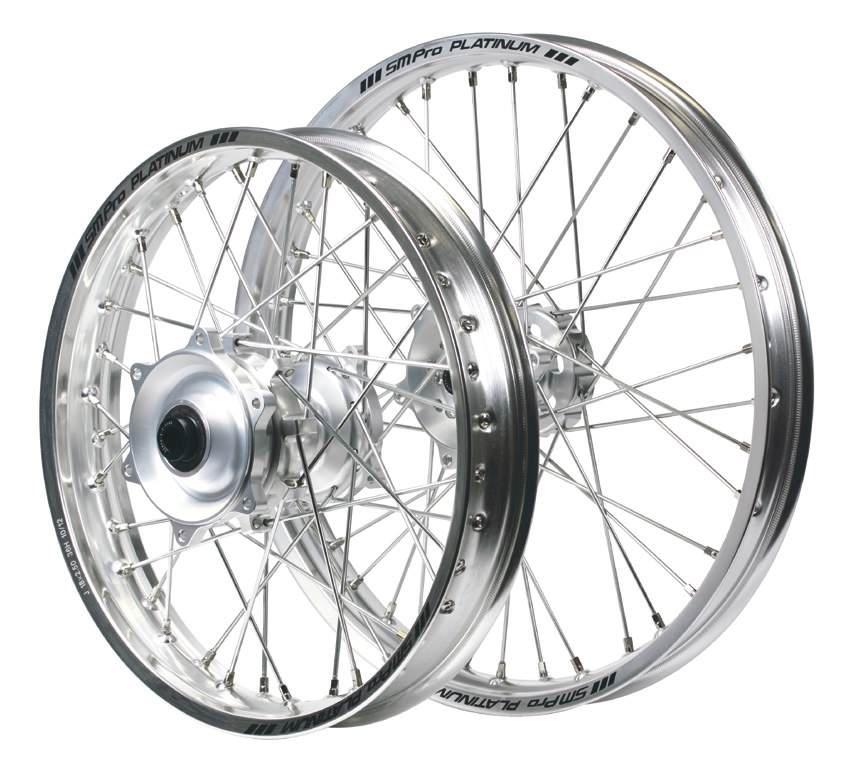
Before everyone gets all fired up, we’re not discussing tyres, rim tape, bearings or axles. All those things can influence a wheel’s performance and durability, but they’re separate to this discussion.
We’re talking about wheels, and wheels have three main components: rim, spokes and hub. Tyres, like it or not, are a separate issue from this discussion. They’re an important factor in how a wheel will perform, and that’s worth remembering, but for now
Wheels are a fundamental part of any transport system. They’re as fundamental now as they were to the first caveman trying to drag home his dinosaurribs for dinner and for the gladiator prepping his chariot for a bit of the ol’ Ben Hur at the Collosseum.
For adventure riders they’re a hot topic because a wheel failure can leave a rider in serious difficulty and damage can be very difficult to repair away from a workshop. What makes a good wheel and what should a rider look for? Here’s a few tips…
we’re just talking the hard parts.
Big adventure bikes are capable of high speeds, sometimes in excess of 200kph, and often weigh in at over 200kg. One of the few things we remember from high-school physics is that momentum = mass x velocity…that, plus if you fart into a measuring cylinder and pass it around the room saying, “Smell this!” nearly half the class will take a whiff.
Anyway, the point is, a big bike moving fast will generate some
massive forces onto its wheels, and if those wheels fail it creates a potentially lifethreatening situation.
Kevin Titman of John Titman Racing knows about wheels. Not only does JTR offer premium after-market components – like Talon and SM Pro – but the company cut its teeth on building and repairing motorcycle wheels. Kevin’s father John has been a wheelwright for as long as we can remember. When he repaired the editor’s XR250 wheel in the early 1990s he was already well-
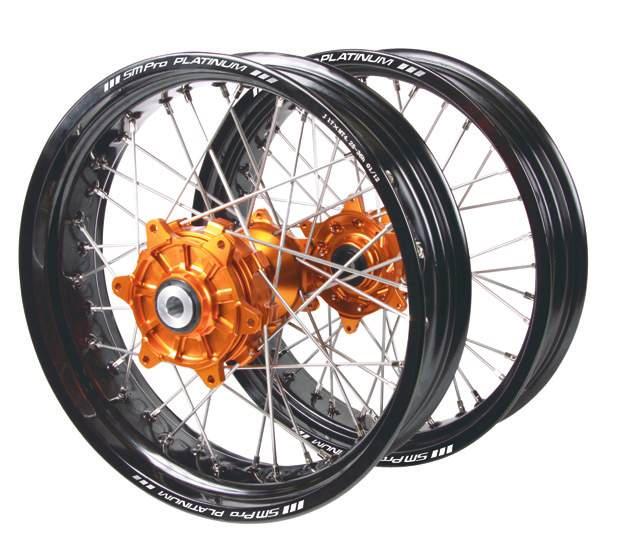
known as an industry expert. He’s still building and repairing wheels in the JTR workshop now.
“Obviously new bikes are kept to a certain price point,” explained Kevin from his office in the bayside suburbs of Brisbane, “so like any high-end performance product, there’s only so many ‘goodies’ they can put on the motorcycle and still meet the price. With rims, the manufacturers can produce an original equipment (OE)-specific rim as part of the wheel, but aftermarket producers often offer stronger options.”
Kevin went on to point out the performance of a wheel couldn’t be improved. He smiled and shrugged his shoulders as he explained, “It’s a wheel.”
It’s the strength and durability of the wheel that can be improved, and that’s where after-market suppliers and wheelwrights come in.
“What we see with the bigger adventure bikes these days, especially the really serious rider who can hit some high speeds and use it on some serious terrain, is the rim is the most critical part of the wheel that needs to be strengthened,” said Titman.
What makes a rim stronger?
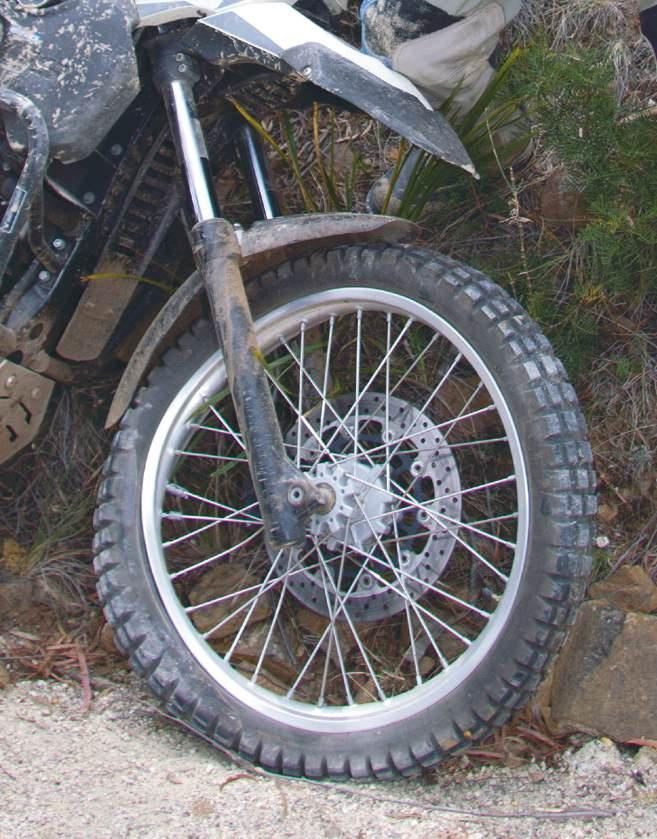
The metallurgy has a lot to do with it.
Most adventure bikes will have OE rims produced in China or Japan, and as we’ve already said, they’re mostly up to the task.
But for riders wanting or needing improved strength and reliability, the go is to manufacture the rim from a higher grade of aluminium. Excel and SMP Pro Platinums, to use a relevant example, are manufactured from the highest grade of 7000-series aluminium.
“It’s an extruded aluminium,” said Titman. “It might be a little heavier than material used in OE wheels, but it’s stronger, and the sidewalls of the rim are reinforced.
“That’s an area we see commonly as a failure point on wheels on adventure bikes. The sidewalls of the rims are a little thin and the riders are hitting things like
cattle grids at speed. They flatten the side of the rim, especially in front wheels.”
The higher-grade aluminium is usually a more expensive option than that chosen by the OE manufacturer, and that brings us back to bikes being produced to meet a price parameter.
We said we wouldn’t talk about tyres in this piece, and we won’t. But tubeless tyres make it even more important to have a rim which won’t buckle the sidewall. A tubed tyre can still get a rider to the next town with a rim shaped like a 50-cent piece. A tubeless rim with a dinged sidewall is a paperweight.
The technology and research on motorcycle tubeless rims for adventure bikes is still a little off the pace of the
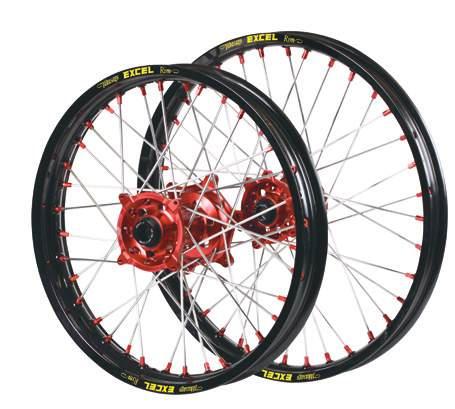
R&D available for tubed tyres, and that makes the issues of rim strength even more substantial for owners using the tubeless system.
Spokes are obviously important, and most adventure bikes in Australia’s marketplace are actually fairly well equipped in that department.
Even so, there are upgrade kits available, and for the hard chargers they can make a huge difference to wheel durability.
Kevin again: “Depending on which adventure bike you have, the genuine spokes are sufficient, but we offer a spoke upgrade where the components are made in England from a special tensile-strength wire.”
Spokes with that kind of strength are used in wheels produced by JTR for supercross, Finke Desert race competitors and Australian Safari entrants, for example. Those spokes make their way on to adventure bikes on all wheels built by JTR at the request of customers as well. The added strength and durability is a big incentive, especially if the wheel’s being rebuilt anyway for a rim problem.
“What you don’t need in a spoke,” explained Kevin, “is stretching and spokes coming loose. That can lead to punctures from broken spokes or, worst of all, the wheel failing.”
Replacing a hub would probably not be high on most owners’ lists, but it’s an option.
A lot of stock hubs are replaced for cosmetic reasons: a coloured, CNCmachined hub looks horn.
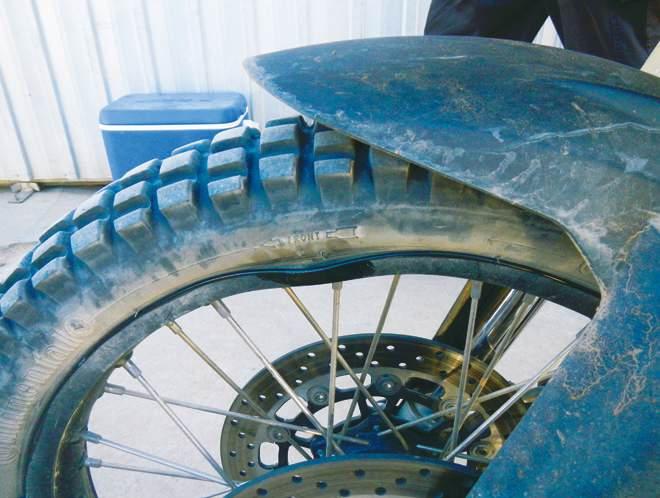
Some hubs are replaced because of damage. Bearings not being replaced is a common one. The rider keeps pushing the bike until the movement of the bearing housing flogs out the material of the hub, for instance. Or perhaps a collision could destroy a hub.
The same parameters apply to hubs as apply to other components. Strength and durability are key. The look of a nice hub is a bonus.
“Some of the demand we see is the need for the motorcycle to actually get to the other end of the ride,” said Titman, “and that’s probably more important to adventure riders than, say, motocross. In motocross a wheel only has to make it to the end of a moto. An adventure rider might be riding across Australia and he needs the component to last.”
JTR sponsors several pro motocross teams, and it’s interesting to hear how the different teams look for different aspects of a wheel. One team may ask for lightweight hubs to decrease rotating weight, another team may ask for stronger rims on the OE hubs, and some teams will just request a bulletproof wheel that will do everything.
And that’s where the rider/owner needs to get focussed.
JTR, for instance, offers three brands of hubs, three brands of rims, high-grade, heavy-duty spokes and a mind-boggling array of wheel-related accessories and spares. If you’re looking to do a wheel
left: Wheels have three main components:
Above: Tubeless tyres make it even more important to have a rim which won’t buckle the sidewall.
upgrade or repair, make sure you’ve worked out what you want. Stronger? Lighter? Less expensive? Special colours?
Whatever it is, get it clear in your mind before you speak to the wheelwright or mechanic.
That way you’re both likely to end up happy.

Thanks!
A big thanks to Kevin Titman for sharing the generations of wheel knowledge at JTR Racing. If you’re in the market for serious wheel expertise or first-class components give them a call on (07) 3245 7499 or log on to jtr.com.au.
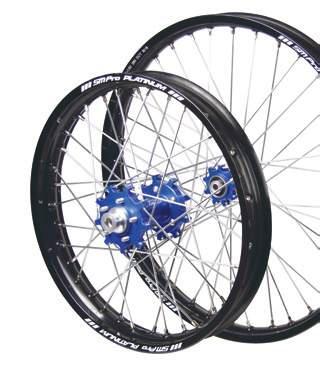
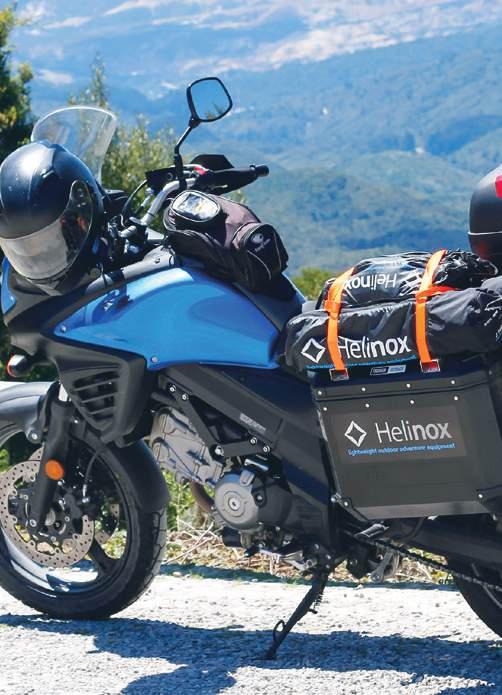

Helinox Cot One’s innovative “lever locking” system provides excellent tension to the bed surface without needing bulky cross-bracing. Assembly is a breeze; fit the side poles & leg frames, lock the 3 levers and you’re done!

Move up to the next level of comfort. Wake up relaxed & refreshed, ready for a new day’s adventure!

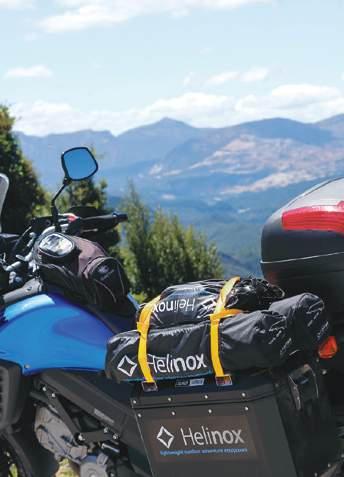
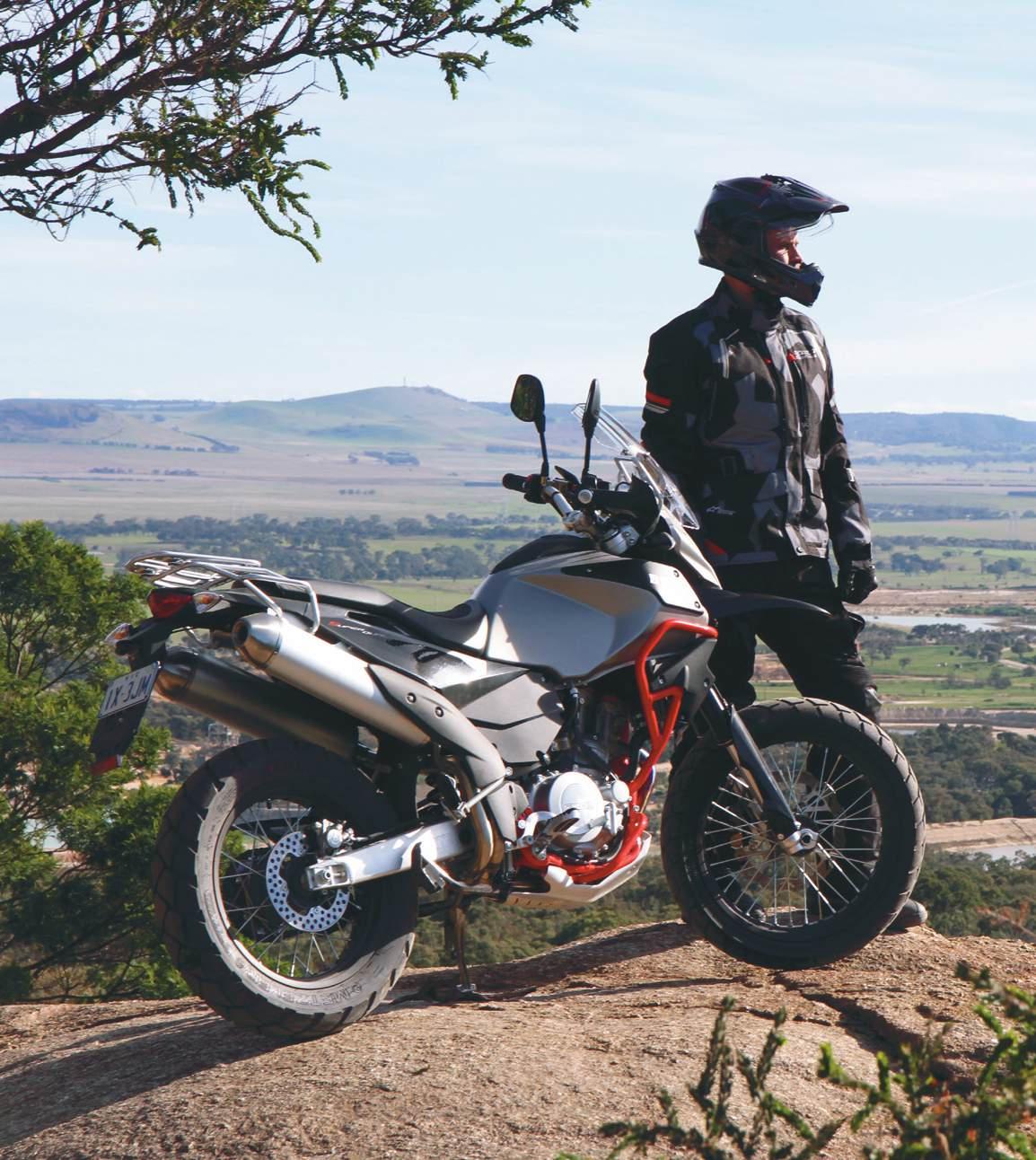
It feels like we’ve been waiting for SWM’s Superdual for yonks. Ever since we first saw the RS650R we’ve been mooning around like lost sheep nibbling at every little web pic and rumour about the adventure-ready Superdual. It’s here at last, and first impressions are good.
SWM kicked off in Australia with just the single model and Adventure Rider Magazine loved it. The RS650R is a versatile, bare-bones, dual-purpose bike that impressed us so much the publisher bought one.
Where the RS650R was a dead-set trailbike – and a good one – the Superdual comes in an adventure guise. The RS650R can be transformed into a good adventure machine using the catalogue of aftermarket accessories from brands like Force Accessories, Seat Concepts, Safari tanks and a stack more, but the Superdual rolls off the dealer floor adventure-ready.
Sharing the same grunty 600cc engine, Mikuni throttle body and GET ECU as the RS650R, the Superdual is likely to grunt and rip with the best of them. But from the mechanicals on up on the Superdual has its own styling.
Equipped with Fast Ace forks that feature compression and rebound adjustment, and an adjustable Sachs shock with remote pleload adjuster, the Superdual is as ready for the dirt as it is the tar. The remote pre-load adjuster allows the rider to compensate for the extra load of pillion or luggage, and a simple dial adjuster beneath the seat on the left side of the bike couldn’t be easier to use.
The 17/19-inch wheel combination should give the Superdual sparkling cornering on tight bitumen roads, but should also work very well in off-road situations. The bikes will be supplied fitted with Metzler Tourance tyres and a cush-drive hub on the rear.
An 860mm seat height is partially designed to suit the wheel size so it’ll accommodate a wide range of rider statures, but SWM has a 18/21-inch wheel
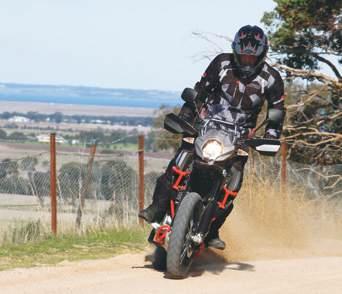
option available for those who prefer that more dirt-friendly combination. The 18/21-inch wheel sets are $1299 retail and come fitted with tyres and brake discs.
An LED speedo displays all the usual options like tacho, speedo, two trip meters and clock, but it also comes with wheel-size options so there’s no need to recalibrate for changes in wheel size.
Protecting the speedo is a neat windscreen that’s not obtrusive yet works well, and there’s provision for a 12-volt outlet on the flightdeck. Handguards come fitted standard.
Standard 15/38 gearing might be a tad tall for serious off-road riding and those looking for tighter trails might consider a few extra teeth on the rear, but the six-speed transmission offers plenty of versatility.
An under-slung exhaust system leading to twin mufflers makes a bit of a styling statement and allows the attachment of panniers without having them jutting out like a motocrosser’s elbows, and a 19-litre fuel tank, side- and centrestand, engine bars, alloy bashplate and rear rack round out the package. The frame and subframe have been modified from the RS650R to allow for the rear rack and potential heavier loads when panniers are added.
The Superdual comes in two forms. The base Superdual T you see here and the Superdual GT, supplied with Givi panniers, pannier brackets and LED lights. SWM will soon be releasing a new Superdual with an 18/21-inch wheel combo direct from the factory. It’ll be designated the Superdual X and will feature a more scalloped-out seat, new
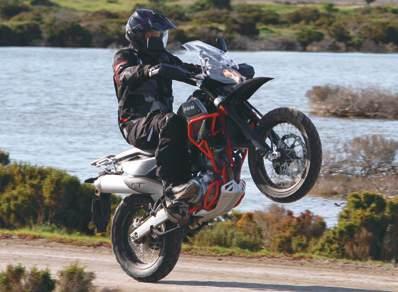
Left: From the mechanicals on up on the Superdual has its own styling.
Above: The 17/19-inch wheel combination should give the Superdual sparkling cornering on tight bitumen roads, but should also work very well in off-road situations.
Top right: Sharing the same grunty 600cc engine, Mikuni throttle body and GET ECU as the RS650R, the Superdual is likely to rip with the best of them.
colours, switchable ABS and will be LAMS approved. It’ll be available in Australia later this year.
SWM is making all the right moves to keep Aussie adventure-riders happy. There’s already 30 SWM dealers across Australia and more being added to meet demand. There’s no doubt SWM’s brand is on the rise.
All SWM spares are imported and dispatched from the SWM headquarters warehouse in Melbourne. On a recent visit to the SWM factory in northern Italy, SWM Australia’s Bob Walters discovered the Italian production plant is bursting at the seams with credible personnel and infrastructure.
“Employees at the factory are largely ex-Aprilia and ex-Husqvarna,” Walters said. “The production plant is state-ofthe-art with engine-testing stations, dyno rooms, three-stage production lines and a model-sculpting studio.”
The Superdual T is $9990 recommended retail including GST plus ORC. The Superdual GT is $11,490 recommended retail including GST plus ORC.
Both models come with 24 months or 20,000km parts and labour warranty.

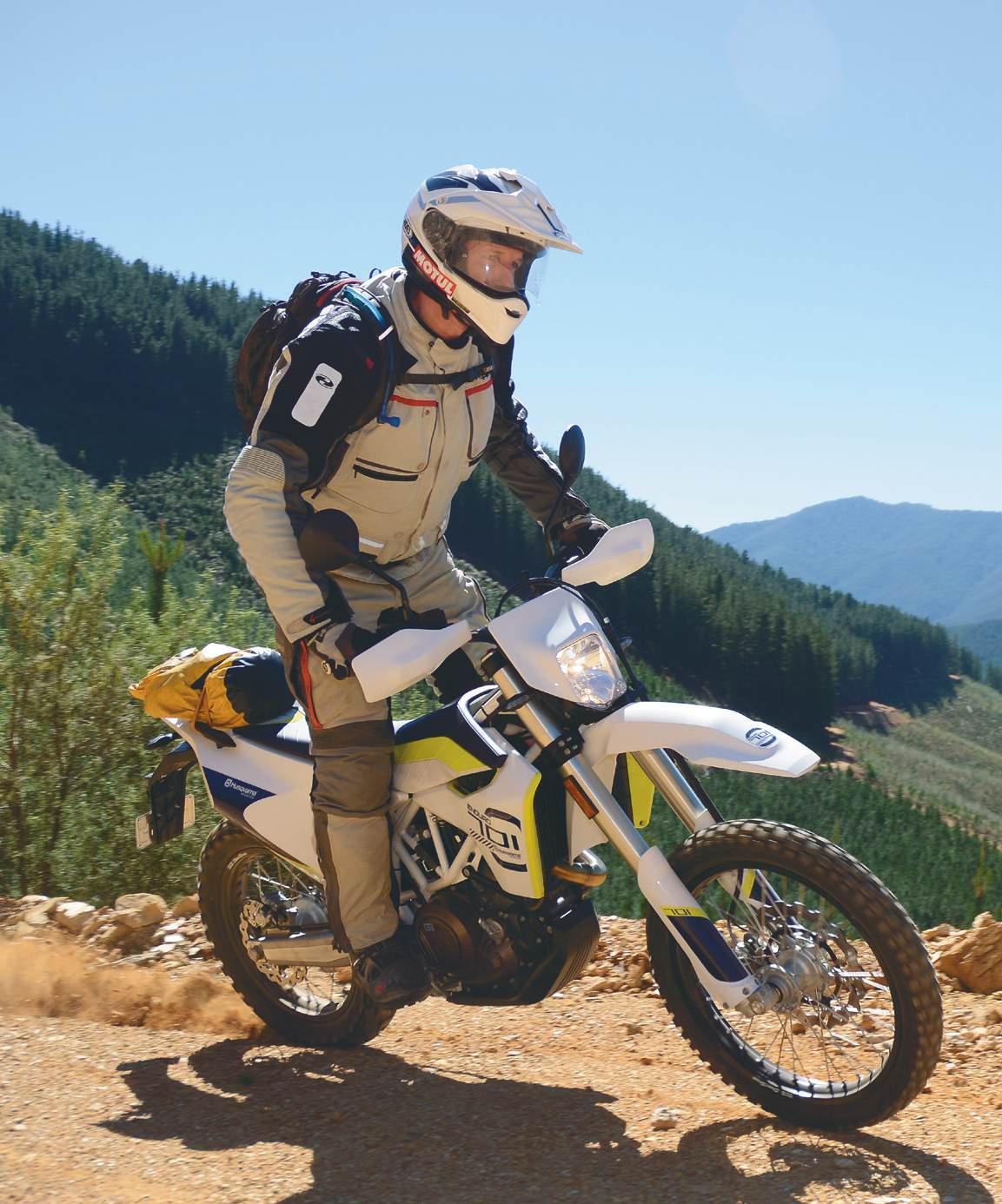
A bike we fell in love with in issue #18 has found a place in the Adventure Rider Magazine shed. Husqvarna’s 701 Enduro 2017 is a sensational, dirt-oriented, high-performance adventure bike. With what we have planned it’ll need to be.
In the short time since KTM acquired Husqvarna the brand seems to have rapidly elevated itself to the lofty heights of its 1970s and ’80s heyday.
Graeme Jarvis is whooping freckle on a Husky in the extreme enduro scene, and it seems all his serious competition is riding either a Husqvarna or a KTM. It also seems most results we see for off-road events around the world have Husqvarnas featuring in podium positions, even AMA supercross, not traditionally a successful arena for the marque.
We only bring that up because we’re among those flocking back to the brand, and the bike that’s won us over is the 701 Enduro.
Before we left the car park on our first ride in issue #18 we knew were riding something special. By the time we’d put the bike through its paces we were besotted fans, choking back a misty tear of joy at the rebirth of the Swedish brand that had featured so strongly in our teenage dreams of international competition and world championships.
The 701 Enduro isn’t going to suit everyone as an adventure mount. It doesn’t have the creature comforts a large sector of the market values so highly. There’s no fairing, heated grips, rider modes, adjustable screen or anything from the list of accessories
considered essential by so many long-distance riders these days. What it does have is a fabulous motor with awesome power delivery, excellent suspension, great handling and braking, and a firm, flat seat that goes all the way up to the steering head. The bike itself is very narrow and revels in being ridden with as much aggression as a rider can offer.
It’s a dirt bike with a 692.7cc, liquid-cooled, single-cylinder, fourstroke motor, and it’s ready to tear apart huge swathes of scenery with a flick of the wrist. The motor says so, the suspension says so, and even the seating position says so. If you’re competition-oriented kind of rider,
Left: The more aggressive a rider gets, the better the Husky performs.
Below: Although the 701 is happy to knock off long distances, it’s at its best when levelling tough terrain.
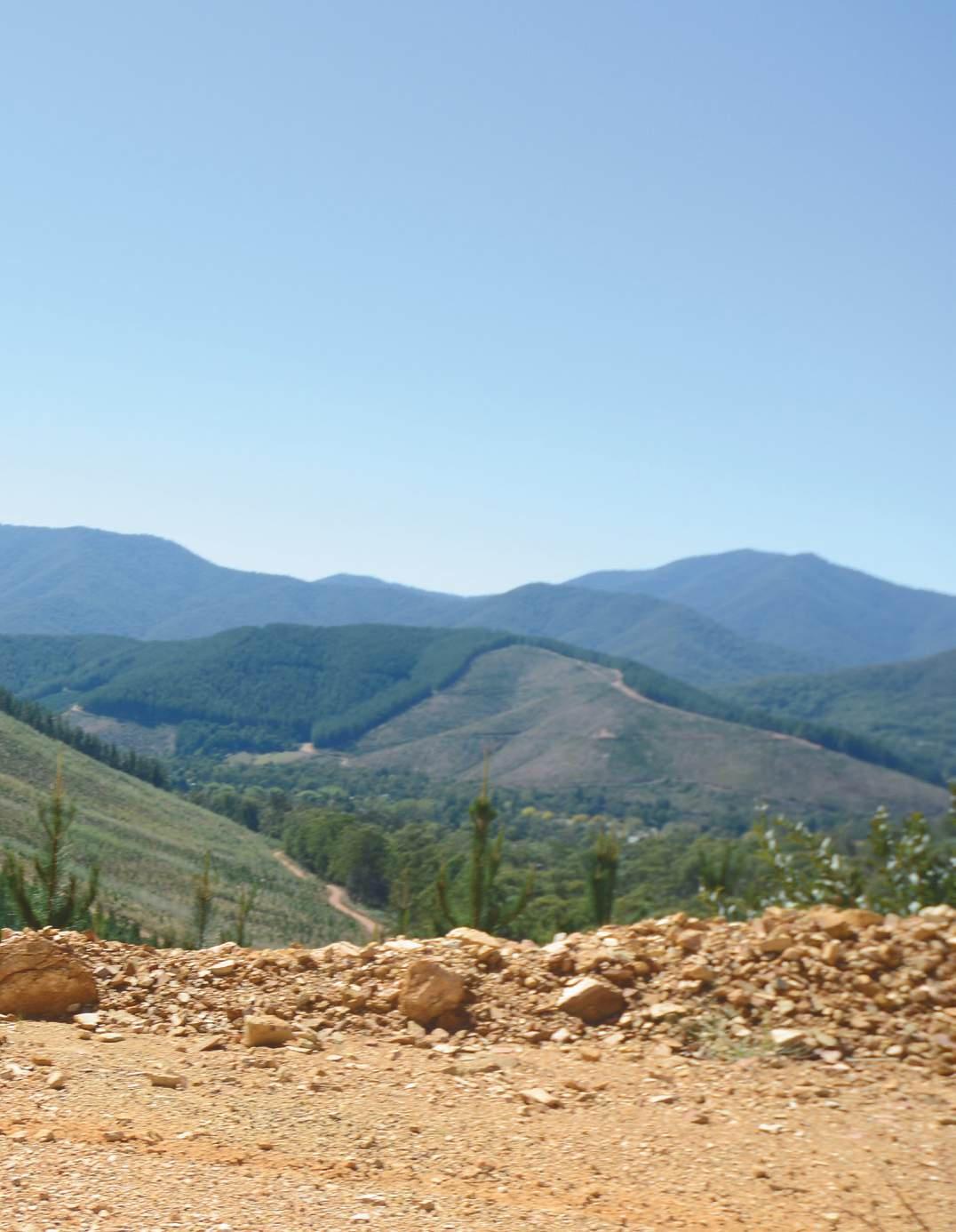
the Husky 701 Enduro will have your elbows up and weight forward, and you’ll be smiling like Jorge Lorenzo when Rossi fell on the last lap of the French MotoGP.
The running gear and rolling chassis of the bike you see here is the same spec as the 2016 we rode in issue #18. The updates are all to do with some fairly impressive tuning and refinement of the motor. There’s now an additional six horsepower and three Newton/metres of torque over the previous engine, and Husqvarna is claiming an extra usable 1000rpm. Reduced oscillating mass makes for less vibration and
u
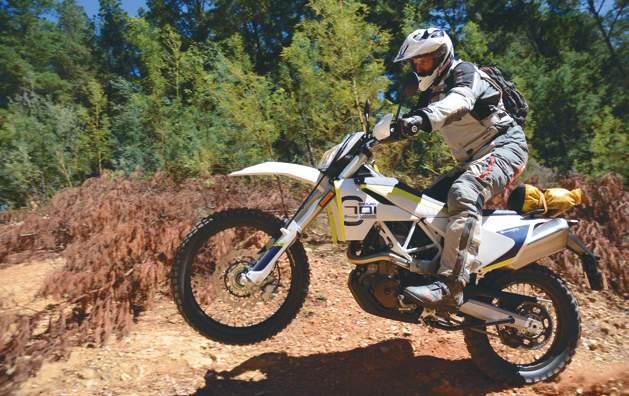
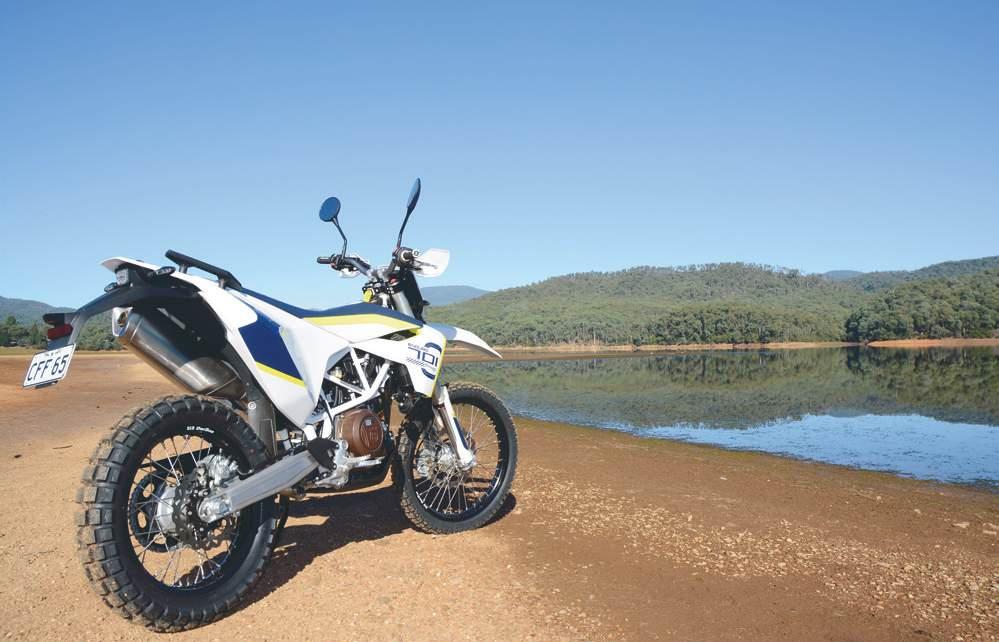
a new intake resonator gives improved response at low revs. There’s a second balancer shaft, service intervals remain at 10,000km and the new configuration also meets Euro 4 emission levels.
That’s a significant performance increase from a motor that had left us in awe before the upgrades.
Just to complete the mechanical picture, the incredibly grunty motor drives through a six-speed box and superlight hydraulically actuated slipper clutch. Suspension is WP front and rear – 48mm upside-downers at the front and a linkage system at the rear – and the superb braking is Brembo both ends. Wheels are 21/18-inch front/rear, weight measured at the brochure is 145kg without fuel, and the tank holds 13 litres. Rounding out the dirt-bike-feel picture, seat height is 910mm, suspension travel is a whopping 275mm both ends, and there’s a hefty 280mm of ground clearance.
Those aren’t the parameters of a bike
designed to show its best on the freeway.
We actually did some fairly long bitumen runs on the Husky and it handled them really well, but it’s when it’s knifing at light speed through tough terrain, leaving the comfort bikes wallowing in its dust, that it really shines. Grab a copy of #18 for a detailed rundown of the Husky’s ins and outs.
After all that build up what could we possibly have in mind that’ll be worthy of a bike a like this one?
A double Simpson crossing, that’s what.
Above: It even kind of looks like a dirt bike…a very sexy one.
below: The instrumentation is very compact but offers a surprising amount of information.
Right: The paper airfilter will be swapped for a foam filter. Maintenance is easier in dusty going, and a spare, ready-oiled filter can be carried in a zip-lock bag for quick changes.
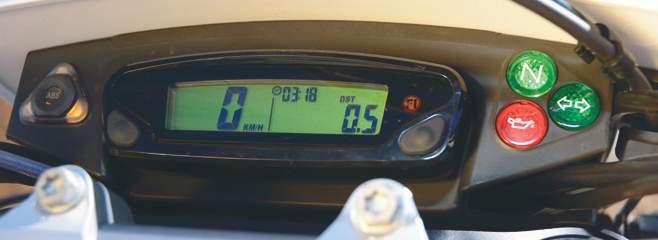
Birdsville to Mount Dare and back again.
We reckon the Husky will lap it up. When we suggested it to the folks at Husqvarna Australia they shrugged their shoulders and said, “We thought you had a challenge for the bike. Go ahead. Knock yourself out.”
We hope we don’t knock ourselves out (it wouldn’t be the first time) but we grabbed the bike and ran.
So that’s where this bike is headed.
Husqvarna Australia has been fantastic. The 701 will have handguards, an ABS dongle so their’s ABS on the front only,
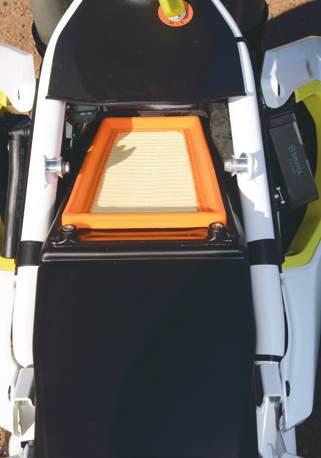
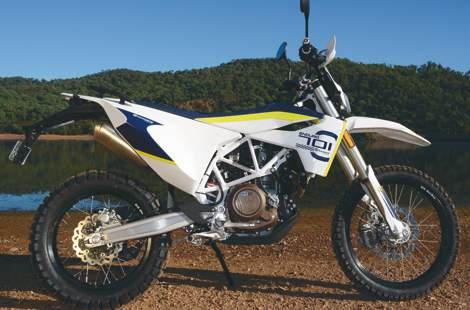


Dry weight: 145kg B IK e spe C s
Web: www.husqvarnamotorcycles.com
Rec retail: $15,995 + ORC
Engine: Single-cylinder, liquid-cooled four-stroke
Capacity: 690.0cc
Bore x stroke: 102mm x 84.5mm
Compression Ratio: 12.6:1
Fuel system: Keihin EFI (throttle body 46mm)
Engine management/ignition: Keihin EMS with RBW, double ignition
Control: Four-valve, overhead cam with roller rocker levers
Starter/Battery: Electric starter/12-volt 8.6Ah
Lubrication: Pressure lubrication with two oil pumps
Engine oil: Bel Ray, SAE 10W-60
Transmission: Six-speed
Clutch: APTC slipper clutch, hydraulically operated
Primary drive: 36:79
Final drive: 15:45
Frame: Chromium-molybdenum-steel trellis frame, powder coated
Subframe: Self-supporting plastic tank
Front suspension: WP-USD 4CS Ø 48mm
Rear suspension: WP-monoshock with Pro-Lever linkage
Front brake: Brembo four piston, radially bolted caliper, brake disc Ø 300mm
Rear brake: Brembo single piston, floating caliper, brake disc Ø 240mm
Suspension travel front/rear: 275mm/275mm
Seat height: 950mm
Wheelbase: 1515mm +/- 15mm
Fuel capacity: 13 litres
pannier racks, skid plate and a radiator guard, all Husqvarna OEM products by the way, and on a bike as good as this one we reckon that should be all it needs. There’s no question every performance parameter of the bike is well up to the job in stock trim. The biggest consideration will be tyres. The big, sandy, red dunes can be an ugly proposition, even on a bike as good as this one. We’ll be looking for a tyre with plenty of bite.
At this stage the plan is to load up the 701 and ride it to Birdsville, leave the excess luggage at the pub, do the double crossing, strap the luggage back on and ride it home again. We’ll let you know how it went next issue.



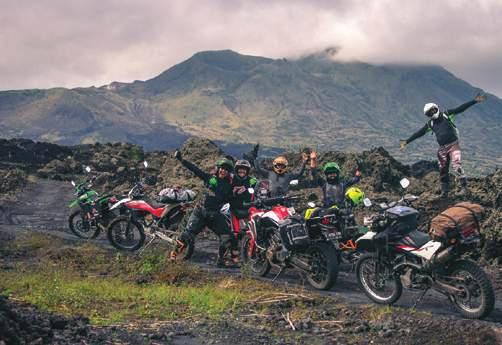
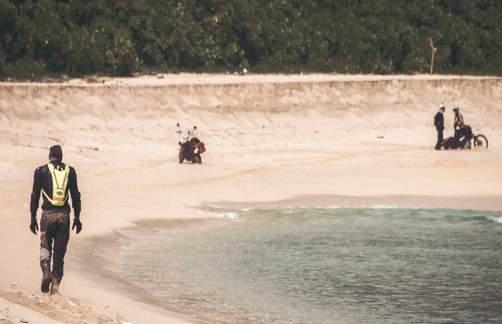
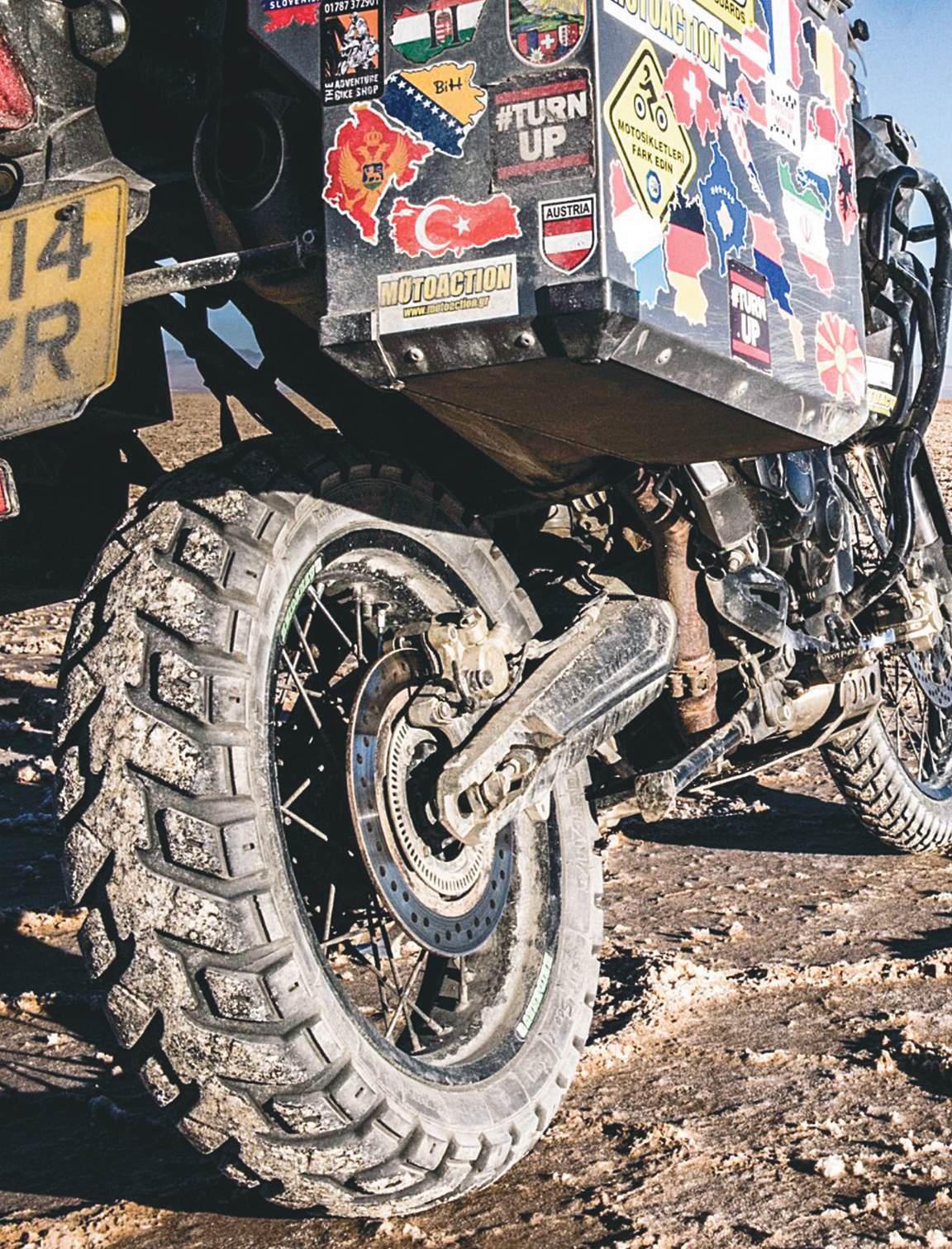
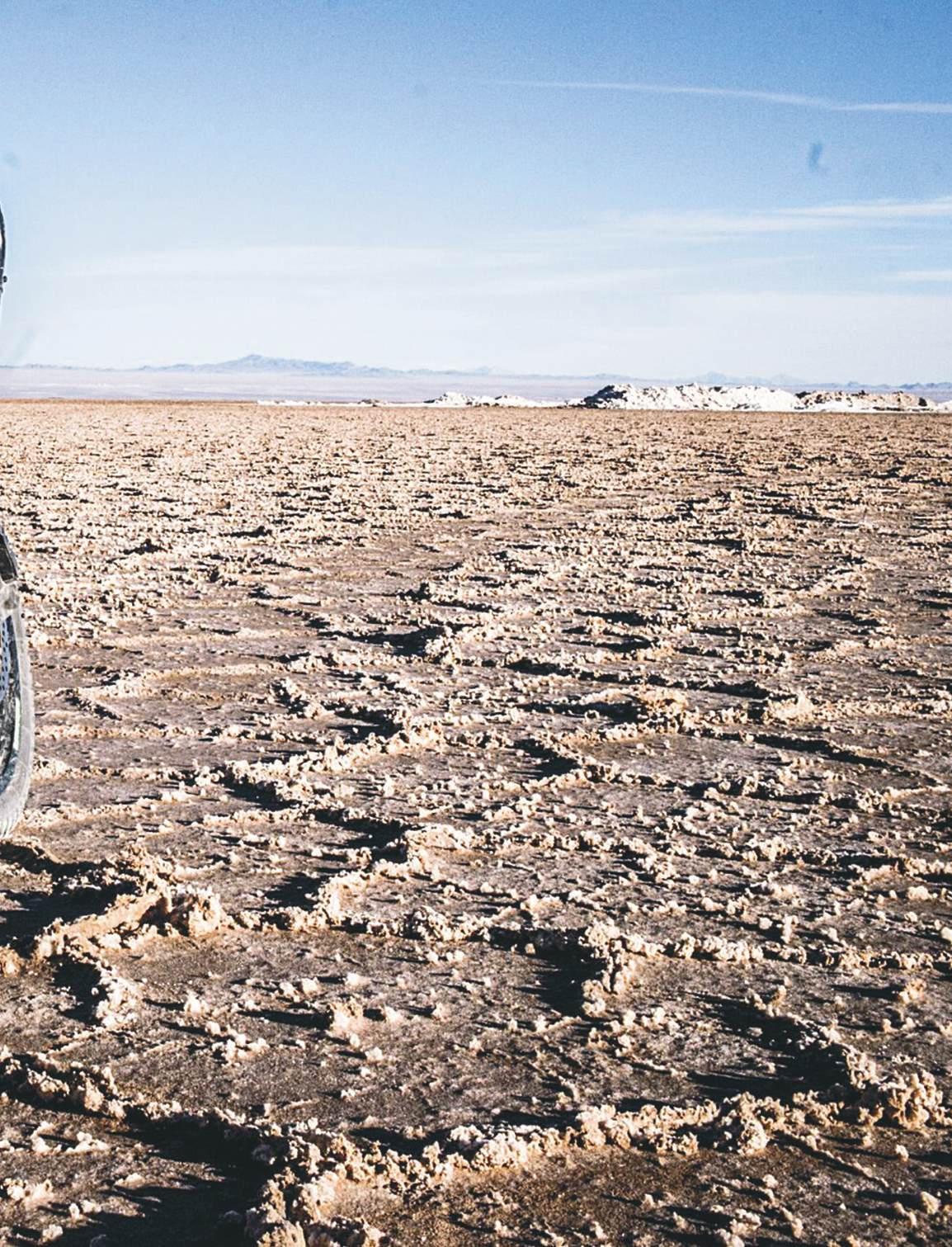
You’d either be extremely mad or extremely brave to attempt riding from London to Sydney. But that’s what one Aussie, known only as ‘Dutchie’, is doing.
In early 2016 I set off from Europe to ride a sponsored BMW GS700 through Morocco and the Atlas Mountains for two months. Travelling overland on a bike became my passion. After roosting among the red sand dunes of the Sahara, ideas of greater overland adventures began to grow.
I was sick of travelling on buses and planes, waiting in long queues and being restricted with what I could see. I wanted to travel freely and backpacking wasn’t giving me that option. I decided to cross the globe, from London to Sydney, on a motorbike.
London
After some financial advice on renting versus buying a bike, I found and bought ‘Trumpet’, a second-hand 2014 Triumph Tiger 800 XC with 15,000km on the clock.
Then came the nitty-gritty details. Planning this trip was no easy feat. There were visas, insurance, carnet de passage (a permit to take a vehicle into countries temporarily) and driving permits to think about. England became a sea of paperwork in which I fought to stay afloat.
Without achieving much, I crossed the
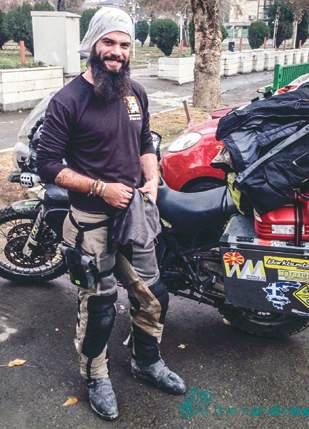
Main: After some financial advice on renting versus buying Dutchie found and bought ‘Trumpet’, a second-hand 2014 Triumph Tiger 800 XC.
Above: Reunited with the bike outside Tehran Central Station in Iran.
English Channel to France with no more than green card insurance and a carnet de passage for the bike. The rest I decided I’d figure out on the way.
I rode through old cobblestone streets and small villages in coastal France, rural, narrow farming roads in Belgium, over winding floodbanks and past windmills in the Netherlands and, of course, the stunning Swiss Alps. No matter how many twists and turns you take, the Alps will never bore you.
Northern Italy was dotted with tiny churches. Pizza, pasta, gelato, coffee, seafood, Lambrusco, salami...the world’s best food hands down, along with marvellous mountains too: the Dolomites.
The feast continued in Hungary with some pork knuckle, cabbage rolls and cucumber salad. Oh, and beer. Lots of cheap beer.
Although I made plenty of friends along the way, I enjoyed the solo travel. Being alone allowed me more time to process my thoughts and analyse myself. It encouraged independence and self-reliance over time and tempted new adventures. It’s socially liberating.
I continued through the farmland and lush, green hills of Slovenia and slept in a hostel that was actually a school. u
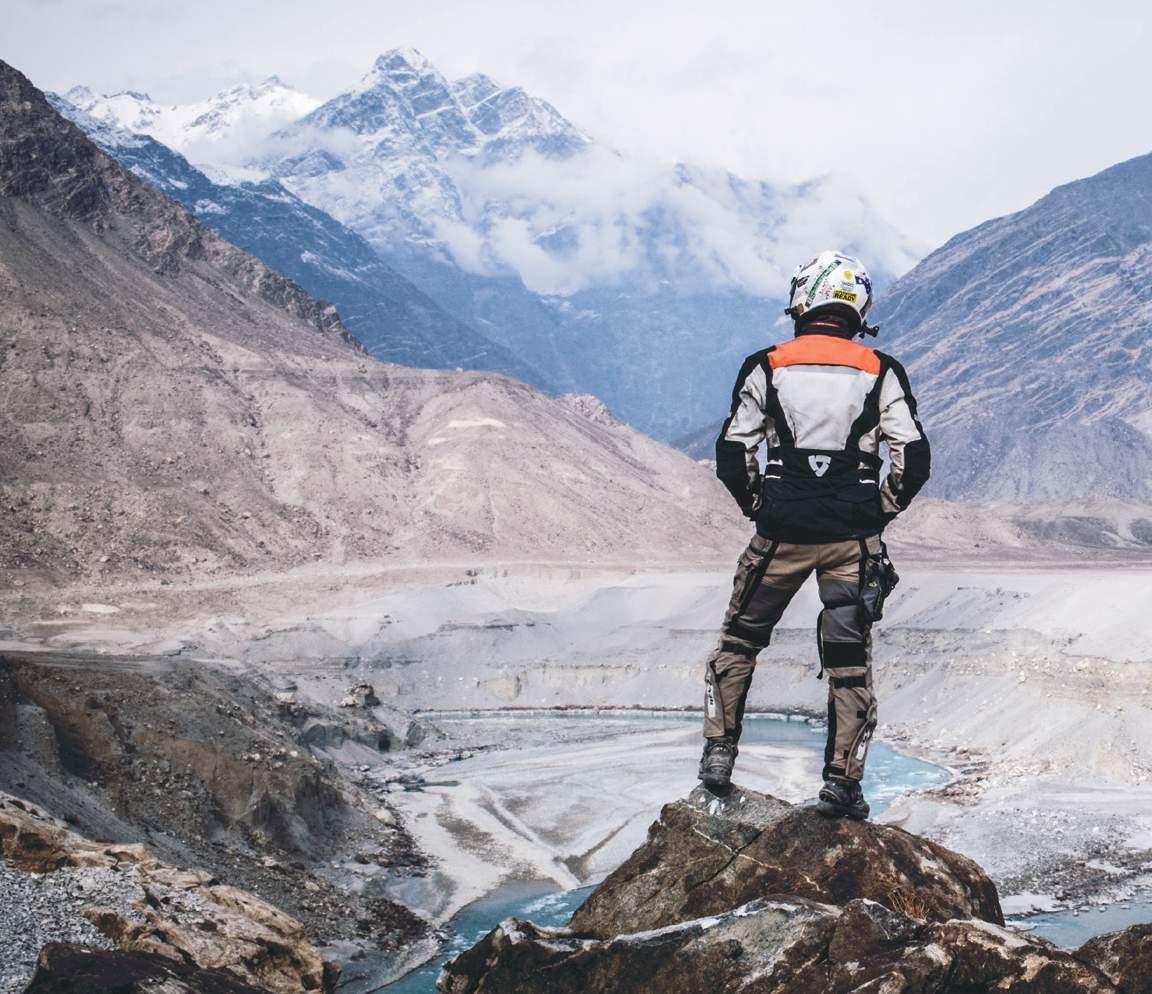

Or was it a school that was actually a hostel? Through the Balkans I rode until I arrived in Thessaloniki, Greece, which became home for three weeks.
So there I was in Greece, waiting for my passport to arrive from the Pakistan embassy in Sydney. You can only apply for a Pakistan visa from your country of origin, so I couriered my passport and papers home, and being without a passport left me feeling somewhat naked in yet another foreign land.
Although it feels strange, I don’t believe it’s necessary to be overly organised to travel these days. You can sort it out along the way, especially as the overland travel community, and most people around the world, are helpful and full of information. As long as you have the
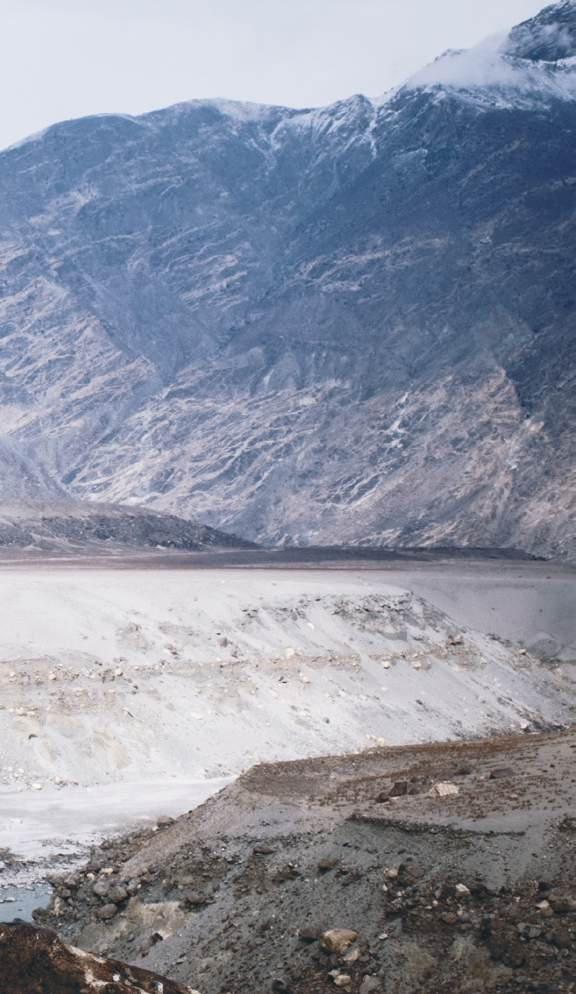
right attitude, you can worry less and ride more.
With the ‘riding more’ part being at the top of my list, I took the opportunity to ride through Epirus, known for its classic Ottoman arched bridges, deep gorges and bears. Days in Thessaloniki were spent eating gyros and calamari, making new mates and awaiting my passport.
Riding a Triumph was always going to make searching for spare parts interesting. Greece was the end of seeking specific parts for my bike unless I wanted to pay huge amounts for shipping, so before I left I secured another sponsorship and some ‘just in case’ spare parts.
Foreign aid
Having finally received my passport, I left for Istanbul.
It’s true what they say about drivers in Turkey: they go where they want, when they want, how they want. Mosques towered over the dark Bosphorus Strait, separating Europe from Asia, and after some pistachio-filled treats and a confusing visa application for Iran, I was off towards Georgia along the Black Sea coast. u
21-27 October 2017
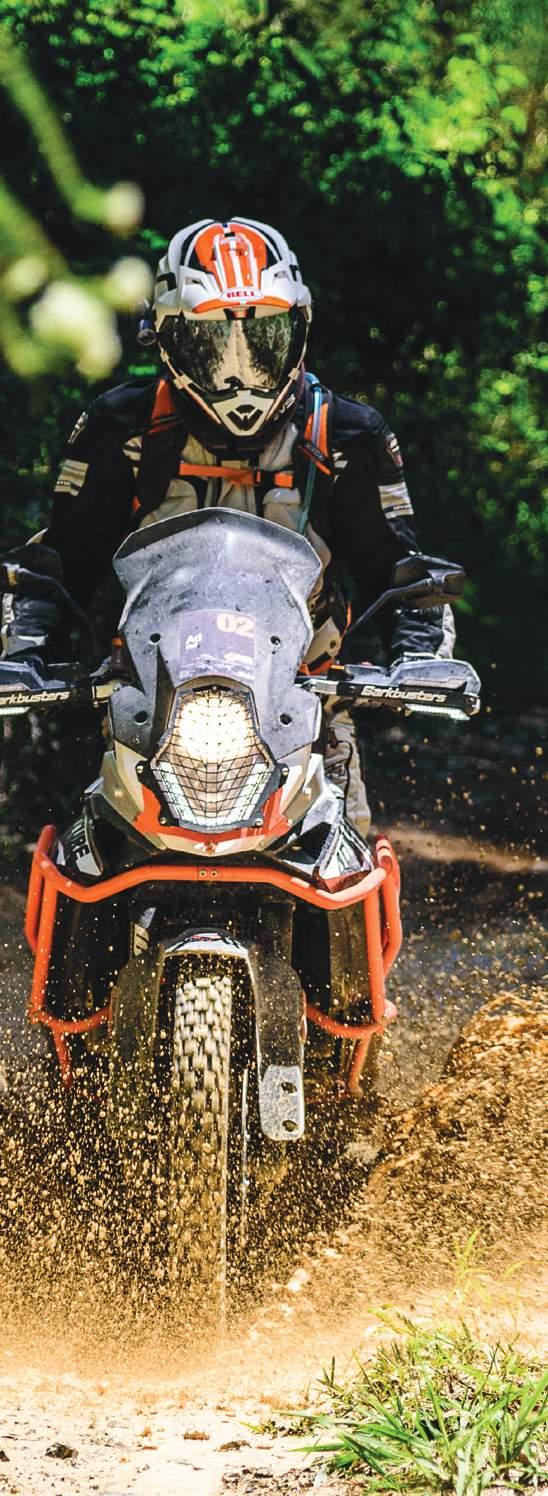

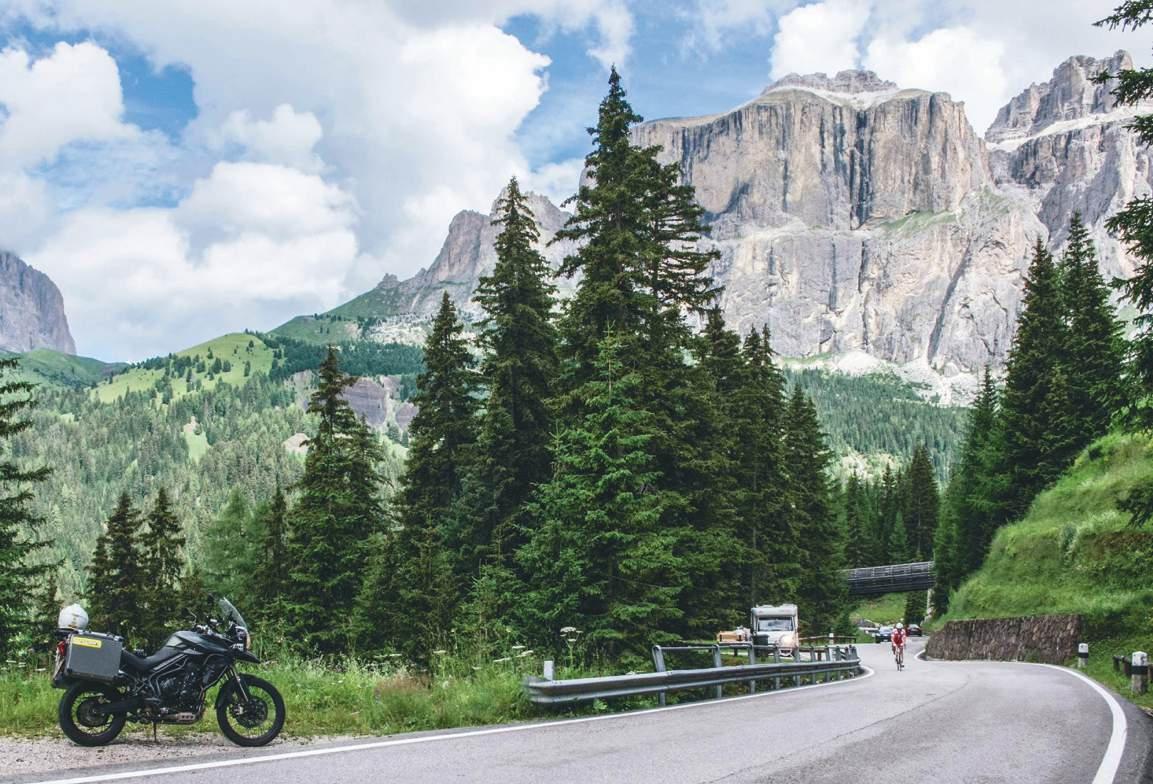
The bike was heavily searched by officials on arrival at the Georgian border. The curious Georgians even wanted to strip down the minimal fairing left on the bike.
I continued my ride through rainy Georgia with green mountains on either side of me. My rear tyre slid around on the muddy trails and within minutes I was off. Some farmers quickly came to my aid, welcoming me to Georgia in broken English. After a few minor repairs I was invited into their home for a hot cup of coffee and a song.
I’d broken a few things in the middle of nowhere, but fortunately nothing major enough that couldn’t be held together with a spare strap, cable tie or duct tape…and an adjustable wrench.
A wrong turn
Once in Iran, the first thing I achieved was an unspectacular off-road crash.
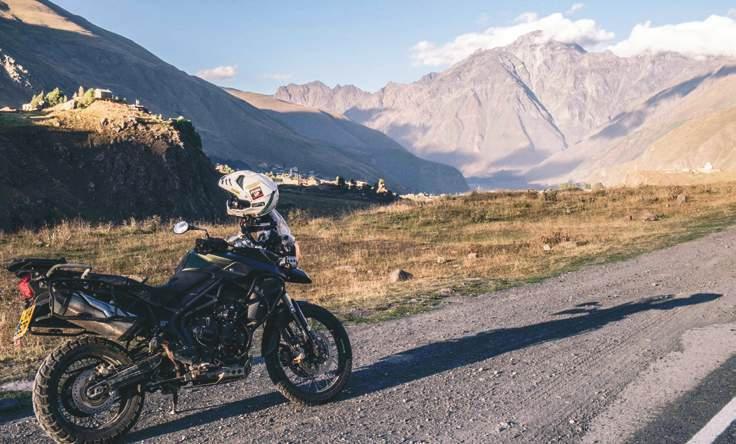
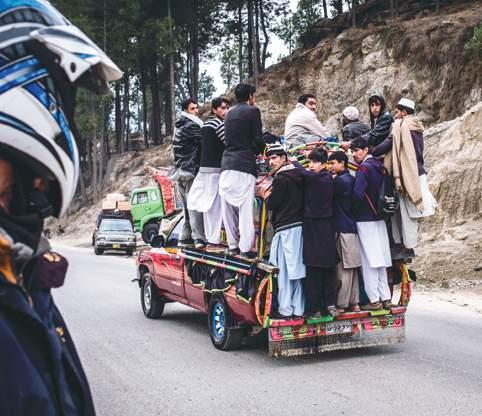
With the front end hanging off miserably, I turned to cable ties and duct tape. Six hours later, limping into the heart of peak-hour Tehran, my clutch plates decided to roast themselves. A long, drawn-out series of unfortunate events ensued.
The following week in Tehran was spent looking for new clutch plates (the last set had turned a peculiar shade of rusty brown), which a mechanic managed to source. It was meant for a Suzuki, but when there’s no other low-cost option, you use what works to keep going forward. We welded the front end back together (tacho, fairing, mounting brackets, windscreen).
My visa to enter Turkmenistan had been denied, and that meant I missed out on riding through all the ’Stans, the Pamir and the Wakhan Corridor. Instead I decided to go through Russia and China, so I had to spend another week in Georgia awaiting my Russian visa. Soon after, I ran into some more frustration when a Chinese tour I’d booked and paid for was cancelled. The company also decided returning my money was optional – an option it didn’t take. I was on my way to the Russian border in icy temps of four degrees below zero when I received the message.
At that point I was ready to call it quits. I’d already gone all the way to Iran, failed to get a visa for Turkmenistan, crashed the bike and backtracked 1500km in two days to Georgia, waited out two weeks of constant rain for a $100 transit visa for Russia, and then lost $400 on the Chinese tour.
I spent three days riding back to Greece to replace my non-adjustable cam-chain tensioner and find a heavy-duty cam chain to replace the stock one that was rattling like a monsoon of maracas. It was much quicker and cheaper than having it shipped to Georgia. With time so short, I couldn’t organise a new tensioner, so I had it repaired instead.
I’m glad I didn’t call it a day after all the drama. Pakistan is really something else and holds a special place in my heart. The Karakoram Highway stretches for hundreds of kilometres across Pakistan and China and is an absolutely incredible ride.
I’d planned on entering through the south of Pakistan with the usual dire warnings of safety directed my way. However, the more I heard, the more I wanted to see this u
• WA store dedicated to motorcycle travel and adventure riding
• Riding gear, soft & hard luggage, travel & camping gear, books, maps, DVDs, communication systems, & much more
• Certified Earmold agent
• Open 7 days a week
• WEB STORE NOW OPEN
As experienced international two-wheel travellers, we can help you choose the right kit for your next ADVENTURE!















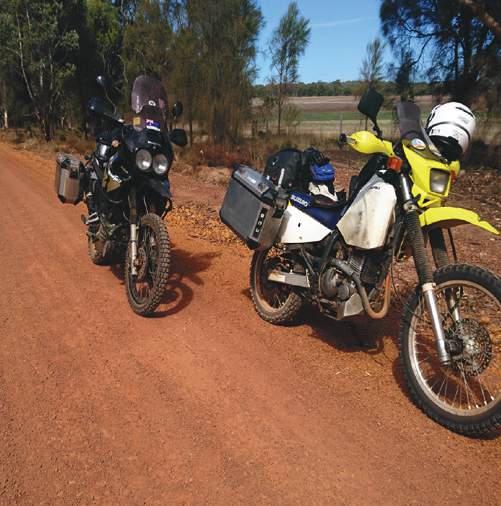




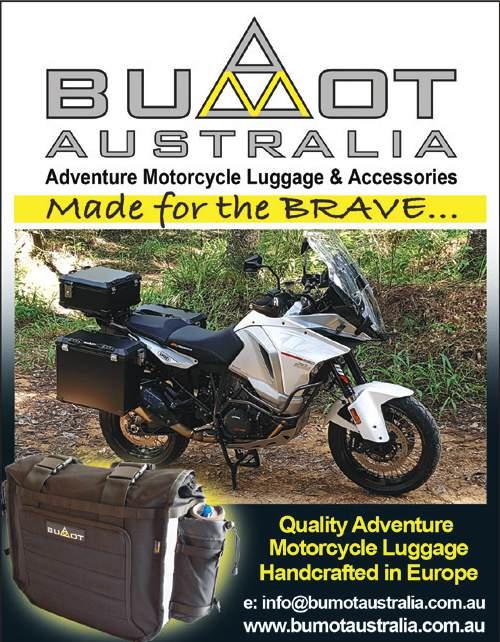
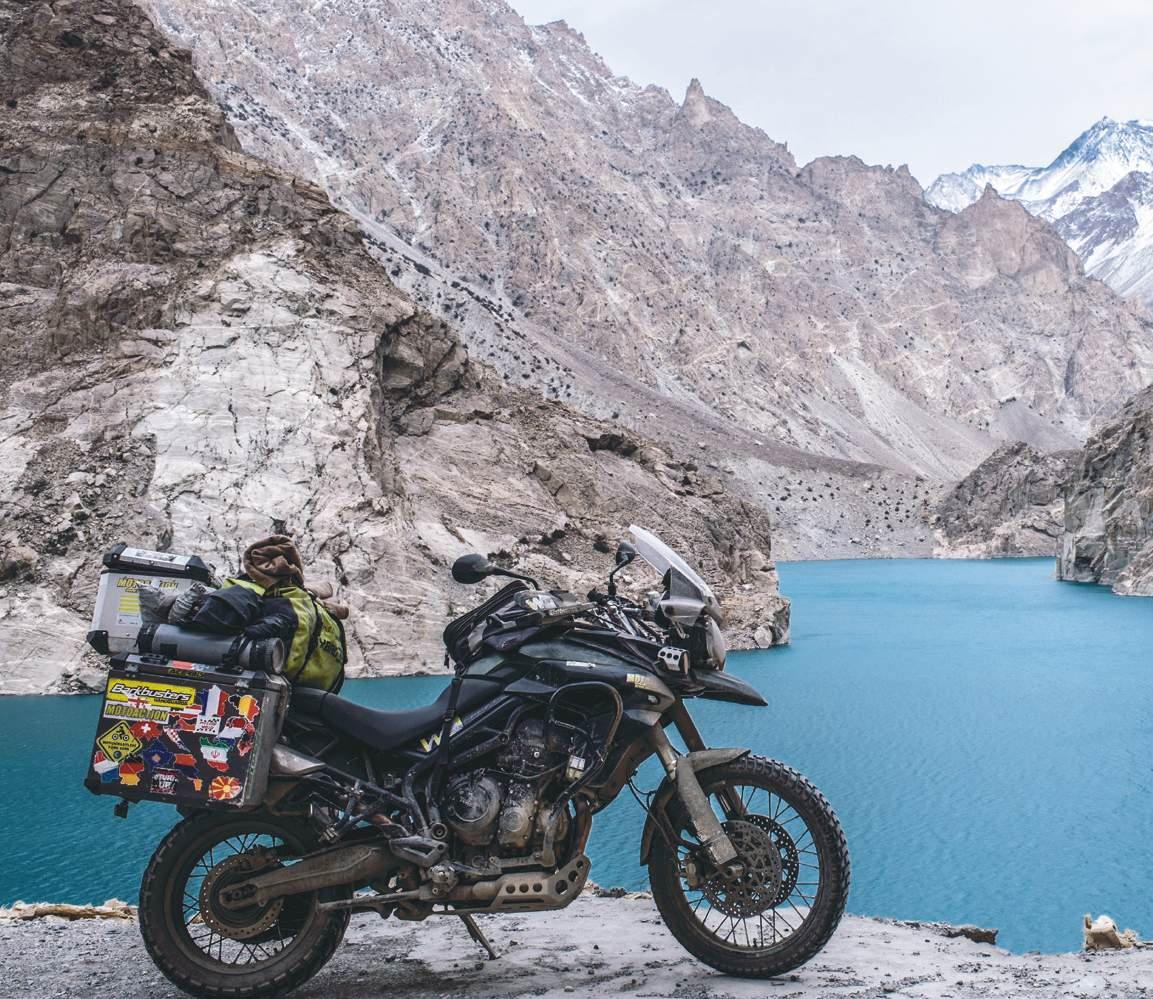
corner of the world for what it really was. I wanted to prove to people you could still travel safely into these parts of the world.
After crossing notorious Balochistan, I switched direction and headed north towards the mighty Karakoram, Himalayas and Hindu Kush. The weather was frosty. I often couldn’t feel my toes and riding through ice and snow was happening much too often for my liking. Luckily, local teahouses and hot soups were the saviours of my extremities. Pakistanis are overwhelmingly friendly, accommodating and make a mean milk tea.
Despite warnings of being robbed, murdered or kidnapped in Pakistan, it was quite the contrary – I actually had trouble
getting the locals to accept money for their services and hospitality. They are just too kind, too giving and too humble.
Another Pakistani trait that rings true is resilience. I was saddened to hear about a bomb that had exploded a few hundred metres from my hostel and killed 15 people. Unfortunately it’s a reality in Pakistan, and it briefly made me question my safety. I wondered if I should leave, but decided to do what the locals do –stay put and carry on.
The spirit of the locals and the unparalleled scenery (not to mention the pistachio kulfi) has quickly made Pakistan my favourite country.
Where to next?
I expect to arrive in Australia in late
November, but that’s just an estimate. I’m currently working on sponsorships, a short-film series and writing work so I can keep on going.
Travelling overland is exhilarating. The opportunities to interact with the real locals, the ones that aren’t surrounded by tourists, are heavily increased. Areas you get to see when you aren’t on a train or plane are the most prized moments of the ride, and this is where you get to discover the real country firsthand.

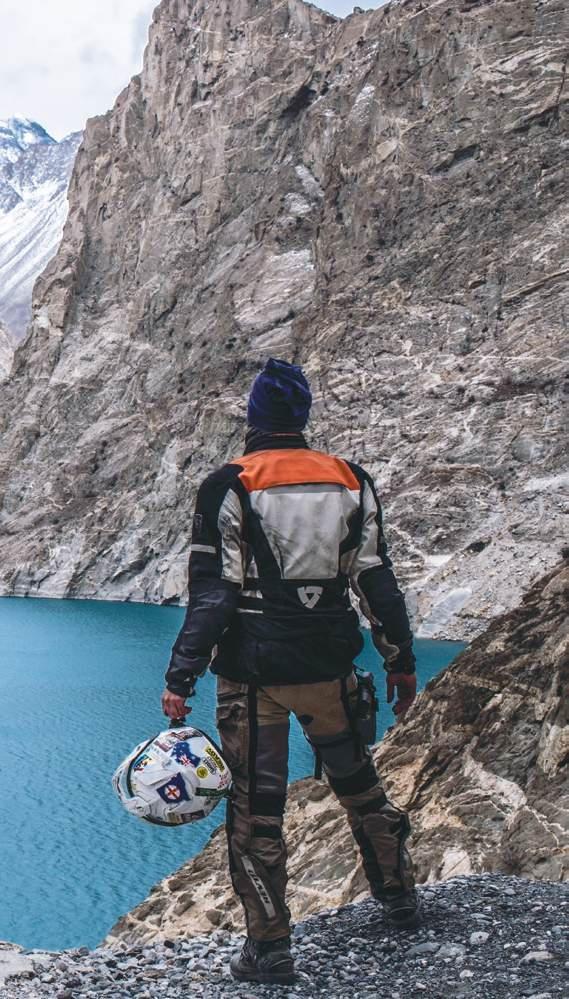

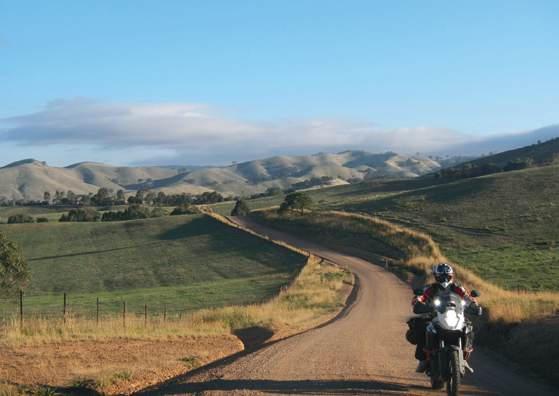
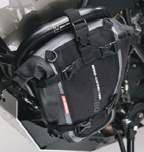

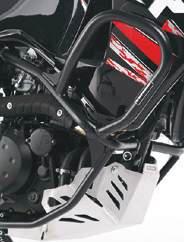
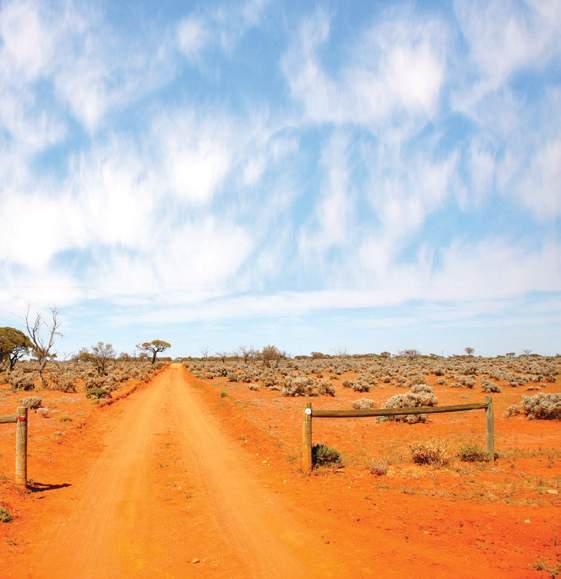

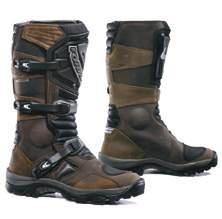
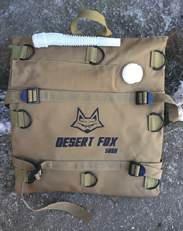
Is there a place for a low-tech, low-horsepower, single-cylinder bike in the modern adventure-riding world? Royal Enfield has convinced us there is.
The Himalayan is a very interesting bike.
Royal Enfield is a very interesting company.
At a time when adventure riders are being offered increasing levels of electronic sophistication and huge power output, Indian manufacturer Royal Enfield has unveiled a brand-spanking new model that appears to have a spec sheet from the 1980s. Seriously. The Himalayan
has a 411cc, two-valve, singlecylinder motor that’s air-cooled, carburetted and offers a measly 24.5 horsepower. Not only that, it has a carburettor and a single cam! True! And no ABS or traction control.
It could almost be a prank, except all the laughing we did on the test ride was pointing at the other riders who, like us, seemed to be having the time of their lives on the bike.
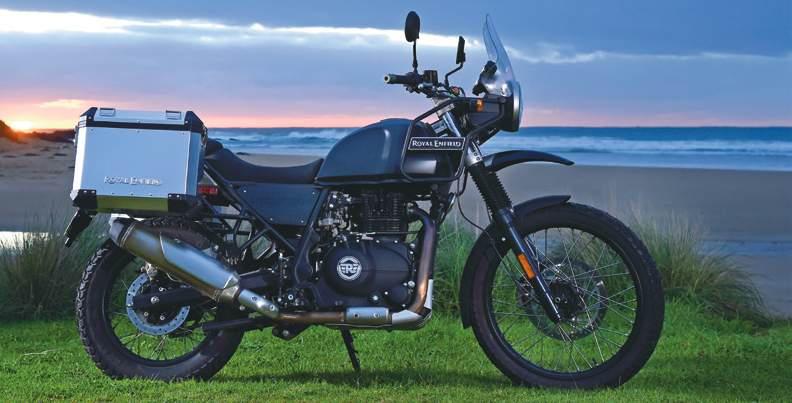
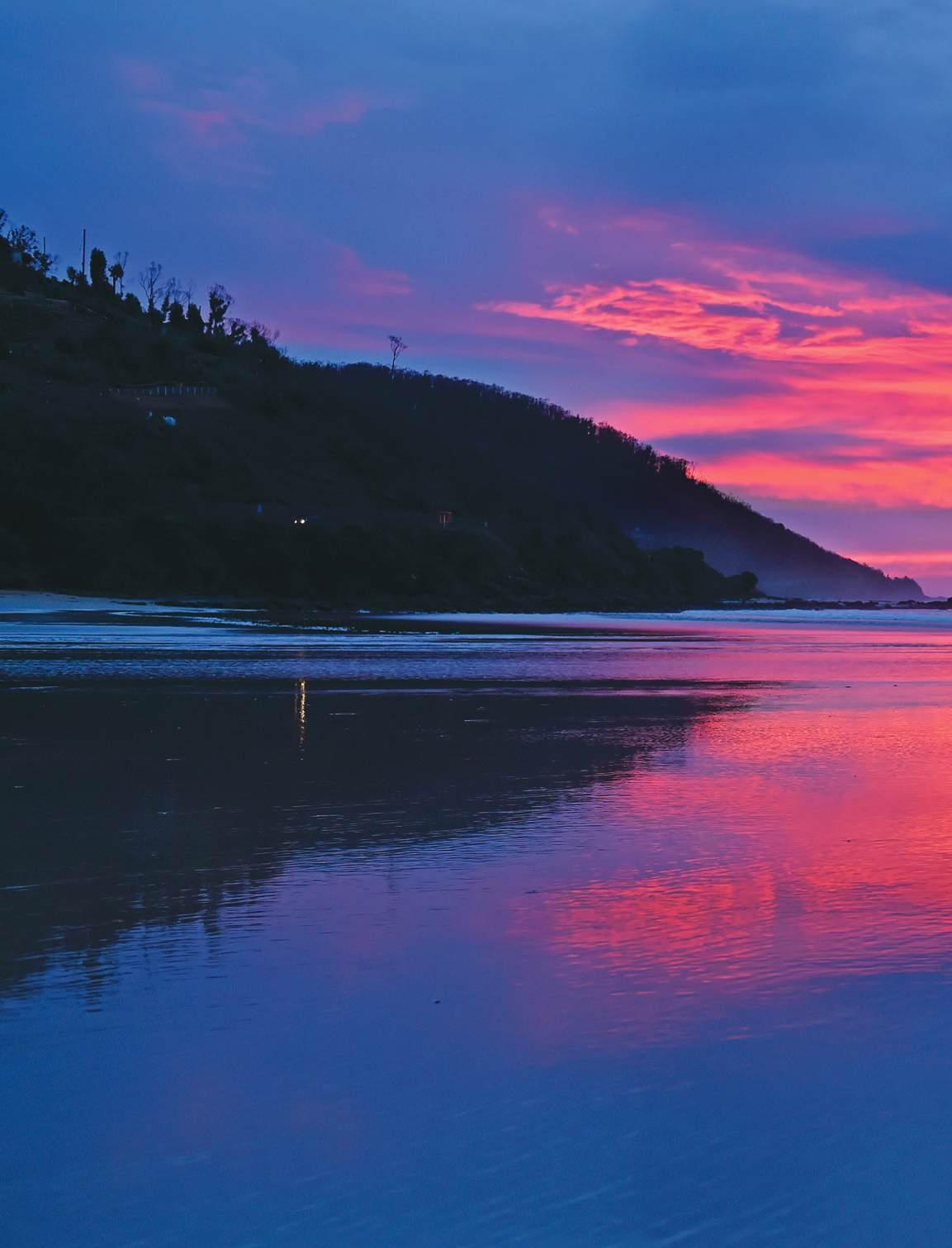
Old-school the Himalayan may be, but in so many ways the simplicity makes for premium riding enjoyment, on- and off-road.
Actually, the Himalayan is not too shabby on the bitumen. We were able to navigate at dusk by following sparks from dragging centrestands in the corners of the Great Ocean Road. It sure does hum along on the bitumen for such a little jigger.
We’ve already outlined the motor as a basic donk.
The big news, as far as Royal Enfield is concerned, is the Himalayan boasts a couple of important firsts. A balancer shaft in the motor is a biggee because it means the rider cops very little vibration, and the other is the monoshock/linkage rear suspension.
Aside from those important factors, braking is a single disc front and rear, the gearbox a five-speeder, it’s a wet-sump motor and the footpeg mounts are welded to the frame.
Right now you’re probably thinking, “So…that’s innovation for Royal Enfield?”
As we said, it seems like the bike might’ve fitted in the 1980s.
Anyone who was riding in the 1980s will have stories about what a great and exciting time it was in motorcycling, and we reckon the Himalayan has captured that atmosphere in the best possible way.
If you love hooking up a laptop to fiddle with the tuning of a bike, and you like
measured analogue displays, and there’s a compass we thought a cute inclusion.
Aside from those things, getting the bike to perform relies on the rider removing the restrictor from his right wrist. Getting the bike to stop means the rider has to judge how hard to squeeze the lever or depress the pedal, and corner speed is governed by the cubic capacity of the male reproductive organs.
And you know what?
We loved it.
Rider modes make us look good and
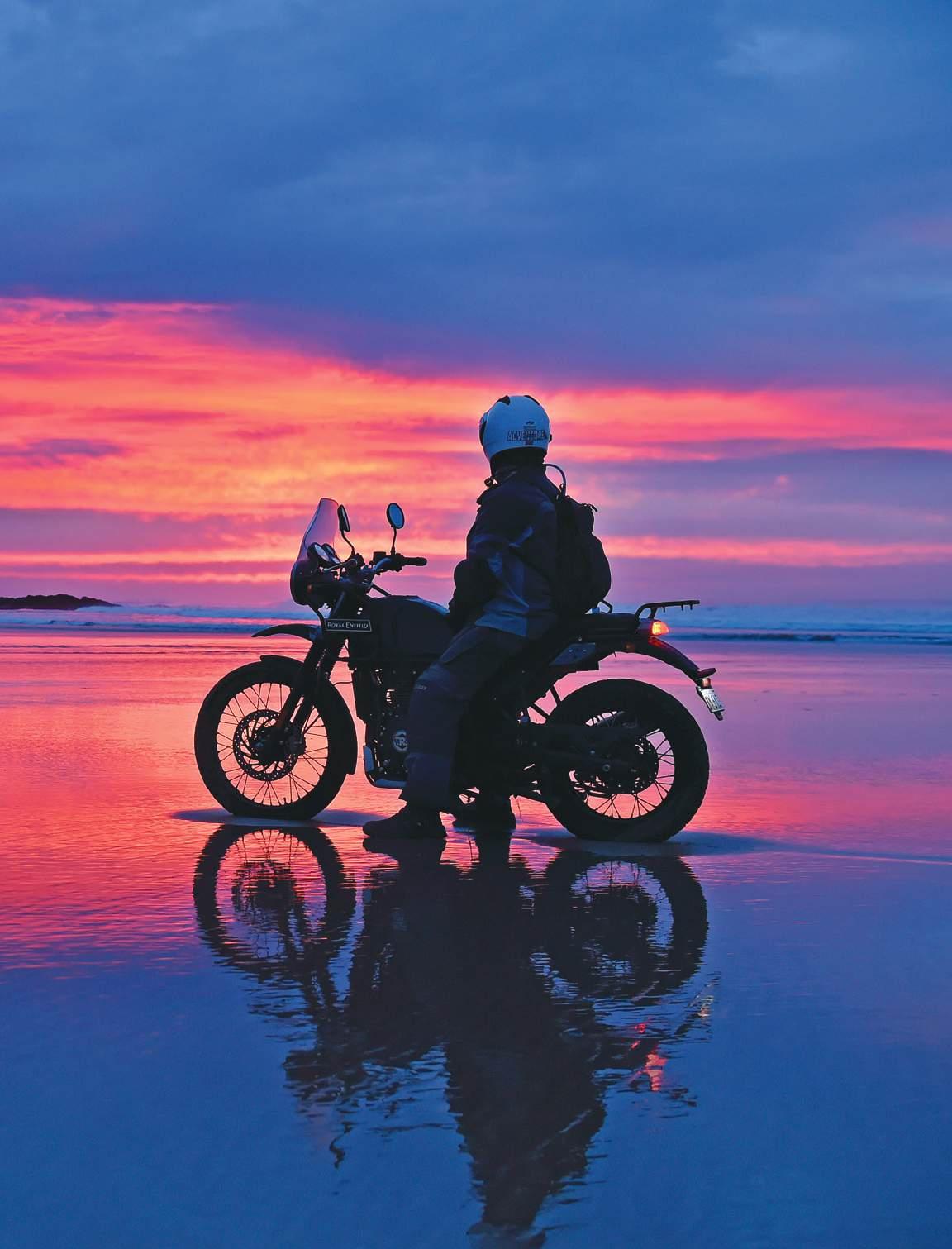
to rely on electronics to help you cope with difficult situations, the Himalayan isn’t the bike for you. The only electronics we could find were in the gauges and ignition. The LCD display steps through the usual run of trip meters, average speed, odometer and so forth, the tacho, speedo and fuel gauge are electronically
electronic aids help us stay safe, there’s no argument there, but there’s a great deal of satisfaction in making the judgement, taking the risk, and roosting through, over or around an obstacle or track successfully. With the Himalayan, that’s how it works. There’s no other way. There’s nothing to select or rely on except competence and big ’nads.
For some riders, that’s what motorcycling is all about.
Once we adjusted to the ‘basic’ nature of the Himalayan a few other features of the bike actually made a lot of sense.
The main one was the seat height. Suspension travel is around 200mm, and we felt the components worked okay. Bottoming out either end doesn’t take much effort, for sure, especially for portly old editors who’ve been enjoying Royal Enfield’s hospitality for a few days, but that’s not the end of the world. The bike handled well enough, even on some of the roughish terrain, when ridden with a little common sense. What was interesting was when we attempted a seriously slushy, slimy, wet-clay uphill and things naturally went all to hell. The roadoriented tyres were no help, but even on knobbies the hill would’ve been a challenge.
When everything went pear-shaped and we started sliding backwards, we just put our feet down.
Both of them.
We still slid back down the hill, but the comparatively light weight of the bike – around 180kg – meant with a foot on the deck either side in the survival position we stayed upright and rode out what could’ve been a very tense situation. Instead of a drama, we were laughing so hard we slid off the side of the track as well, which, thanks to the compact nature of the bike turned out to be no problem either. With a little heaving and some help from the rear wheel we were sliding back down through the gloop in no time.
That was a big feature of the Himalayan for us: obstacles that would’ve been threatening or even scary on a bigger, heavier bike were way, way more fun because the bike itself wasn’t working against us.
Braking was good. It’s not sensational, but it was up to everything we asked of it, including the occasional stoppie and rear-wheel lockup when we missed a turn on the asphalt or felt like stooging about a little. There’s enough feel and power for anything any normal person will ask this bike to do.
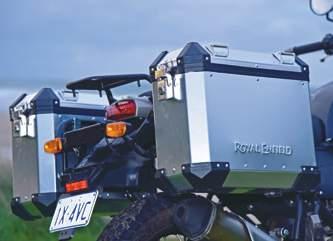
The drive line of the Himalayan is gratifyingly smooth. The counterbalancer in the motor combined with an easy-touse cable clutch and a cush-drive rear hub to make riding the bike a breeze. The gearing might stand some fine tuning for anyone intending to do technical off-road work. We were often caught between first being just a whisker short and second being a tad tall in tight going, but honestly, it wasn’t the sort of terrain the bike was designed for. We were just having a good time and not being particularly sensible. On anything open or flowing, especially tarmac, the gearing was fine. Freeway cruising at 110kph was a piece of Chocolatier cake, and fanging around dirt roads and sensible trails was the coolest of fun.
Seating position was comfortable enough for anyone around the 175cm mark, but we couldn’t fall in love with the seat itself. The padding was a little soft and there wasn’t really enough of it. The split seat, with the pillion pad elevated, restricted back-and-forth movement, and there were times we just wanted to ease our backsides to the rear a little for comfort’s sake, but the pillion seat meant that wasn’t an option. We could stick our
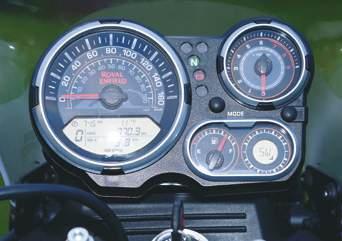
Above left: The bike rolls off the dealer floor wellequipped, but Royal Enfield offers OEM panniers and racks at a great price.
Above: The instrumentation is good and easy-to-read. There’s a compass in the bottom-right corner which is very adventurey and kind of cute.
Above right: Believe it or not at this price, there’s a toolkit included under the seat. There’s also a paper airfilter accessed through the left-hand sidecover.
Below: The lack of traction control and ABS didn’t seem to bother anyone, even on wet forestry roads.
bums up on the pillion seat, but that felt a bit silly.
There’s no problem at all with movement in any direction when standing. The footpegs weren’t too bad. The rubber inserts came out easily and left a serrated steel ’peg which was fine offroad, but we had difficulty getting our whole foot on the ’peg. It felt as though the ’pegs needed to stick out a little further or perhaps be a little longer. It’s a feeling we get on quite a few bikes.
Overall the Himalayan is good, sitting or standing, from a comfort point of view. The screen will be an individual call. We thought it was okay, but would’ve liked it a little taller. But that’s just us. It might be ideal for someone else.
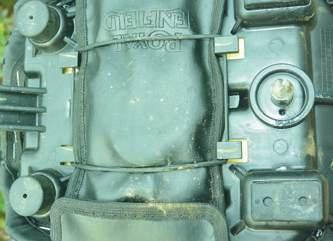
So the Himalayan is a fairly basic bike. Is that a bad thing?
No. It’s not.
For riders who just want to enjoy getting there on a reliable, easy-tolive-with bike that’ll cop a heap of abuse, be simple and inexpensive to repair, and will let them focus on the journey rather than the bike’s performance, the Himalayan is an ideal choice. The purchase price is stunning and the bike is a heap of good fun. It’s well-equipped as it rolls off the dealer floor, Royal Enfield offers panniers and racks at a similarly unbelievable price, and of course the bike itself is LAMS-approved.
After a short time with the Himalayan we noticed a curious phenomenon. Where bigger, more expensive bikes might have a rider thinking twice about tackling an obstacle or tricky bit of terrain, the Himalayan had everyone wanting to be first to give it a try, and the clowning and obvious pleasure of everyone involved did remind us of the feeling of freedom and joy we used to get riding as kids. We can never get enough of that.
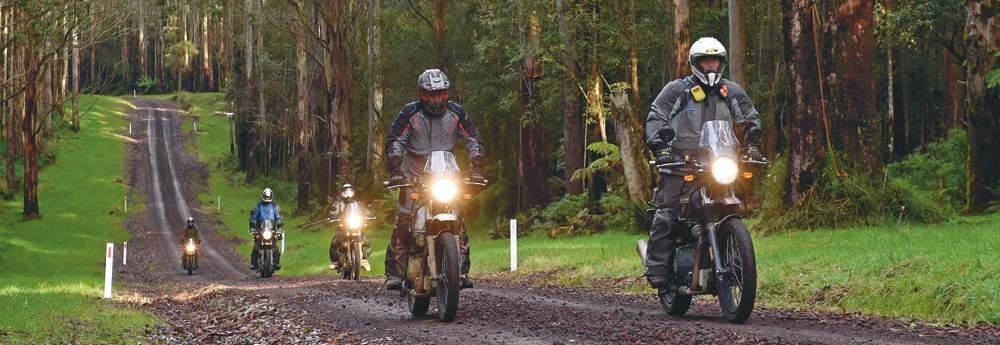
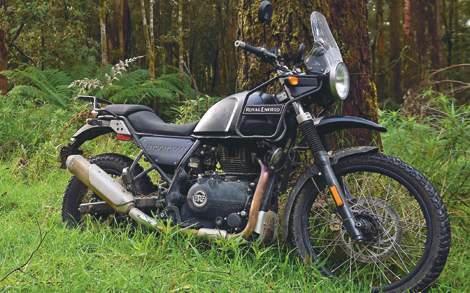
C s
Web: royalenfield.com.au.
Rec retail: $5,990 plus on-road costs
Engine type: Single cylinder, air-cooled, SOHC four-stroke
Displacement: 411cc
Bore/stroke: 78mm x 86mm
Compression ratio: 9.5.1:1
Maximum power: 24.5hp (18.02Kw) @ 6500rpm
Maximum torque: 32 Nm @ 4000-4500rpm
Fuel supply: Carburettor with throttle-position sensor
Ignition: TCI, multi-curve
Clutch: Wet, multi-plate
Starter: Electric
Transmission: Five-speed constant mesh
Lubrication: Wet sump
Rear-wheel drive: Chain
Frame: Half-duplex, split-cradle
Front suspension: Telescopic, 41mm forks, 200mm travel
Rear suspension: Monoshock with linkage, 180mm wheel travel
Brake front: 300mm disc with two-piston floating caliper
Brake rear: 240mm disc with single-piston floating caliper
Fuel capacity: 15 litres (+/- 0.5 litres)
Length: 2190mm
Width: 840mm
Seat height: 800mm
Ground clearance: 220mm
Wheelbase: 1465mm
Kerb mass: 182kg
Colours: Snow. Granite

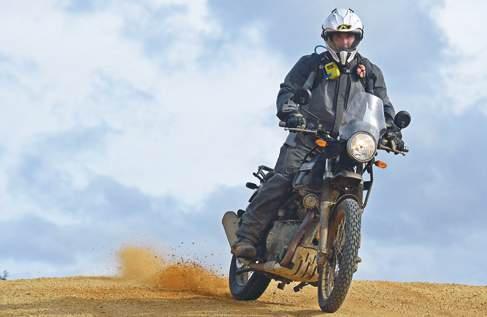
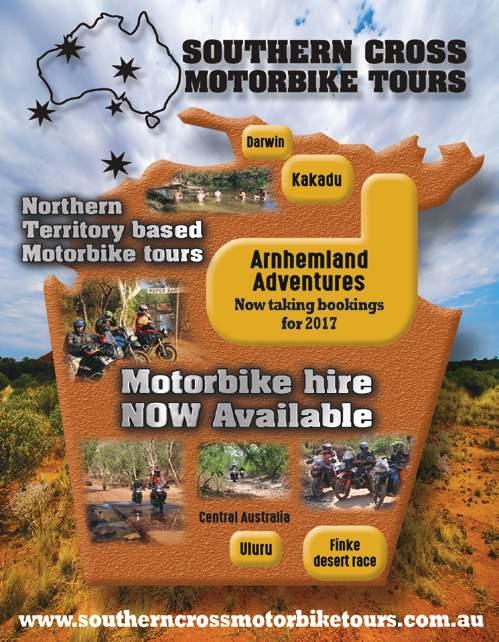
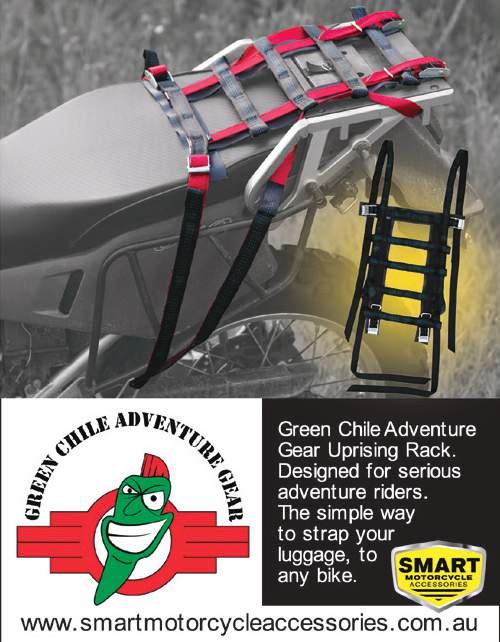
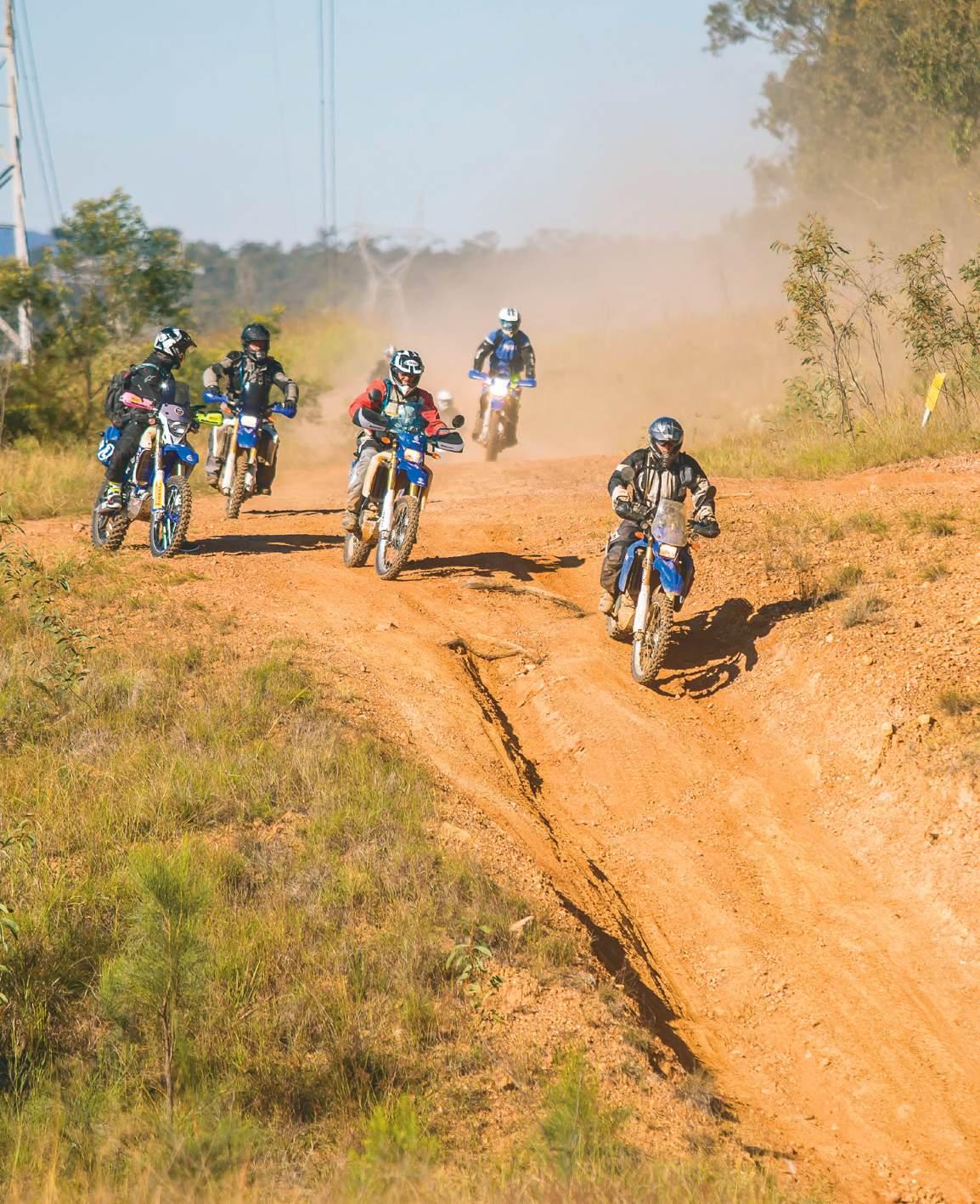
A herd of WR250R owners and riders rolled into Cessnock to kick off the first-ever rally for the feisty little adventure bike. Adventure Rider Magazine lobbed up to enjoy the atmosphere, scoop up a free baconand-egg sanger and spot a few big-name riders.
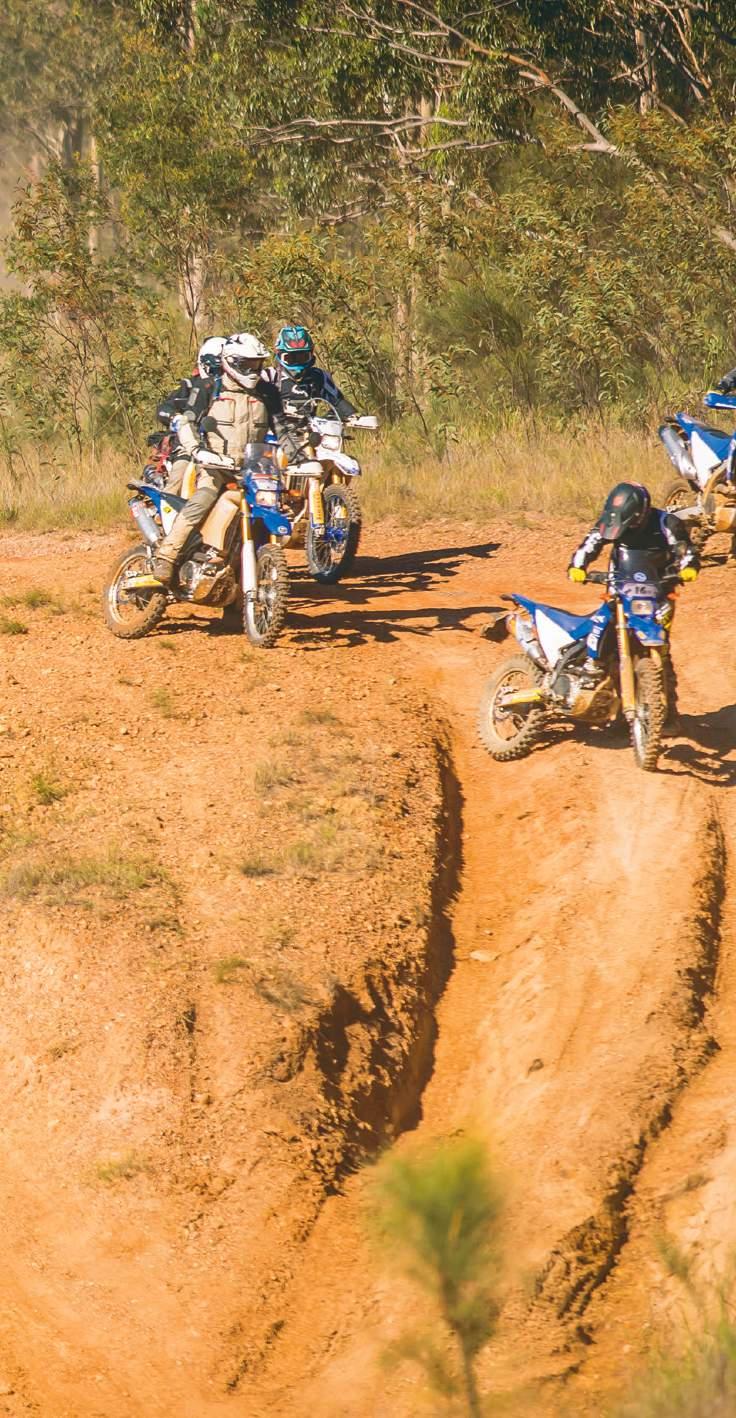

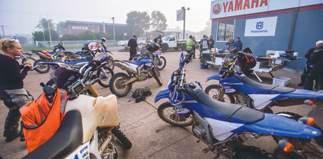
Main: The WR250R rally consisted of two days of riding in and around the Hunter region, including the Watagan, Olney and Yengo State Forests.
Top: Close to 40 adventure riders converged on Cessnock, NSW, to celebrate the WR250R.
Above: Chris Watson Motorcycles played host, and included a whopper barbeque churning out bacon-andegg sandwiches for breakfast and very attractive girls delivering coffees.
Below: Barkbusters’ Matt Phillpott rode in on a Super Ténéré, swapped to a WR250R, then jumped back on the Super T for the return to Barkbusters HQ.
rallies aimed at specific brands or models are all the rage lately, and it shouldn’t surprise anyone Yamaha, with it’s bLU cRU owners’ program, was keen to get something happening with its small-bore giant killer, the WR250R. Naturally, Ride ADV ran the event – after all, who’s done more on that bike than chainsaw-wielding, Simpson-crossing Greg Yager, Ride ADV’s main man? And where Greg Yager and Yamaha go, you can bet you’ll find a bunch of very keen and happy riders.
It was an interesting twist for a casual observer to see all the bikes the same,
but a huge variation in the riders. Ages ranged from Lochie Caldwell, 17, to the incredible, 82-year-old Brian Rooney. A contingent of five held the banner high for females, and there were quite a few recognisable identities milling about.
It all started on Friday night when a tech presentation somehow went awry.
Teknik’s Nick Dole was on hand, along with Pirelli’s Dave O’Rourke. Steve Smith from Adventure Moto wandered in and looked like he was ready for anything. Australia’s best dirt-bike photographer Greg Smith was seen looking focused.
Somehow the chatting went on a bit and got louder, stories became longer and more involved, food hit tables,
drinks were consumed, and before anyone knew what had happened it was time to bunk down in preparation for some serious riding the next morning.
And the tech presentation?
It was decided it could wait until another time.
Who’s counting?
Numbers were a little unclear.
Greg Yager pointed at 35 registrations, but then ring-ins like Adventure Rider
Magazine’s ad manager signed up under the heading of ‘Industry’. He wasn’t u
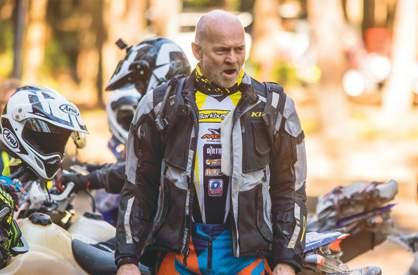
the only one under that heading, so the official number was agreed to be ‘around 40’.
To make the tally even more confusing, a barbeque the size of a bike trailer was propped outside Chris Watson Motorcycles on Saturday morning to provide breakfast during briefing. Not only breakfast, but there were some very attractive girls in Chris Watson Motorcycles T-shirts wandering around taking orders for, and delivering, coffee.
Is it any wonder numbers were so high at briefing?
A few more familiar faces were spotted in the crowd, including Australia’s first-ever ISDE gold-medallist Phil Lovett, ISDE Aussie teamster Dave Cocking and Aussie enduro pioneer Dennis Lock, all of whom call Cessnock home. Stephen Gall was suited up and ready to ride, as usual, being very generous with his time and coaching expertise.
Once his dealership had done hosting duties each morning, Chris Watson himself pulled on his boots and rode the second day.
Despite the easily recognisable faces in the crowd – the crowd which thinned remarkably when the barbeque was shut down and the coffee became scarce – it was the bikes that attracted the most attention, and probably Ride ADV’s
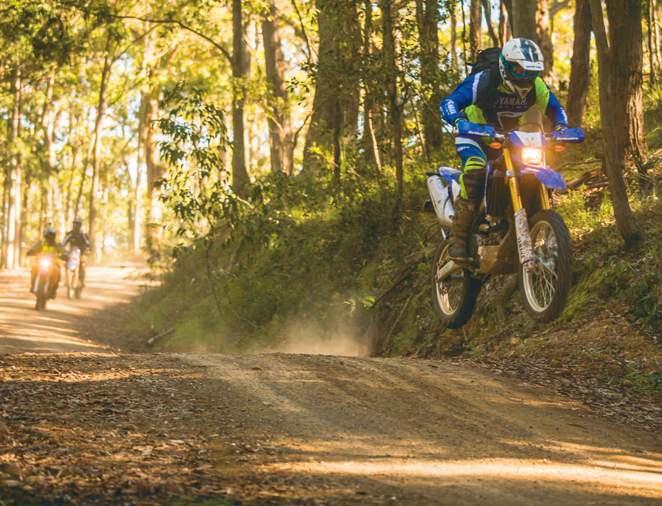
Above: Goodness! That looks like Sean Goldhawk, Yamaha Communications Manager, in full control and focusing on the terrain for a fun ride.
Below: Lee Danswan took out the award for Best Bike In Rally.
Greg Yager’s own bike was the star of the show.
Greg does a lot of tough riding on the WR250R, and he’d recently built a unit for
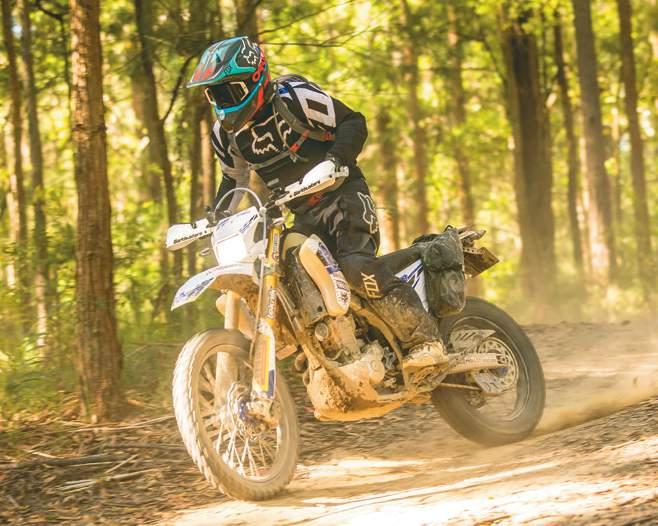
a double-Simpson crossing. When everyone’s a WR250R owner, you can bet a bike with a Rekluse clutch, five LED night lights and a super-tough wheelset will get plenty of lookers.
From among the riders it was Lee Danswan who took out the award for Best bike In Rally and Maryann Eime from South Australia for Furthest Travelled.
Sydney resident Nosh Mistry had clocked 21,000kms on his WR250R, including a tour of the Himalayas and overland back to Australia via South East Asia. He didn’t get an award, but that’s a cool story to tell.
The rally consisted of two days of riding in and around the Hunter region of NSW, including the Watagan, Olney and Yengo State Forests, and covered about 500km. Terrain included a healthy mix of tar, forest road and singletrack, and the overwhelming approval of the event from riders was obvious. A second WR250R rally at Cessnock in 2018 is already in the planning and Greg Yager said the next event is expected to be bigger and better. He also announced that, thanks to the support of Yamaha Motor Australia, Adventure Moto and the all the other sponsors, the WR250R Rally would be an annual occurrence.
Things are looking good for Yamaha’s small-bore crowd.


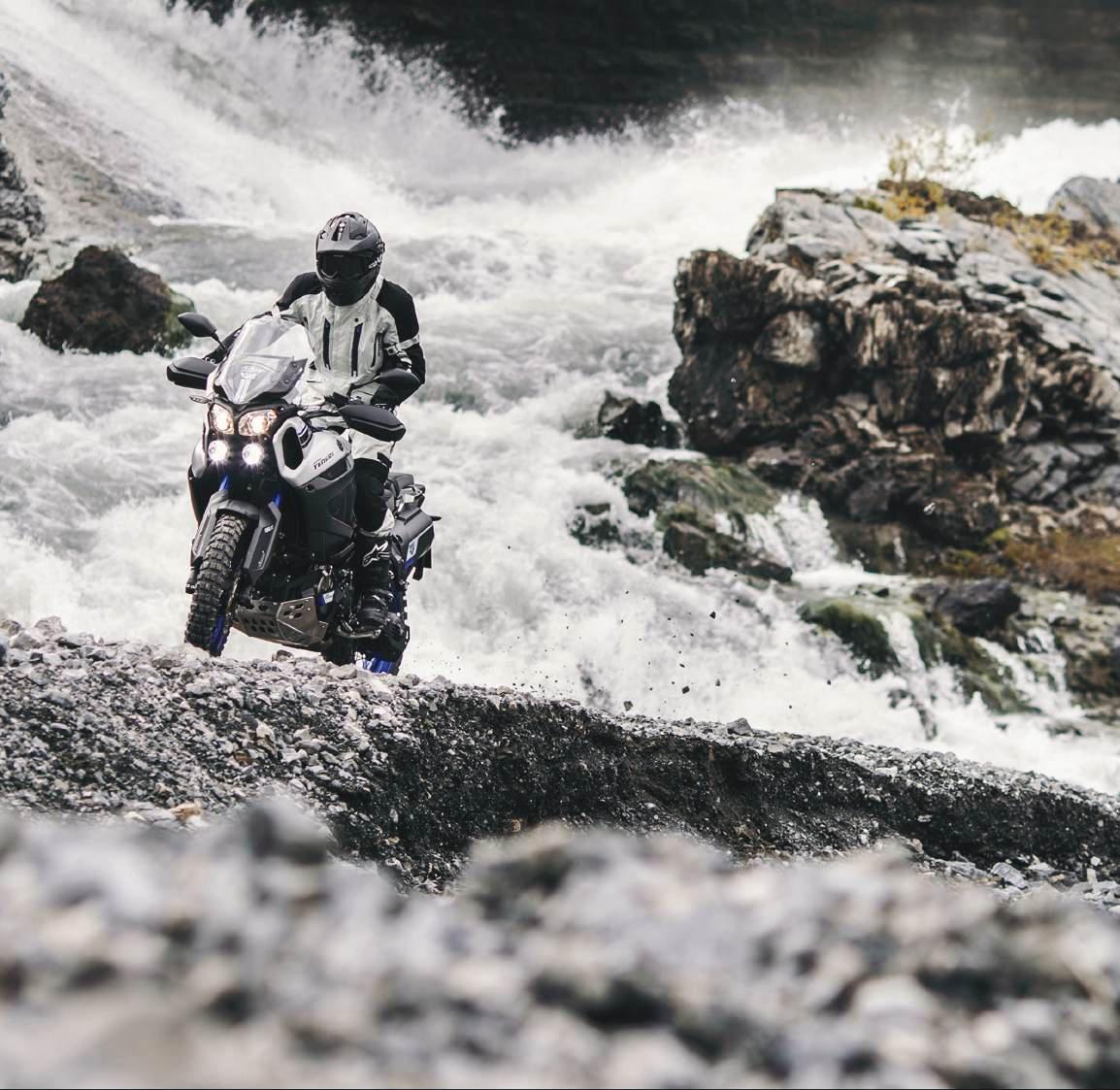
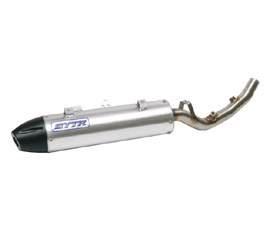
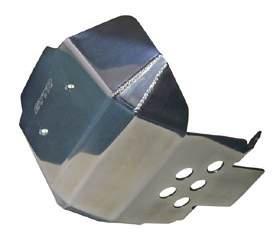





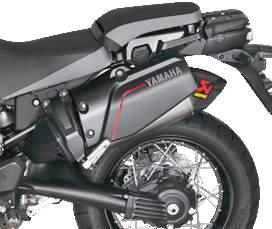
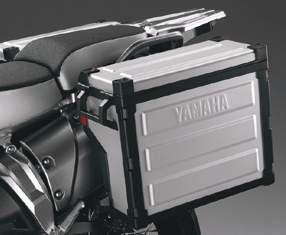
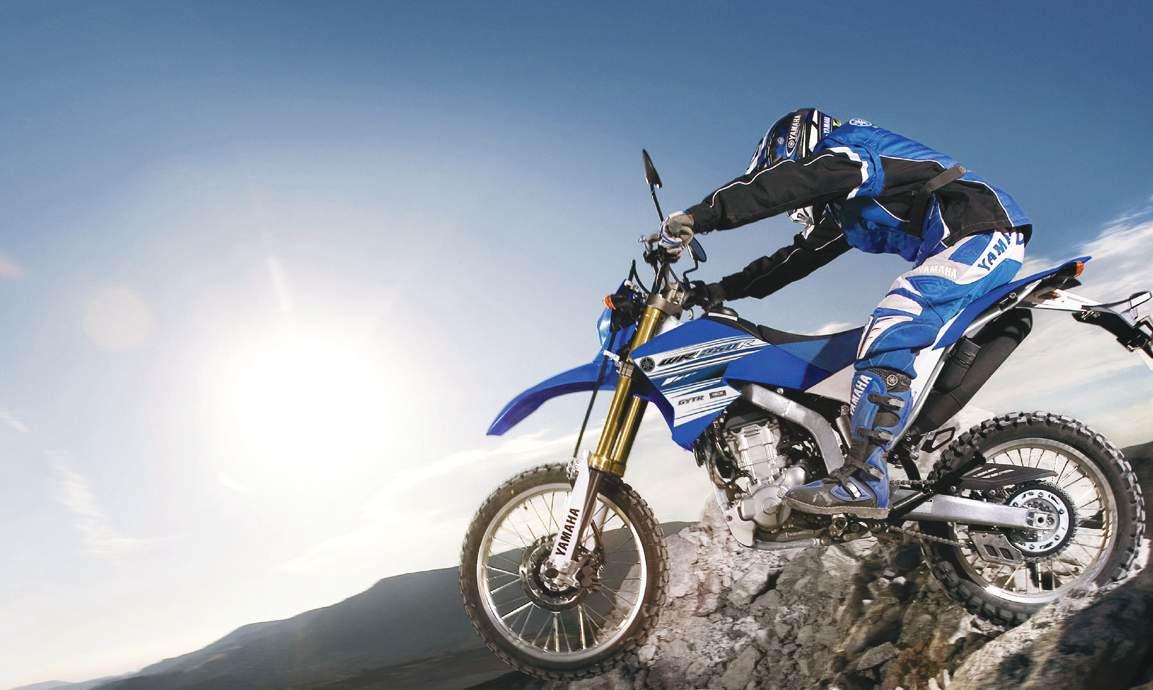

of the


year
12 issues choc-full of the world’s most isolated destinations and the country’s bucket-list routes written and photographed by the people who were there. For a two-year subscription we’ll include a unique, specially designed Adventure Rider Magazine tee* worth 24.95. That’s a whopping $144.35 value for just $98! $98 * T-shirt design subject to availability
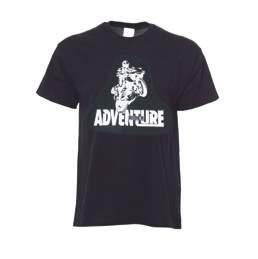


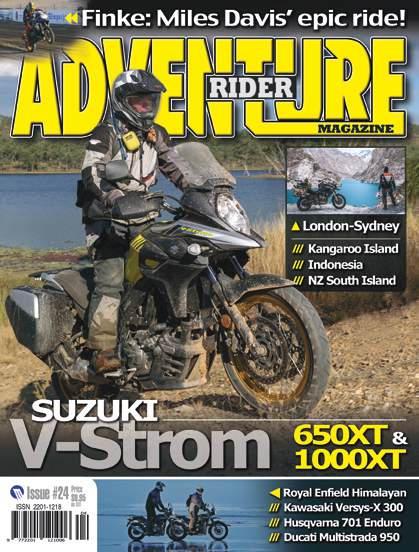
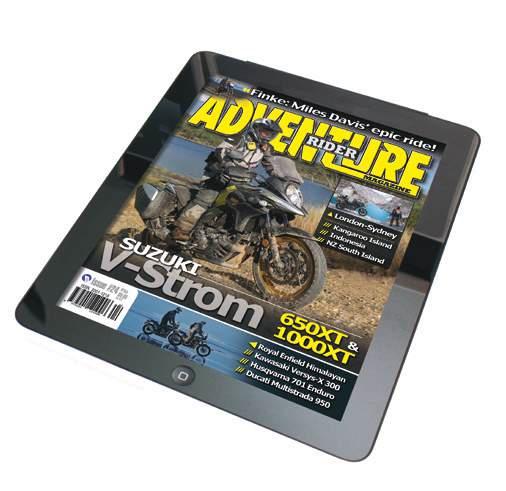



Log on to
www.advridermag.com.au/store and keep the adventure throbbing…
Thousands of kilometres of premium dualsport and adventure riding on route sheet and as GPX files. Complete with fuel and accommodation contacts and info, route section times, stories and heaps more.
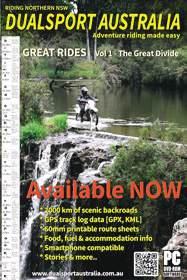
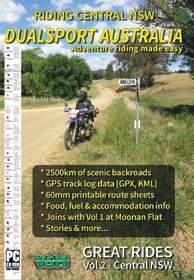
Serious hard-core adventure riding at its best, all captured on camera and crafted into 20 DVDs.
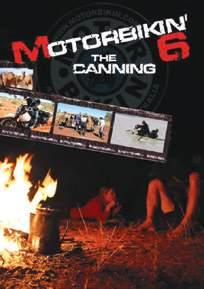
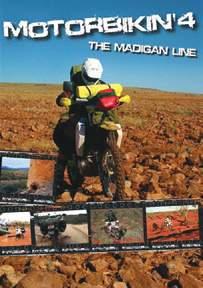
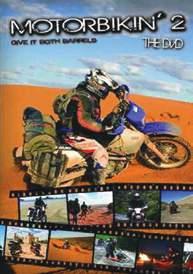
The ultimate adventure-riding distress beacon that should be part of every adventure rider’s kit. Provides six independent means of rescue: 406MHZ transmission
121.5 MHZ homing signal
GPS location
Visual strobe
Signal mirror
Whistle on lanyard Manufactured in Australia. 10-year battery life. 10-year warranty.
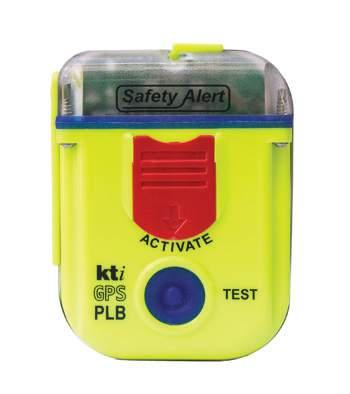
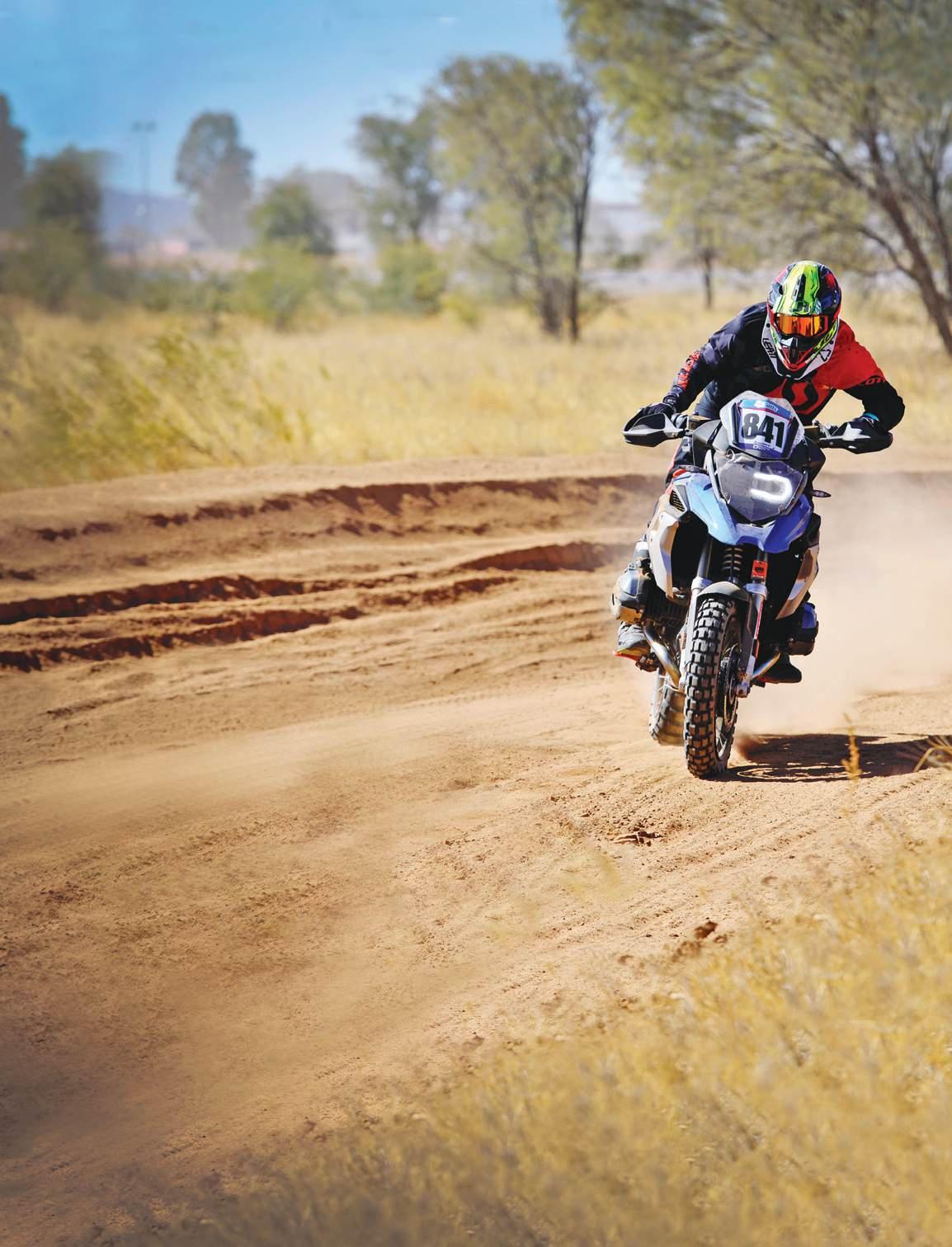
It’s good to set ambitious goals, right? You come up with a plan, consider the difficulty and risks, then lock it in. That’s what happened when I thought about signing up for my first Finke Desert Race on the new R1200GS Rallye X.
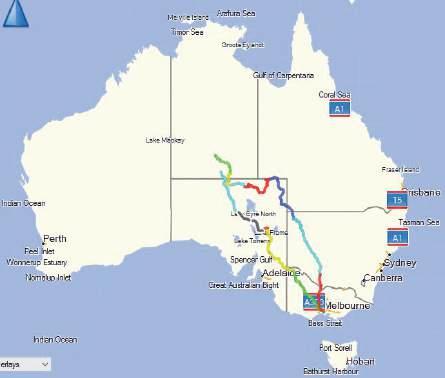
So the plan was hatched: I’d ride from home in Melbourne to Alice, race Finke, then cross the Simpson with some BMW Safari customers and then ride home from Birdsville. An epic trip! I had to get an entry in, and that’s no easy feat as they sold out in a day. There were 600 riders, which is 50 per cent more than last year, and 50 per cent were first-timers.
My plan was to go to Alice and if a prerun showed it was a bad idea I’d cancel my entry. It turned out I had a mate,
Magoo, who’s about as nuts as I am, put his hand up to join me. That was great because it isn’t ideal to do this sort of thing by yourself. So we jetted to Alice, rented a ute and got set up.
The Finke track is a beast –226km from Alice to Finke along the old Ghan railway access track. It’s pretty simple. You race to Finke on Sunday, camp overnight, and race back on Monday, and there’s a great prerunning rule: before midday you must only travel towards Finke. After midday, you must only travel towards Alice.
Based on this rule and my limited time, it made sense to start early on Saturday, ride to
Finke, and then turn around and ride back, 452km of whoops all in one day. I remember how daunting it felt being on the famous Finke track for the first time. I tried to get into a rhythm, not riding too fast, but really smooth so it was easy on the bike and body. I was fit, but it was over 40 degrees, so it was a challenging day and it went pretty well. Lock it in Eddy, we’re going racing!
The plan was to ride the Rallye X very stock, with just a few bits and pieces to make it Finke-ready. I noticed the top guys did some standard mods: foam grips for less blisters; Steg Pegz for stability and to conserve upper body strength; and super-long footpegs. On the prerun I tested Pirelli Scorpion Rally rubber which worked great. I also fitted a 19-inch rear mousse (airless foam donut-tube) into the front tyre. Normally I am a huge fan of tubeless, but for Finke I was concerned if I ran low pressures for the sand I’d be compromised for burping (deflating) the air out of the front tyre on
Main: The traffic had pounded the Finke River pan into ugly bulldust in places.
Map: From Melbourne to Alice, race Finke, cross the Simpson and finally ride back to Melbourne from Birdsville. An epic trip!
Below: Don’t be scared to set challenging but realistic goals. Miles’ successful completion of the Finke Desert Race on a 1200GS Rally X was inspirational.

the harder, rockier sections. I didn’t want to run tubes and risk pinch flats. It was a mission to get the mousse into the wide GS rim, but with three of us we did it. I was very pleased with the effective pressure the mousse gave. It rode well in the sand and handled the rocks too. I ran tubeless on the rear at about 27PSI, and the combo worked really well. Some foam Grip Puppies were fitted which almost felt too fat to start with, but I got used to them. I had the standard suspension serviced with the deluxe treatment on oil and seals while spring rates were standard. ’Bar risers, adjustable gear lever, a flip-tip rear-brake lever and trick front brake and clutch levers were added for comfort and better access to controls. Matt from Motokit helped out with numbers and the Rallye X was looking very racey!
Before I knew it I was packing for a twoweek adventure and planning my route to Alice. GS Instructor Shane ‘Boothy’ Booth joined me for the ride up and was on a spare bike if required for parts or emergencies. It was Boothy’s first outback jaunt and he was the perfect riding partner: skilled, cautious and keen as to see what the outback was all about. First we did a half-day of blacktop to Mildura and then the adventure began. We hit backtracks to Dangalli Reserve and on up to Yunta, then about one kilometre of tar before heading north for
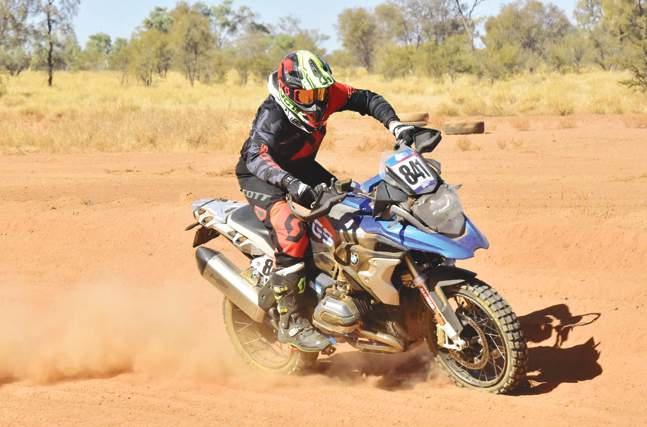
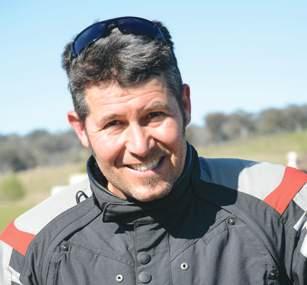
our second stop at Arkaroola. We met a rowdy bunch of Victorian DR riders who joined us for the run out of Arkaroola before we headed up to Maree and the Oodnadatta track to William Creek. The last day was big, so we got up in the dark – it was 2.5 degrees – and got to Oodnadatta for brekky before heading up the Mt Dare Track to Finke so I could ride the track back to Alice to see how it had changed since the prerun.
With some good planning and luck we met our Simpson support car at Finke for lunch and I swapped to my race wheels for the prerun. I felt great and the bike felt great. It turned out that’s the way things feel just before they go pear-shaped.
I was a bit too excited and attacked the whoops a bit too quick – like it was a 20km race, not a 226km race. I was skipping through some smaller whoops at about 75 clicks when they suddenly grew. On my 450 I’d simply power up and jump or skip through them, but on the 1200 it’s not so easy. I tried to ride it out but the bike hit a big whoop on a bit of an angle and it just went bad from there. I became a passenger and went down hard. I hit my head pretty bad but I felt okay and my shoulder was a bit sore. I did my system check and was happy to know it wasn’t going to be an ambo deal.
Next: the bike. It looked remarkably good.
I’d officially been let off the hook, but after seeing the crack to my lid I was a bit shaken by how close I’d come to blowing the whole project. Benno, BMW’s tech guru, was on hand in Alice to patch up my handiwork on the bike and before I knew it the Rallye X was looking race-ready.
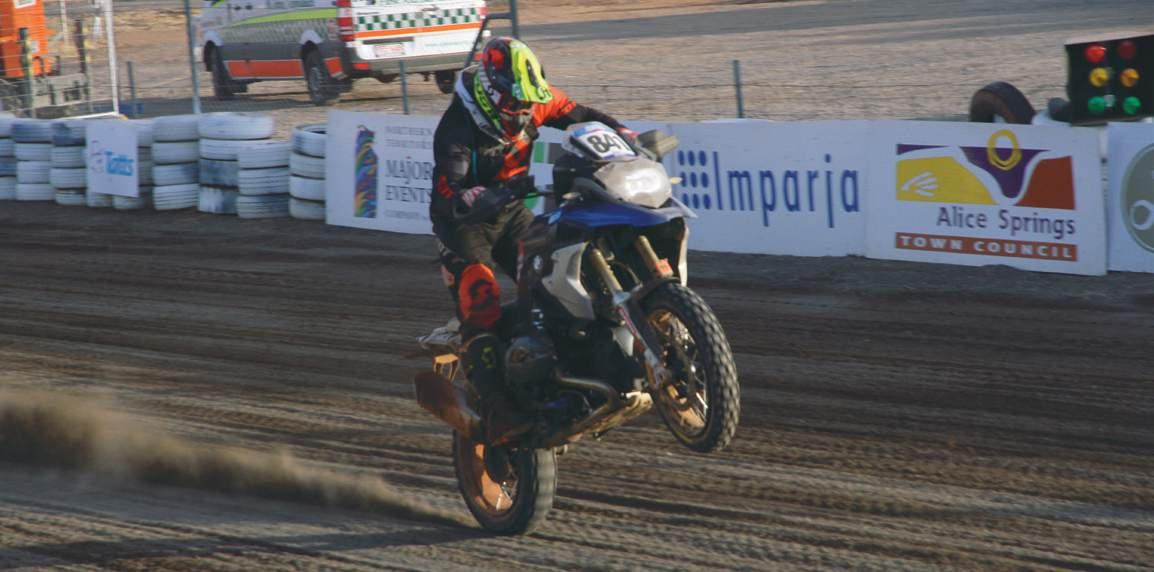
Alice was pumping and there were people everywhere. It was a petrol-head’s paradise. If you haven’t been you should try to tick it off the list.
The prepped Rallye X created a lot of interest and a lot of people were aware of the project and went out of their way to wish me all the best to get it to the finish. After my spill I was feeling the pressure and pretty stressed about the condition of the track which had turned to bulldust in many places. My mission was to finish. Nothing fancy, nothing flash. Just get to the finish within the time limit, full stop.
The race starts off with an individual, nine-kilometre prologue loop. I saw one rider get carted off in an ambo after the sighting lap which was an absolute dust fest. My lap was pretty smooth. It wasn’t particularly quick, but I didn’t have any moments and the bike felt great. I thought my girlfriend Julia was at home, but then she ran over to me, screaming, at the finish line for a very nice surprise.
As mentioned, I was pretty stressed, and my biggest concern was the dust.
The first 30km are along the flat Finke River pan which is silty, and with all the
traffic had been pounded into ugly bulldust in places. We left in rows of 10 and did half the prologue lap in reverse before heading up the track. I let my group go and tried to get a bit of space and vision, but had a huge moment, saved it, and then just focused on keeping it together.
At one point there were spectators in the middle of the track pointing riders to the right. I found out afterwards there was a bulldust hole with a square edge that had put two riders down, both with broken collarbones.
In the conditions the GS was a handful. I did everything I could to just keep it upright and moving forward. Eventually I got into some clear air and into a rhythm, but I had 200km to go.
The crowd was amazing, so many people gave so much support. Even the official KTM fuel-stop guys cheered me on as I went past. At one point I caught a quad in the bulldust and the situation was so sketchy. I finally got past, but then was swallowed by another bulldust pit and he got past again. Then my bike deflected off something and shot me into the crowd doing about 60kph. I locked up the rear wheel and slid to a stop between a pit tent and a 4WD, said sorry and powered on.
When I hit the big whoops I felt more in control. They’re very physical, but you can
see them and work with what you have. I started catching bikes and felt great. My fuel stop was at 159km, only 67km ahead. I did some sums and thought I was going to come in just over four hours. I thought the cut off was four hours, so I panicked a bit and started pushing hard for the final 25km. I began taking risks and getting pretty loose, but I didn’t want to miss out on a finish by a couple of minutes. I think I hit about 170kph on the final stretch and came into the river way too hot and sideways – much to the delight of the crowd. I could’ve easily crashed, but I didn’t. I got through the last whoops and finished to discover the cut off was four hours and 30 minutes. I had 29 minutes up my sleeve!
Finishing the first day without a crash was great for my confidence, and 30 minutes under the cut off meant that the return should be very achievable. I was pretty spent, had a feed, a couple of glasses of red, watched the fireworks and hit the sack.
I was pretty excited for the second day, but I knew it was going to be another tough one. I got a good start into some
clean air and was feeling great. I don’t know what happened, but somehow, only four kilometres in, I tucked the front at around 80kph and slid down the track in disbelief. I quickly picked up the bike and saw there was some damage to the right-hand-side valve cover, but I decided I could continue and just keep an eye on the oil light.
By that stage I was pretty much at the back of the pack so I had a lot of slower riders to pass and dust to eat.
Again I was feeling good in the whoops but hating the bulldust. At about the 110km mark there were some really bad sections, one with spectators lined up waiting to pick up bikes. I came over a crest passing a quad and saw the bulldust pit from hell. There were two riders already lying down and I just tried to get to the other side. It felt like I’d hit a bowling ball under the dust and it put me down again.
I picked up the bike and saw there was more damage. I knew I only had 20km to the fuel stop so I just went for it. With only 80km to go I wasn’t worried about time, I just didn’t want to DNF.
I passed the final checkpoint at Deep Well with about 63km to go and noticed oil on my boot. I pulled in at a camp site and asked if they had tools and oil. I was so relieved when the answer was, “Yes!” These guys were awesome. Together we removed the valve cover, realigned the gasket, put it back together and topped it up with oil. I thanked them as they had saved my butt. They cheered me on as I did a donut out of their site.
By this stage I was resigned to being over time but was happy that the bike could make the finish. I glanced at my dash, did the sums and saw that I still had a chance, so I wicked it up again. I pushed pretty hard but didn’t take too many risks. When I saw the finish I was so happy! I can’t tell you how relieved I was after my finish-line wheelie to pull up and get cheered on by the crowd and my support crew. They handed me a beer and it tasted so good!
We went out for dinner and had a few drinks but I couldn’t kick on for two reasons. First I was totally spent, and second, we were heading off on a GS Tours Simpson Crossing the next morning. I’ll save that for next issue.
From the moment we left Melbourne it was amazing to have complete strangers come up to me and offer support. I did hear and read some comments about how a 1200GS couldn’t finish Finke, but I really believed both the bike and I could do it. I know there were plenty of options for it to fail and I’m sure some would have gloated about how they were right. I’m pretty happy to have challenged myself with such an ambitious project and been able to get it done. Don’t be scared to set challenging but realistic goals, properly prepare and make the right decisions along the way. Even if it doesn’t come off as you hoped, at least you gave it a red-hot go.
If it does come off its even better!
A big thanks to these guys for their support: BMW Motorrad, Pirelli, Motul, Motokit, Scott, Just 1 helmets, CTi2, Leatt, Wild At Heart levers, BMW Safari and my support crew.

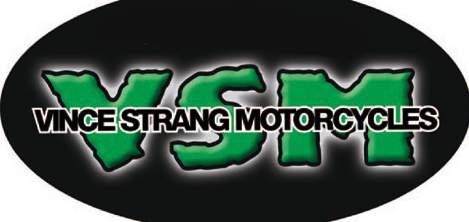
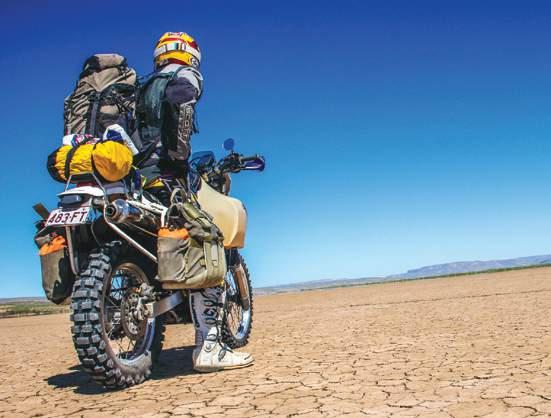
Vince Strang Motorcycles is the place for all DR650 advice and gear-up parts. That’s why VSM is also the best place to buy your fully prepped adventure DR650. We have the experience and knowledge and we have the catalogue of parts. Ride in with a stock DR, ride away totally fitted-out. Discuss requirements with Vince and VSM will supply your built-to-spec DR. Station bike, city commuter or full-blown acrossAustralia adventure bike, get the lot – or anything in between – at VSM. Shop ONLINE for our huge range of DR650 parts and accessories www.vsm.net.au
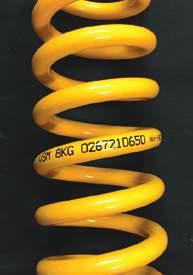
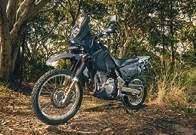
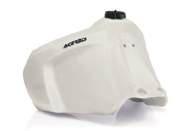
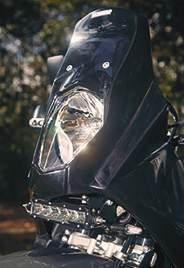
n issue #22 we stepped through replacing a tube.
After you’ve replaced the tube the first time, what happens if you get more punctures? It’s not uncommon on a long ride in harsh conditions.
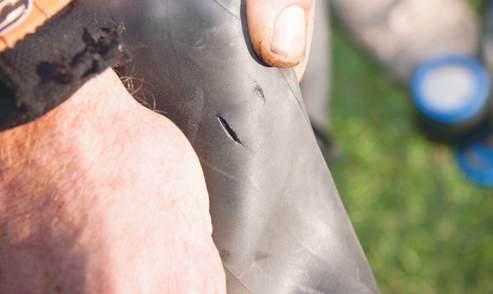
Locate the puncture. The air hissing out will usually pinpoint the problem. Otherwise tip some fluid over the tube, or submerge it, until the bubbles mark the spot. We have a nasty one.
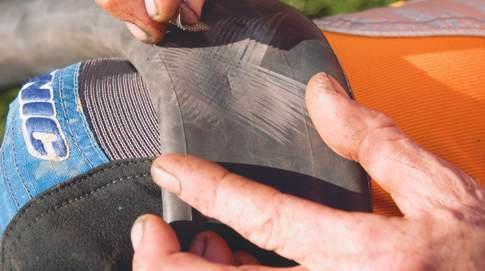
Get the surface as clean and dry as you can, then grab the little rasp in the puncture kit and rough up the rubber all around the puncture. Don’t be gentle. The glaze needs to come off the rubber and an area the size of the patch needs to be rougher than a Dakar finisher’s bum cheeks.
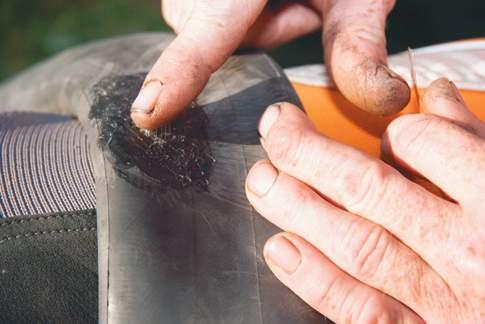
The answer is to carry a patch kit, and we so often see people cock up the simple task of applying a patch, we’ll run through it for you here.
Remove the wheel and tube as we showed you in issue #22 issue, then…

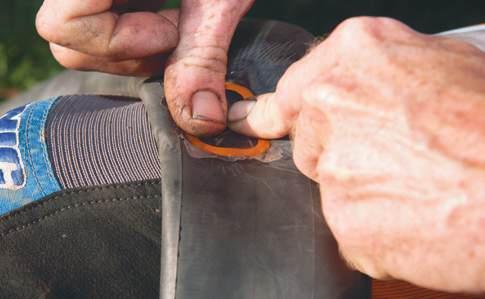
1 4 2 5 3 6
Smear heaps of glue over the roughed-up area. Here’s the bit everyone gets wrong. Let that glue dry. If you put the patch on the wet glue you may as well chuck it in the creek. Let the glue dry until it’s just tacky when you touch it with your finger. It could take a few minutes.
Peel the silver backing off the patch and whack the patch over the puncture. You only get one try at it, so make sure you get it in the right spot. The tacky glue will grip on contact and there’ll be no removing it without tearing the tube.
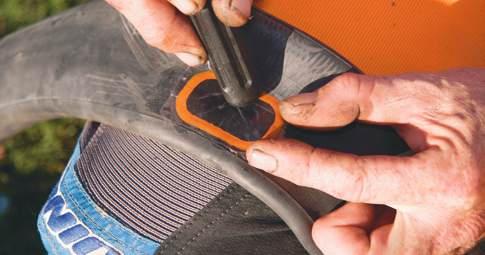
Rub that patch firmly from edge to edge with some kind of smooth, hard tool. A screwdriver handle is usually a good one.

Inflate, check the repair’s airtight, then put ’er all back together and ride off, chuckling to yourself about how clever you are.
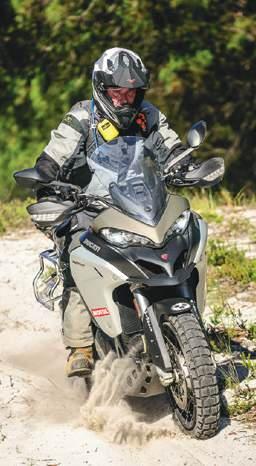

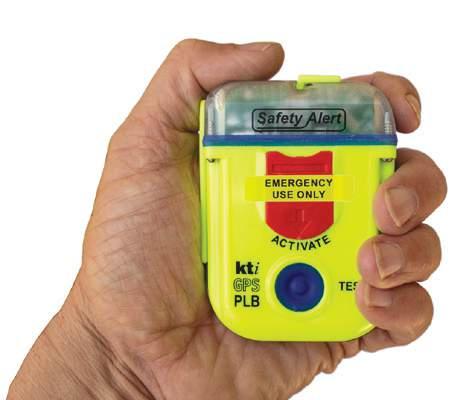
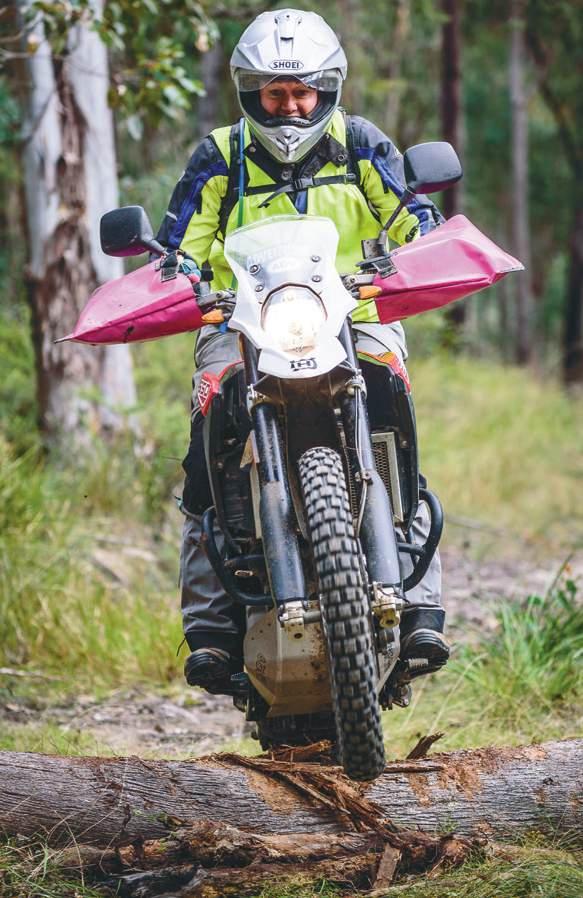
’m doing a happy dance in my bike boots at the moment.
I’ve probably told everyone enough times that I haven’t been riding much. That’s because I’ve been juggling university with work and riding has been pushed aside slightly. I’m one of those annoying mature-aged students who actually starts on the assignment weeks before it’s due.
Well, Uni days are over if I pass this final assignment. Completion of this degree means I can ride guilt-free again.
It’s exciting to think most of my weekends can be spent riding if I want, and that gets me wondering what I can achieve in two days.
For me, adventure riding isn’t about testing my skills, but, rather, using skills I have to get me to places. It’s about having experiences and seeing and doing as much as I can in a limited time. I’m not interested – or skilled enough – to ride ridiculously gnarly tracks just to see if I can. I leave that for the adrenaline junkies and skilled riders and just admire their talents.
My riding of late has been mostly relegated to watching husband Dave on the SPOT tracker, although I do ride to work. The only upside of not riding has been…
Actually there’s probably no upside.
Now though, I’ve managed to get out riding on each of the three weekends since I handed in my final assignment. Dave and I are determined to get out there whenever commitments permit and put life into our lives. It wasn’t seeming like such a good idea when the first ride back was with a big group of people, including photographer Danny Wilkinson. An apparently innocuous water crossing suddenly looked a lot more treacherous when someone was squatting in the reeds pointing a big-arse camera my way. Or coming up to the biggest log I’ve ever tackled (in the scheme of things it was pretty tiny) where there were 19 bikes and riders within two bike lengths of the log expecting me to be able to stop before running into them. That seemed like a disaster in the making.
Next time was with friends in Queensland.
Three out of four of us had little lay downs – I had two, but I seem to like hogging the limelight. I have to say though, it was very valuable. Kylie, a very skilful and experienced rider, spent the weekend behind me and was able to talk through what went wrong and how to avoid – or hopefully avoid – it happening next time. One of these was up a fairly steep, gravelly and rutted hill. Apparently keeping the power on just a bit more will make the bike, “… just keep tractoring up the hill”.
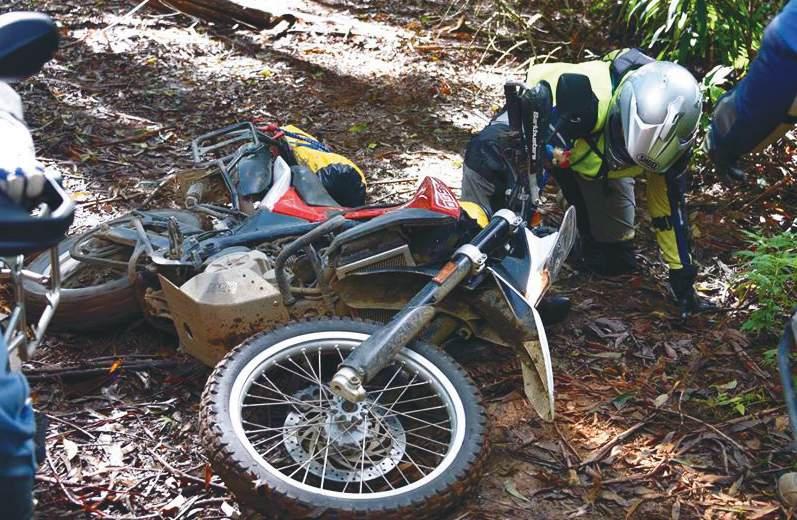
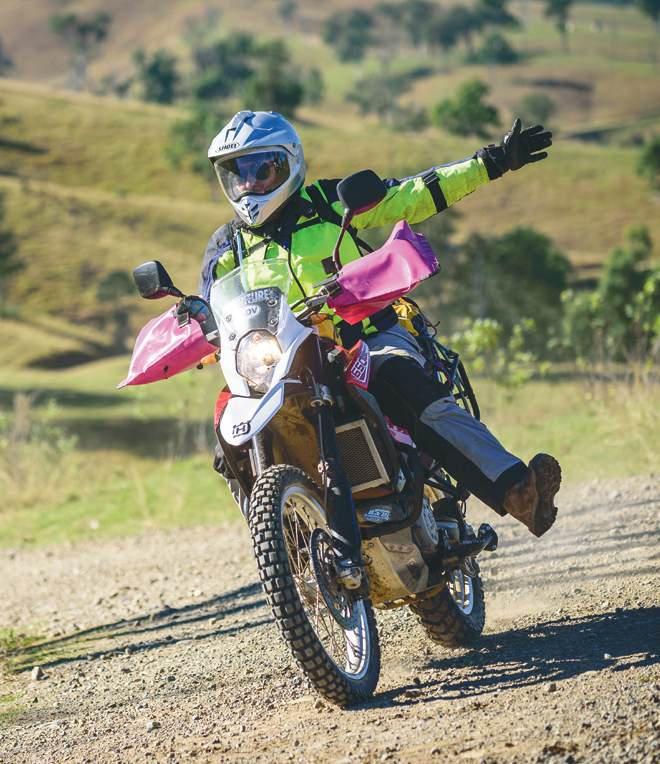
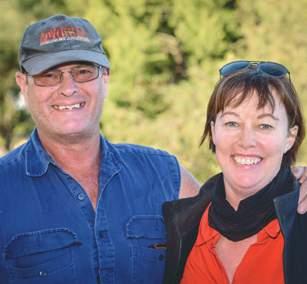
Besides being really good at giving tips to improve riding, Kylie loves riding downhill. She says it’s the same principal as riding on the flat.
The reasons behind my apprehension about downhills have caused me many hours of pondering (while I should have been writing essays), so I decided to take notice of how I walk downhill. Surprise, surprise, I walk downhill very carefully. It’s like if I don’t do it in a deliberate way I’ll go too fast and fall over. So I thought I’d try strolling downhill without the thought that I need to slow myself. It’s actually a completely different way of walking. How that translates to riding, though, I’m not sure, because being able to stop safely always seems like a priority
On to the third weekend of riding.
Armed with useful tips we travelled again to Queensland where I made sure I had the largest audience possible each time the bike and I lay down. Fortunately each of these falls was slow and painless – the words ‘gently’ and ‘graceful’ were used by some people with a sense of humour.
With two weeks of holidays coming up, I’m euphoric with all the travelling we’ll be able to fit in. As long as there’s no crowd and no camera, it should be great.

R Lots of useful stuff through Uni
R There always seems to be a camera about when a bike goes down
R Practice on the bike is the only way to improve
R Apparently people prefer to see pictures of bikes on their side rather than upright
parabelluM Dr/DrZ rally winDscreen
Keeps pressure off the rider’s chest while commuting from home to adventure and back.
R Made in the USA
R Upright rally-type windscreen
R Designed for off-road/ dualsport use
R Mounted by drilling two holes on each side of the headlight cowl (template supplied)
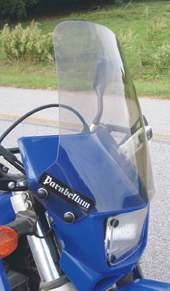
R Approximately 35cm tall, 29cm wide at the bottom and 22mm at the top
R Made from military aircraft-grade cast acrylic
RRP: From $134.95 to 149.95 plus postage
Available from: Adventure Bike Australia Web: adventurebikeaustralia.com.au
Mule Max panniers
Strong stuff. Made in the UK.
R Lifetime warranty that stays with you however often you change your bike
R Extremely strong construction using two-millimetre, highgrade, 5251 H22 aluminium and aircraft-grade stainless-steel rivets
R Revolutionary Q-Fit attachment system. Fit or remove in seconds
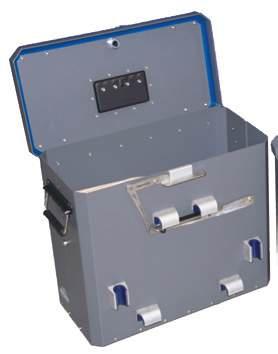
Suitable for hard enduro competition.
R Ideal for riding like the Finke Desert Race and Dakar Rally
R Newly developed compound to ensure good life and great grip
R Developed and tested by Stefan Svitco – second overall, Dakar 2016
R Tested by at Scott Britnell at the Dubai Challenge 2016
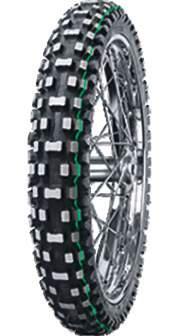
RRP: 140/80-18 E12 from $215. 90/90-21 E13 from $159
Available from: Bike shops everywhere Web: mitas-moto.com
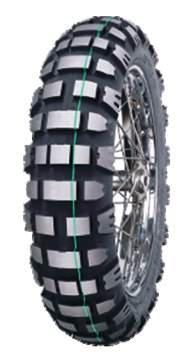
A high-quality, 100-per-cent European-produced adventure-touring boot.
R Oiled full-grain and suede leather construction
R Waterproof and breathable
R Adventure-touring anti-slip sole
R Reinforced toe and heel protection
R Secure cam lock interacts with latch that doesn’t intrude into the pannier
RRP: For full details on product, pricing and fit head to the Adventure Moto website and search ‘Metal Mule’

Available from: AdventureMoto Web: adventuremoto.com.au
R Shin and ankle molded plastic protection
R Adjustable GH buckle and strap
R Double velcro closure
R Anti-bacterial replaceable insole
RRP: $279
Available from: From all good Forma dealers Phone: (03) 5792 3888 Web: formaboots.com.au
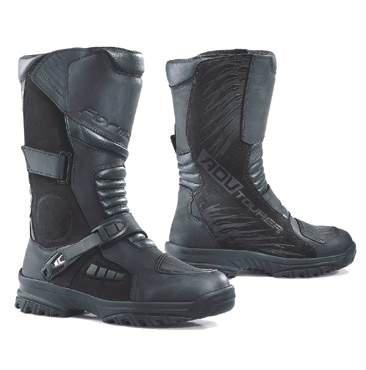
toys2Go pannier racks with inteGrateD rear carrier For husqVarna 701
In stainless or gloss white finish.
R Constructed from high-quality, 18mm stainless-steel tubing
R Superb fit and has brackets for Rotopax mounting
R Retains the rear footpegs
R Complements the lines of the thumping Husky
R Also available for the KTM690
RRP: $493 stainless. $535 powder-coated white
Available from: Adventure Motorcycle Equipment
Phone: 1300 883 908
Email: adventuremotorcycle.com.au
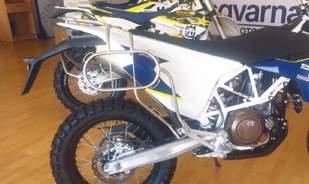
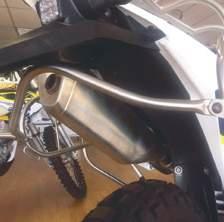
spiDi Dps Vest
A 22-litre cushion wraps the torso and the rider’s neck and inflated airbags cover back and chest.
R Integrated Warrior back protector
R Thorax and neck pneumatic device
R Activation and inflation time of 200ms
R High-tenacity polyester fabric
R High-visibility certified fabric
R Reflex zones for night riding
R Punched mesh fabric
R Sizes M-XL
RRP: $995
Available from: Moto
National Accessories
Web: motonational.com.au
The editor loves these.
No more squinting!
R Riding glasses with bifocal lenses
R Available in +1.0, +1.5, +2.0, +2.5 and +3.0
R Look down the road through the non-magnified lenses. Look down through the bifocals to check instruments, speedo or GPS
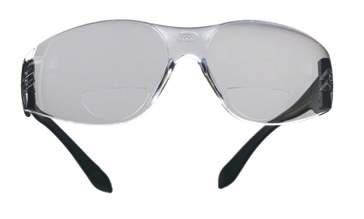
R Lightweight, anti-fog coating and super flexible
R Lenses available in Smoke and Clear
R Positive Dust Seal an optional extra
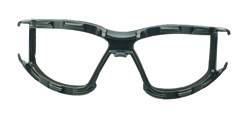
RRP: Glasses $38.95. Positive Dust Seal $10
Available from: Exclusive to Rocky Creek Designs
Web: rockycreekdesigns.com.au
Now available to suit KTM690, Husqvarna 701 and Suzuki DR650.
R Available in three options: 21/18”, 21/17” and 17/17”

schuberth e1 aDVenture helMet
Coming soon to Australia.
R The comfort of a flip-up helmet
R The look and feel of a modern adventure helmet
R High comfort, flexibility and safety
R Meets ECE R22.05
R Sizes from XS to XXXL
R Air channel system provides a comfortable airflow
R Chin piece can be swivelled together with the visor and shield
RRP: $TBA
Web: schuberth.com.au
R SM Pro billet hubs made from 6082-T6 aluminium, cush-drive rear hub, SM Pro Platinum rims and heavy-duty zinc-plated, carbon-steel spokes
R Hand-built in Australia
RRP: $1595
Available from: Your local dealer Web: jtr.com.au
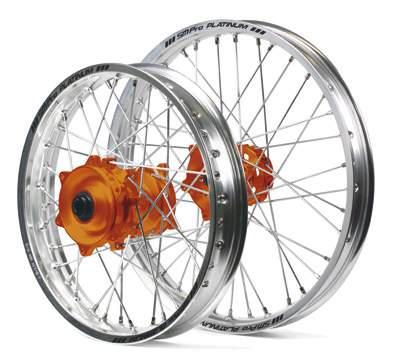
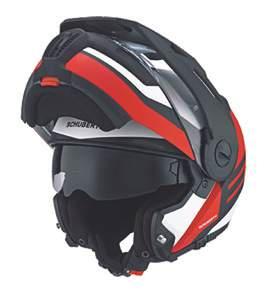
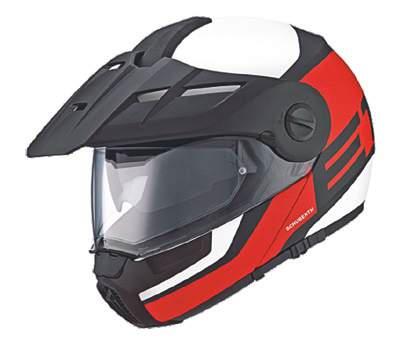
A rugged boot made from waxed, full-grain leather reinforced with protectors.
R Metal cap supplied for tip of the boot, can be screwed on (option)
R Plastic shin guard
R Robust insert in the sole for foot stability
R Oil and petrol-resistant chunky-grip sole for a secure footing
R Extra-wide opening
R Stitched-through sole
R Waterproof breathable inner shoe doubles as fully functional leisure shoe
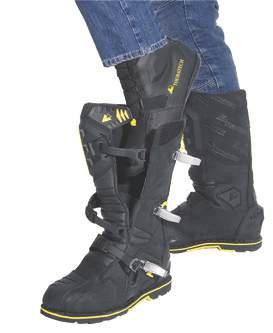
R Pull-out stainless steel cable for attaching outer shoe to motorcycle when not in use
RRP: $694.76 plus postage
Available from: shop.touratech.com.au
Web: touratech.com.au
nelson-riGG aDVenture Dry se-2005/2020 aDVenture Dry baGs
Tarpaulin PVC dry bags. Outer material coated to prevent slipping or marking.
R Lifetime warranty
R Electronically heat-welded seams and airtight roll closure. 100-per-cent waterproof
R Firm internal baseplate helps support bag
R Securely mounts with quick-release cam buckles and nylon webbing
R Strong D-rings allow additional items to be attached
R Quickly attaches to most factory tail racks or hard saddlebags
R Medium SE-2005: Dimensons L 51cm x W 25.5cm x 30.5cm, holds 39L
R Large SE-2020: Dimensons L 66cm x W 30.5cm x 35.5cm, holds 72L
RRP: Medium $119. Large $159.95
Available from: Bike shops everywhere
Web: linkint.com.au
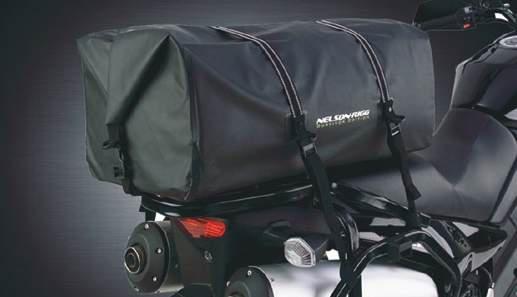
New dualsport tyres from Avon.
R 50/50 on/off road
R Great balance between onand off-road performance
R Versatile construction for off-road capability
R Specially formulated compound for multi-terrain use
RRP: Fronts from $139. Rears from $189.95
Available from: Bike shops everywhere Web: proaccessories.com.au
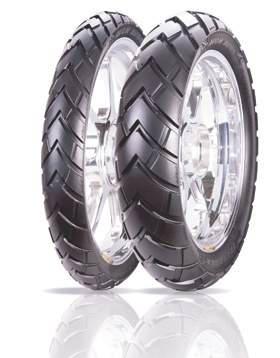
13.8-litre
Big range for Yamaha’s giant killer.
R Long-range tank almost doubles the standard fuel capacity
R Fuel range of approximately 300+km per tank
R Slim-line design uses integrated radiator shrouds
R Direct replacement without major modification
R Includes threaded inserts to accept Safari fairing (available separately)
R For closed-course competition only
R Only available in Translucent White
RRP: $572
Available from: Your local authorised Yamaha Dealer or visit Y-Shop for more information Web: yshop.yamaha-motor.com.au
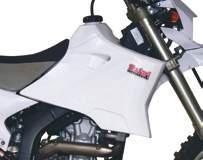
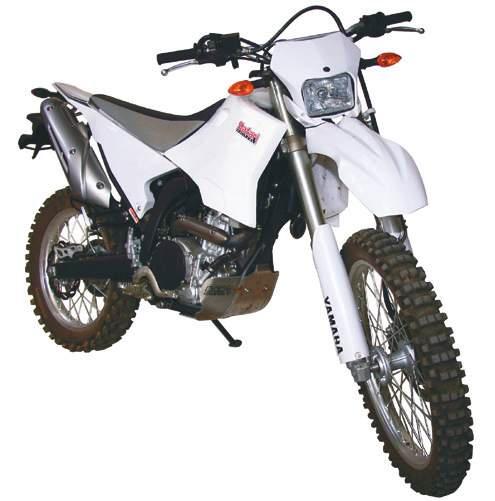
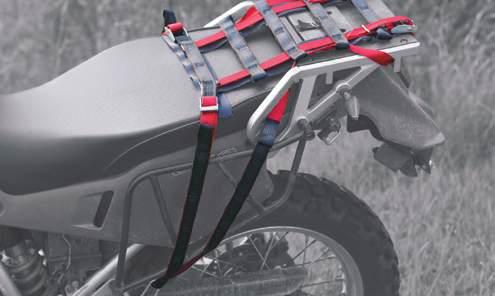
Designed for serious adventure riders. It’s the simple way to strap luggage to any bike.
R Easy to install and adjust
R Multiple anchor points
R Fits many adventure bikes
R Quality webbing material
R Steel buckles
R Hand-made in the USA
RRP: $149.99 with free delivery in Australia
Available from: Smart Motorcycle Accessories Web: smartmotorcycleaccessories.com.au
raD GuarD
Ducati
MultistraDa
950 raDiator GuarD
Flying through the rough on this brilliant adventure bike can be fun, but ending your adventure travels early and being stuck in the middle of nowhere is not! Radiator and oil-cooler guards are a must.
R Essential aftermarket accessory
R Protects radiator oil cooler
R Allows adequate air flow
R Easy to fit
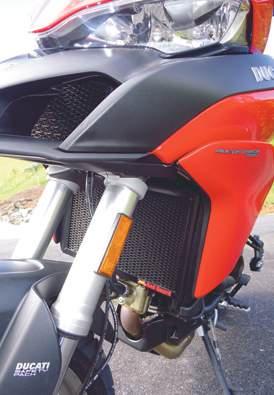
GraVel-t ba ranGe by GiV
Waterproof and dustproof.
R Tank bag available in six-litre (GRT706) and 20-litre (GRT705)
R GRT 708 Panniers are 30-litre (15-litre each side)
R IP65 waterproof certification on main compartment
R Transparent upper pocket for map, smart phone or tablet
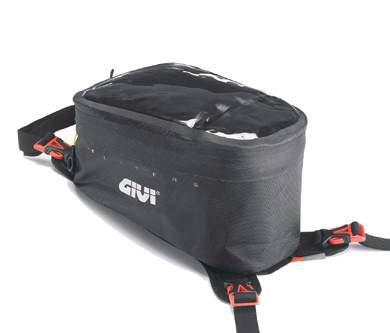
R Water-resistant side pockets
R 420D TPU-coated nylon construction
R High-frequency sealed seams
R Fit most off-road and street bikes
R Made out of high-grade aluminium
R Three-year worldwide warranty
Available from: Rad Guard Phone: (02) 6658 0060
Web: radguard.com.au
RRP: GRT706 tankbag $129.95. GRT705 tankbag $269.95. GRT708 panniers $259.95
Available from: Overlander Adventure Equipment Web: overlanderae.com.au
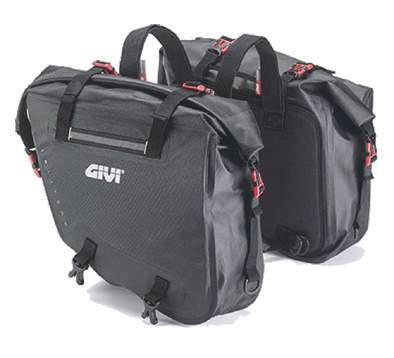
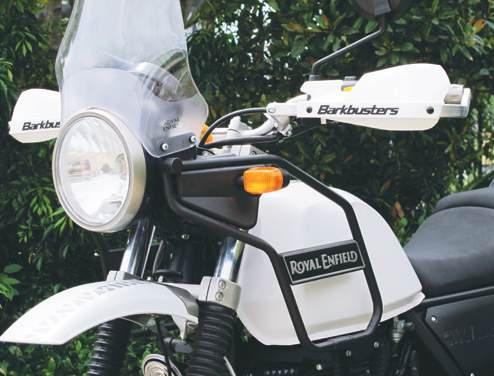
barkbusters bike-speciFic harDware For 2017
New kits available for 2017. Models include:
R Product Code BLG-016 for Ducati Multistrada 2015 on and Multistrada Enduro from 2016 (note: hardware kit only. No guard options)
R Product code BHG-036 for Kawasaki Versys-X 250/300 2017
R Product code BHG-064 for BMW RnineT Scrambler 2017
R Product code BHG-065 for Royal Enfield Himalayan 2017
RRP: From $121.95 to $125.95
Available from: Your local bike shop Web: barkbusters.net
helinox chair two
This chair rocks. Literally.
R An evolution of the iconic Chair One.
R 145kg capacity
R Packed weight 1.18kg
R Packed length 42cm
R Five-year warranty
R Optional rocking feet available.
Available direct from helinox.com.au for $148 with free delivery Web: www.helinox.com.au
Adventure-ready touring suit.
R Large, zipped vents on chest, sleeves and thighs, removable winter liner
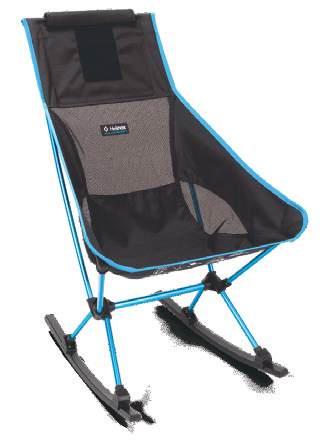
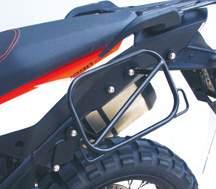
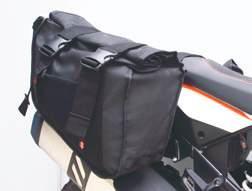
ktM 1290 pannier FraMes anD baG options
A luggage system not much wider than the 1290 handlebars.
R Traveller Pannierz are a great fit
R Choose Travel Panniers for a symmetrical system
R Removable Drymesh waterproof and breathable liner
R Fixed mesh grid on back for airflow
R 3M reflective material on front, rear, sleeves and sides of the leg
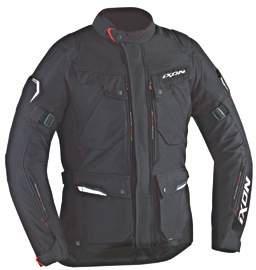
R Multiple pockets inside and out, including one large pocket on the rear for the liners
R Neoprene neck roll with chin pad for comfort
R Riplan reinforcements in knees
R CE protectors in knees, shoulders and elbows
R Colours: Black and black/grey
R Sizes: Small to 4XL
RRP: Jacket $379.95. Pant $299.95
Available from: your favourite bike shop Web: ficeda.com.au
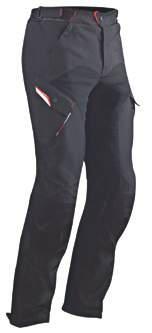
If you love it, lock it!
R All strap material is made of steel-encased webbing (SEW) and is harder to cut than steel cable
R Stainless-steel ends hinge so screws are inaccessible when straps are tightened and locked
R Rear adjuster and boot allows for easy install and choice of where to have the locking buckles –top or front
R Combine an Avduro Pannier on the left and a Travel Pannier (TravAv) on the right for extra capacity and an assymetrical look
RRP: Frames $370 per set. Travel Pannierz $365 per set. TravAv combo $390. All pices plus postage.
Available from: Andy Strapz Phone: (03) 9786 3445 Web: andystrapz.com
For Honda’s CRF1000L Africa Twin.
R Manufactured from four-millimetre aluminium
R Available for DCT and manual-transmission models
R Prevents damage to the vulnerable engine pipe
R Provides significant protection for the lower engine cases
R Available in silver, Frozen Grey and black powder-coat finish
R Supplied with stainless-steel mounting brackets
R All installation hardware supplied
RRP: $369 plus postage
Available from: Bumot Australia
Email: info@bumotaustralia.com.au
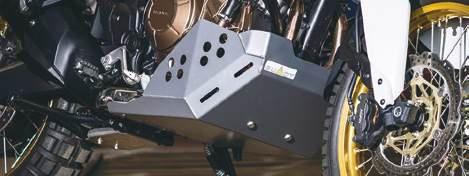
R Buckles constructed of aircraft aluminum and offer easy, one-hand operation
R Stretch cord holds excess strap
R Two keys included
R Optional neoprene jackets for harsher climates.
RRP: See the website
Available from: AdventureMoto Web: adventuremoto.com.au

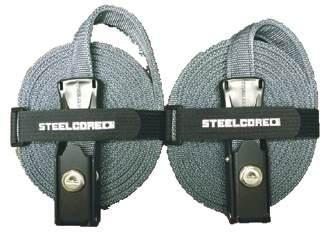
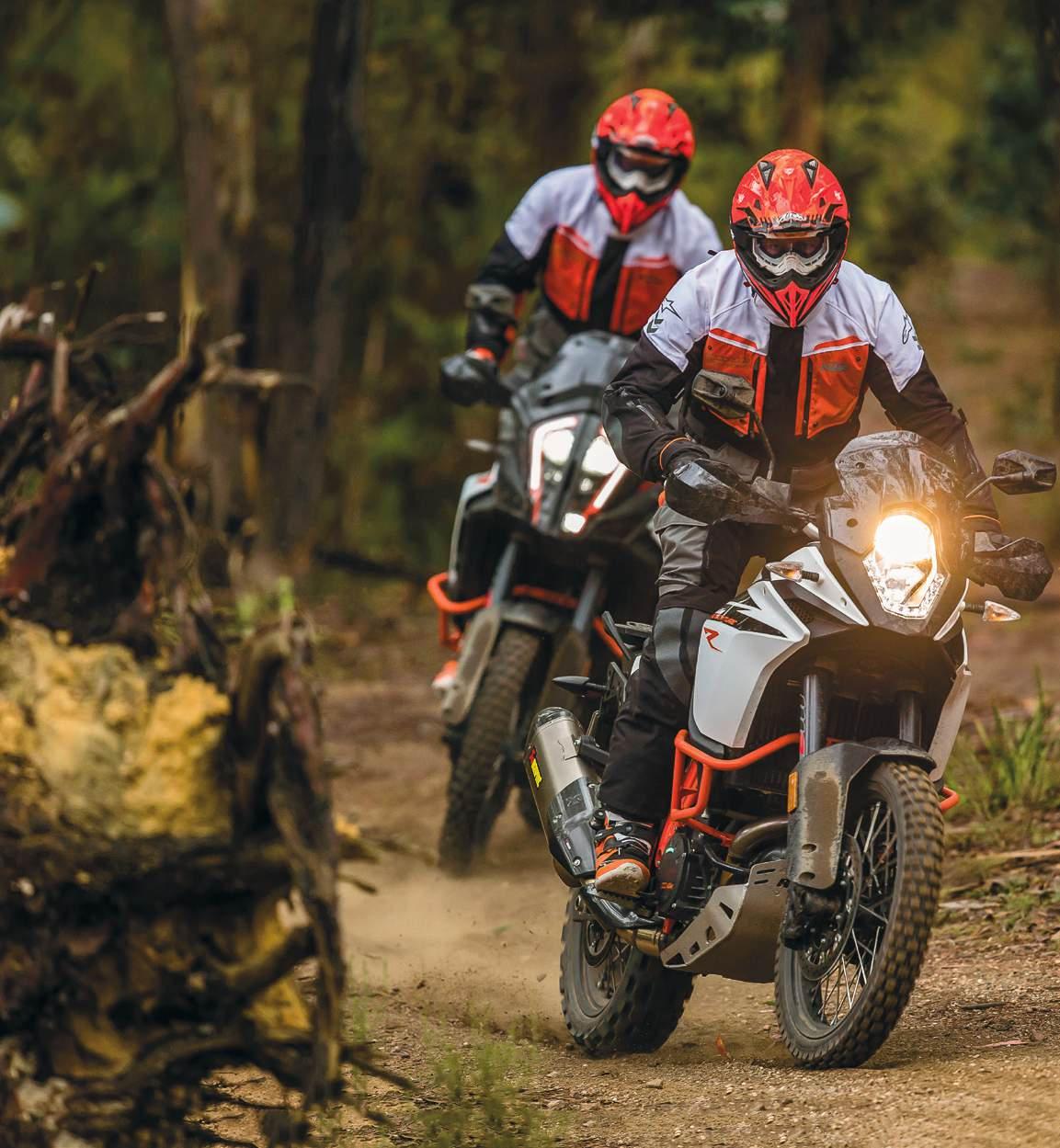


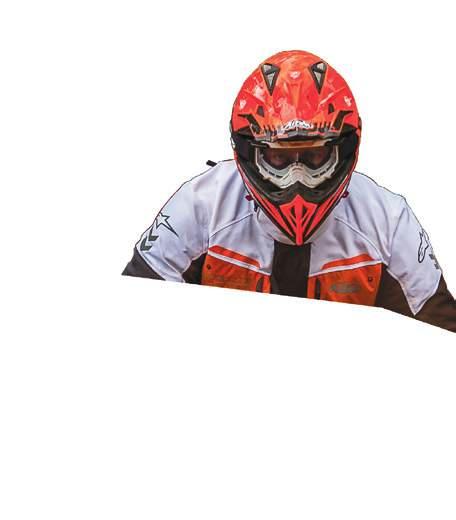

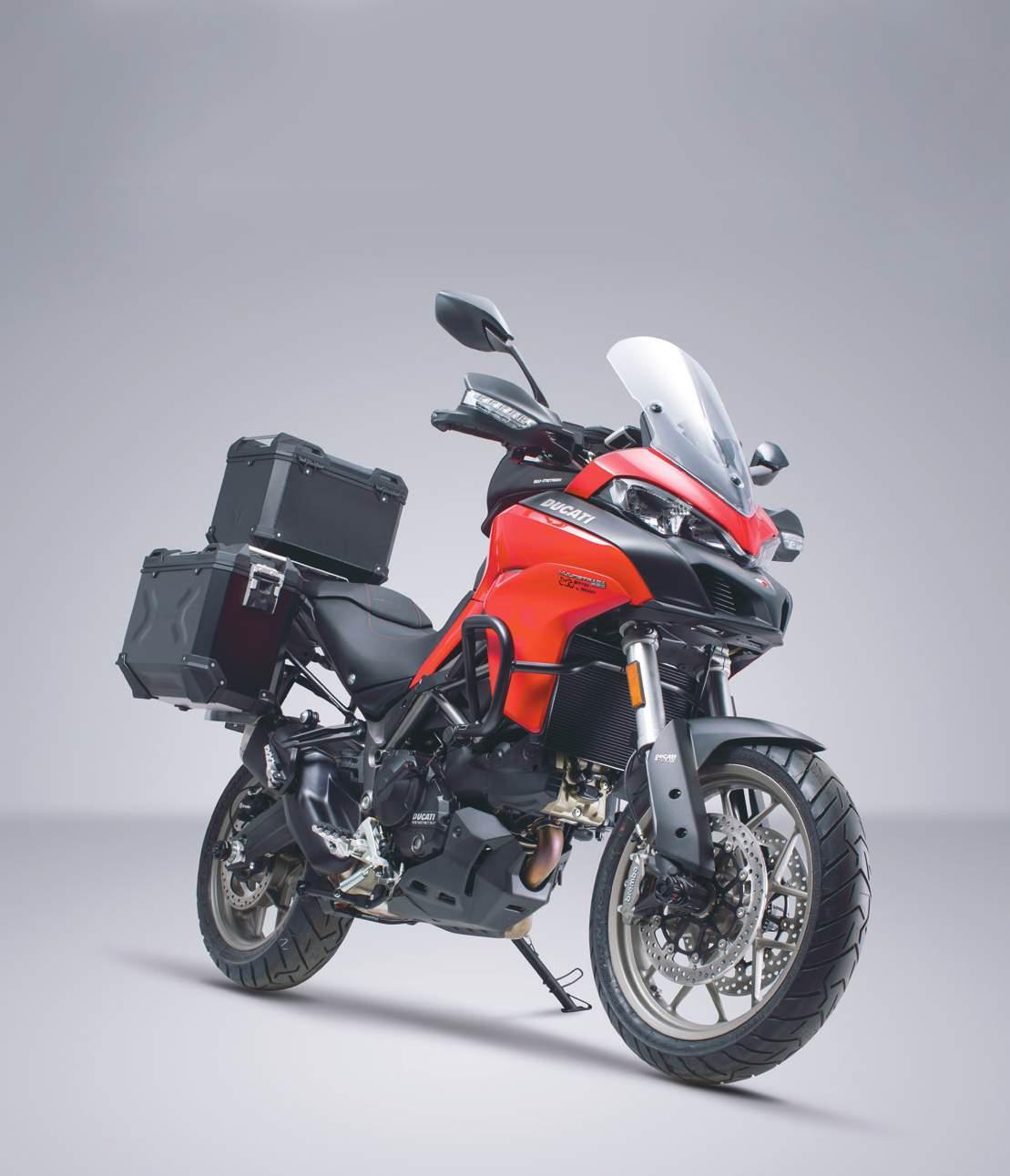
The Ducati Multistrada 950 is an awesome bike, as we found out this issue. The folks at Motorrad Garage have known about the 950 Multistrada for ages and already have some great gear for the bike. Check out this lot…



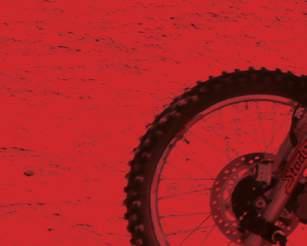


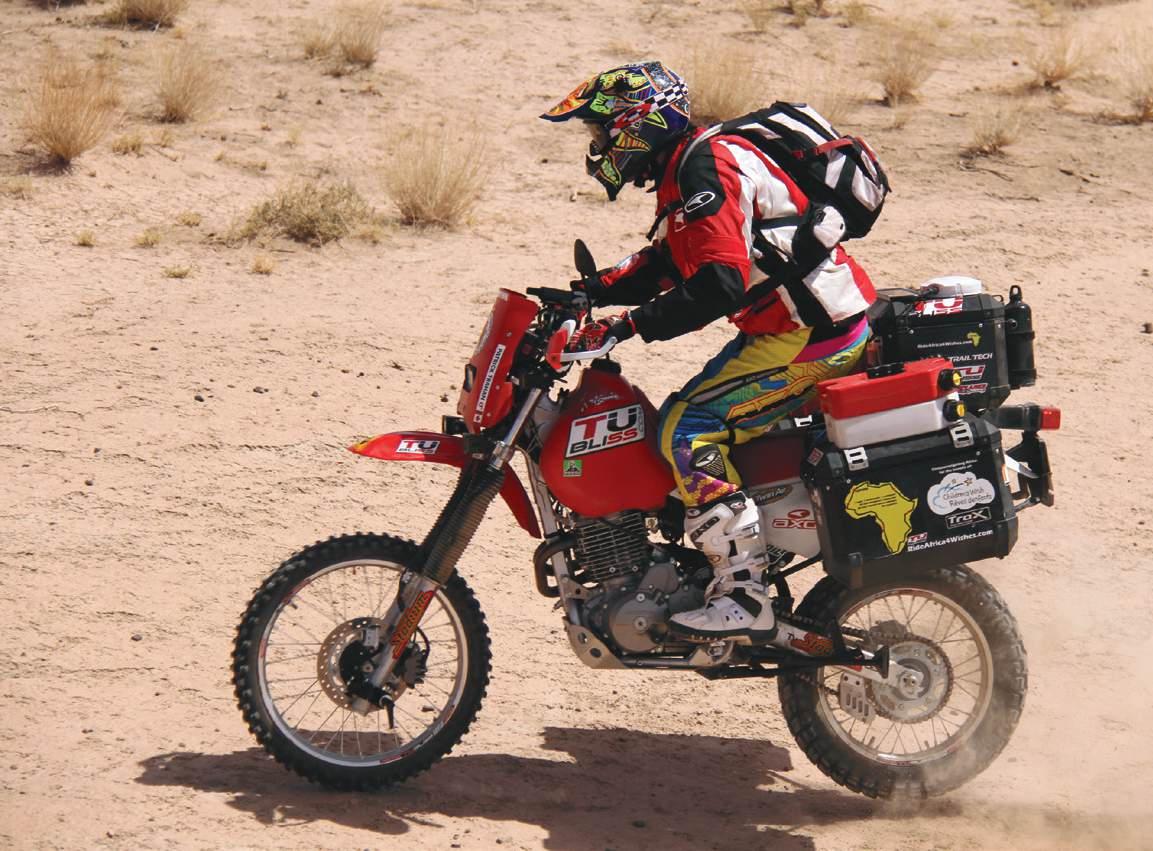
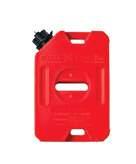

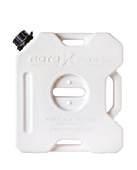
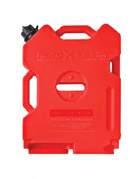
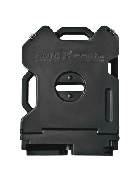
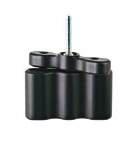

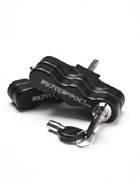
No matter where your journey takes you, make sure you have Rotopax on board for your fuel and water supplies.
The Rotopax 3 layer manufacturing process eliminates vapor permeation and creates the toughest fuel pack available. NO LEAKING, NO COLOUR FADING.
Cells can be carried inside panniers, strapped to a rack or fitted with Rotopax’s specific mounts, which also allow for cells to be mounted on top of each other.
Fuel cells are available from 3.7 to 15.1 litres and water cells from 3.7 to 7.5 litres.
MOTORRAD GARAGE - EXCLUSIVE AUSTRALIAN DISTRIBUTOR OF

